
Prologue: The Mystery of the Smile
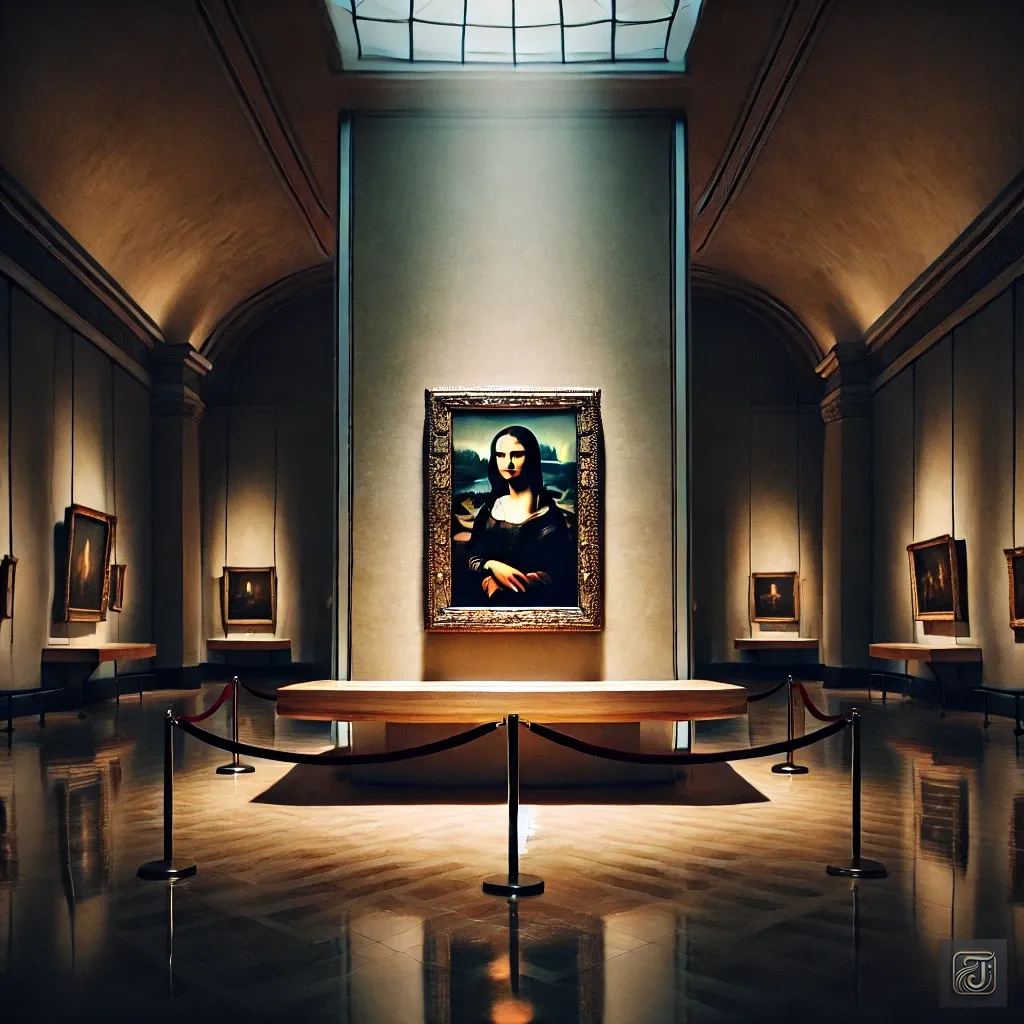
In a quiet room of the Louvre Museum, at the very heart of the stillness, a woman sits in silence, wearing an enigmatic smile.
Mona Lisa
Her smile has captivated people across centuries.
The portrait created by Leonardo da Vinci is more than just a painting.
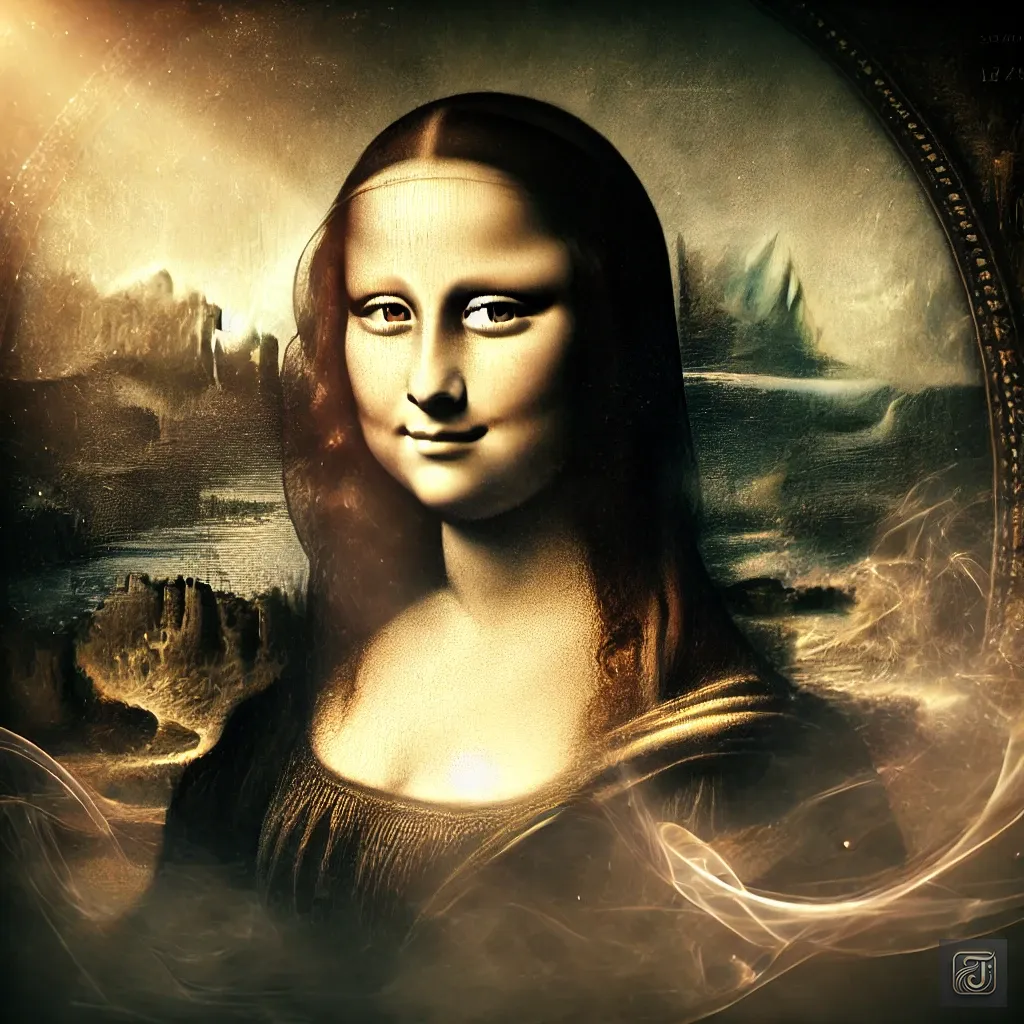
It evokes different emotions depending on the viewer, embracing countless interpretations with its aura of mystery.
Why does she smile?
Why has this painting continued to captivate people for over 500 years?
This is the story of a painting that has traveled a remarkable path through history.
And it seeks to uncover the timeless message hidden within her smile.
Chapter 1: The Smile of Florence
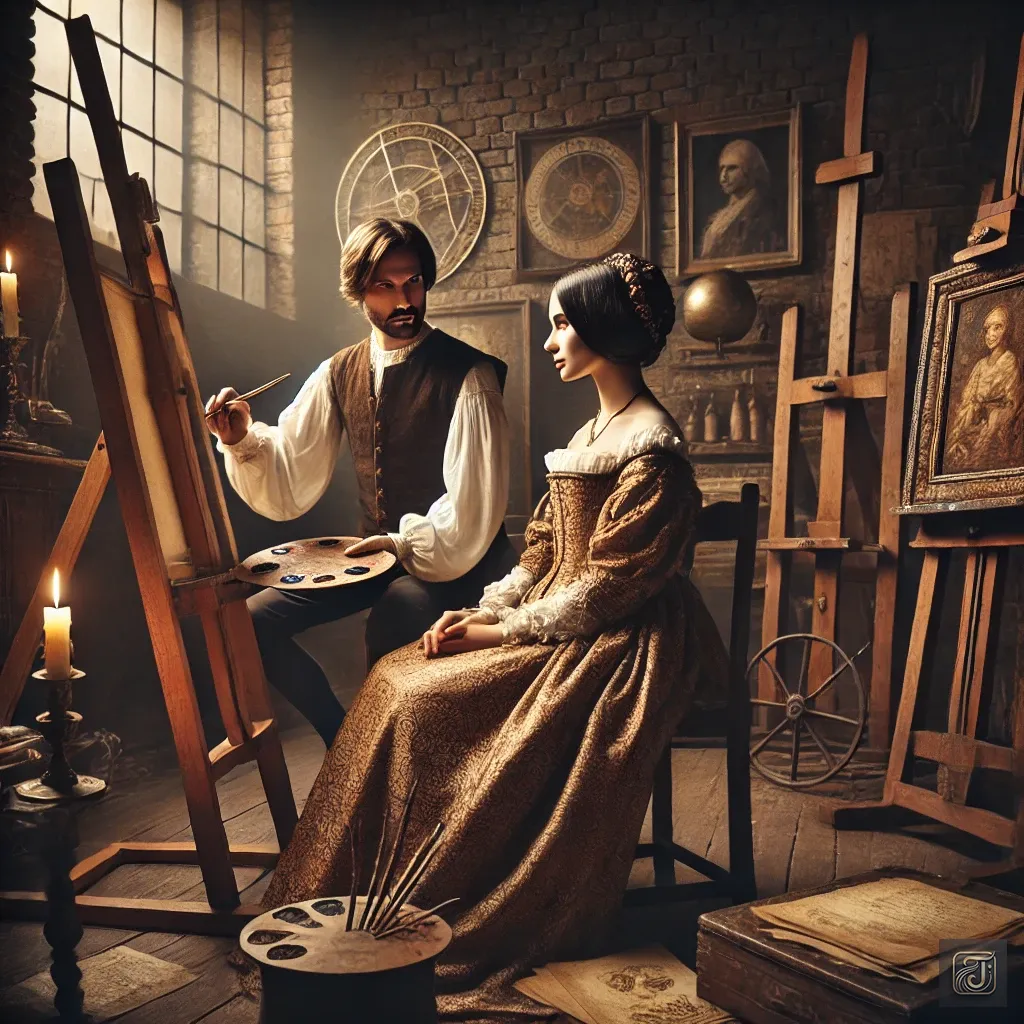
In the early 16th century in Florence, the painter and inventor Leonardo da Vinci was working on a commissioned portrait of a noblewoman.

The model was Lisa del Giocondo, the wife of Francesco del Giocondo, a wealthy merchant from Florence.

Lisa gazed into the painter’s eyes and smiled faintly.
Her smile carried a look that seemed to convey something to the artist sitting before her.
Leonardo, unaware of its true meaning, could do nothing but observe that enigmatic expression.

As if drawn to the mystery of the woman’s slightly enigmatic smile, Leonardo could not look away.
At that moment, Lisa’s expression shifted, as if she had suddenly recalled something.
A hint of longing flickered in her gaze.
It was as if her smile whispered,
“My expression has meaning, but what you perceive is entirely up to you.”
Leonardo captivated, observed her face intently, striving to capture every nuance of her expression.
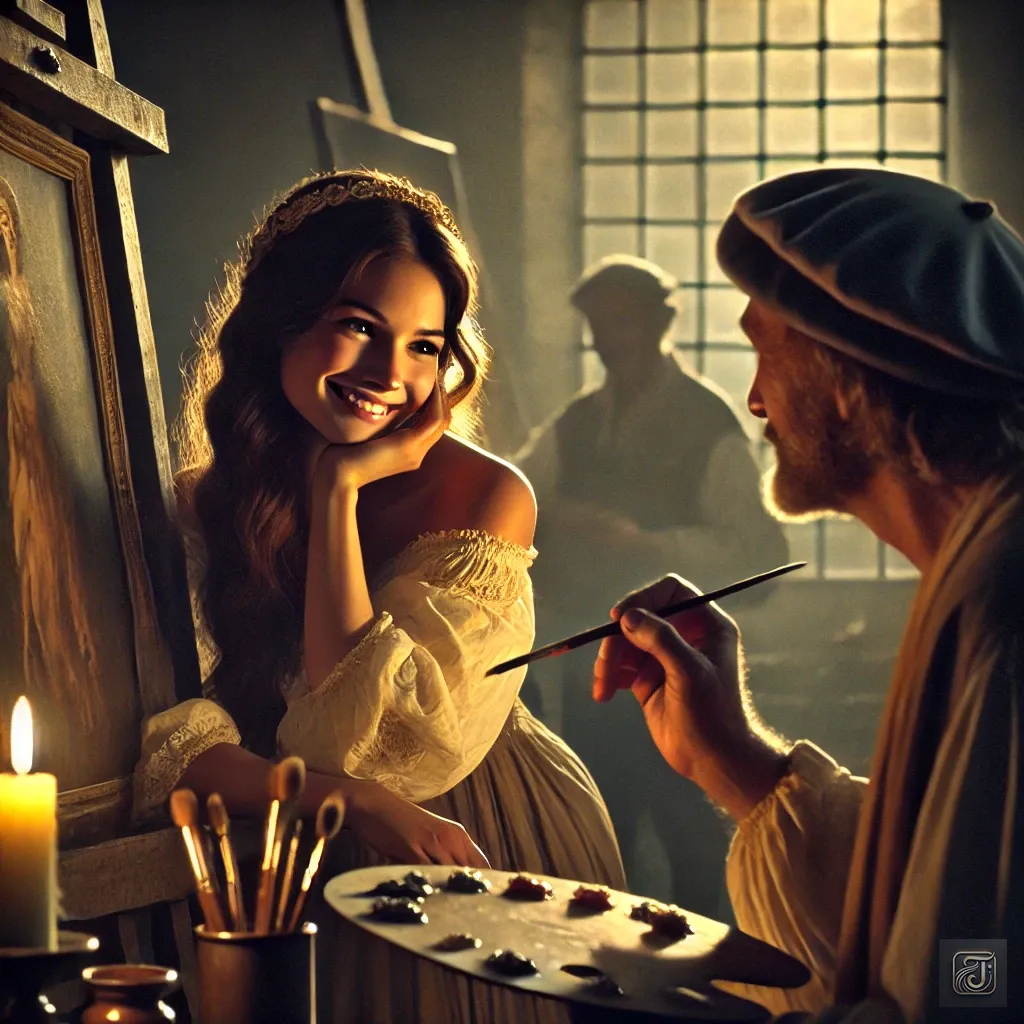
Lisa:
“You’re watching me a little too closely.”
Leonardo:
“I wish to preserve your beauty for eternity.”
With those words, he slowly moved his brush across the canvas.
Lisa responded with a graceful smile.
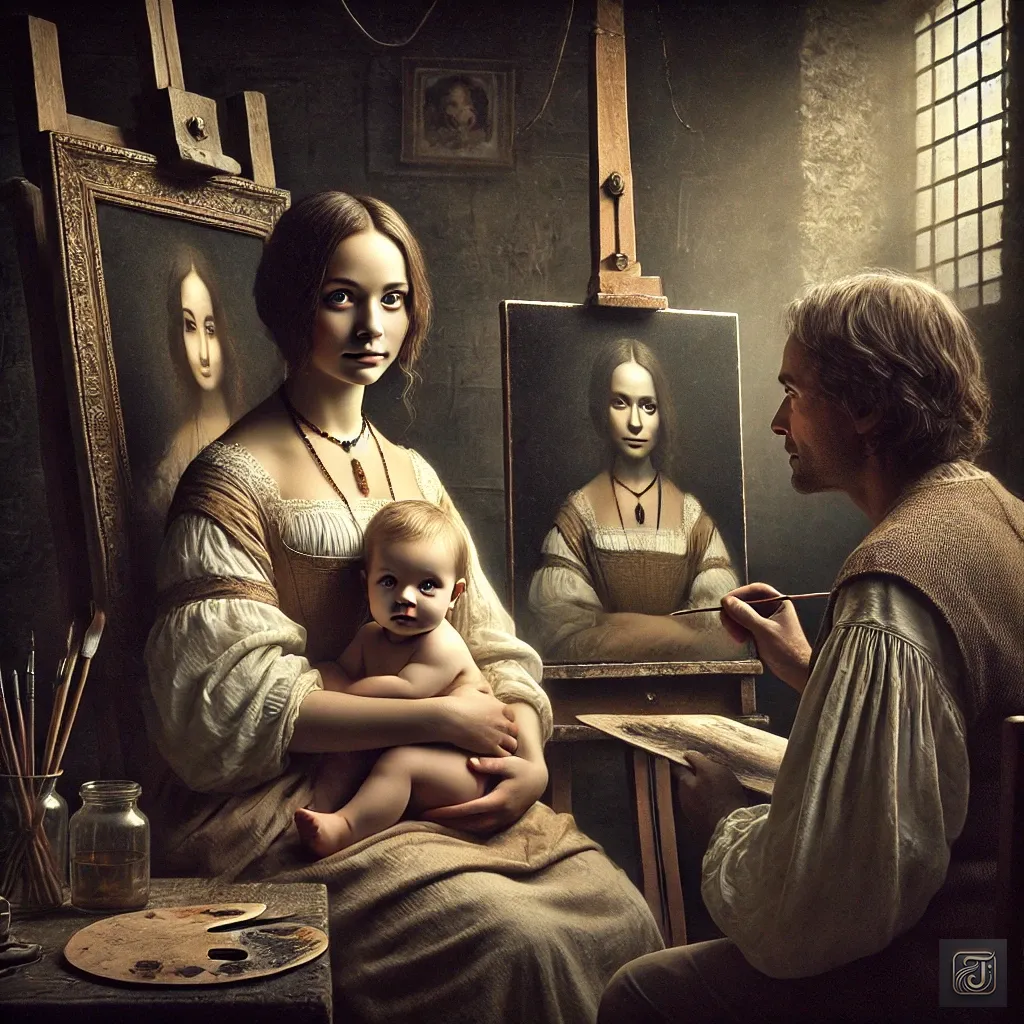
In her eyes, there was both the tender love of a mother raising her young children and a quiet intelligence.
As Lisa gracefully held her familiar maternal posture, she could not ignore the emotions welling up inside her,
knowing that her image, captured by the strokes of this artist’s brush, would become something eternal.
Leonardo sought not just to paint a portrait, but to capture the depths of her soul.
Yet, for some reason, he never completed the painting and kept it with him for the rest of his life.
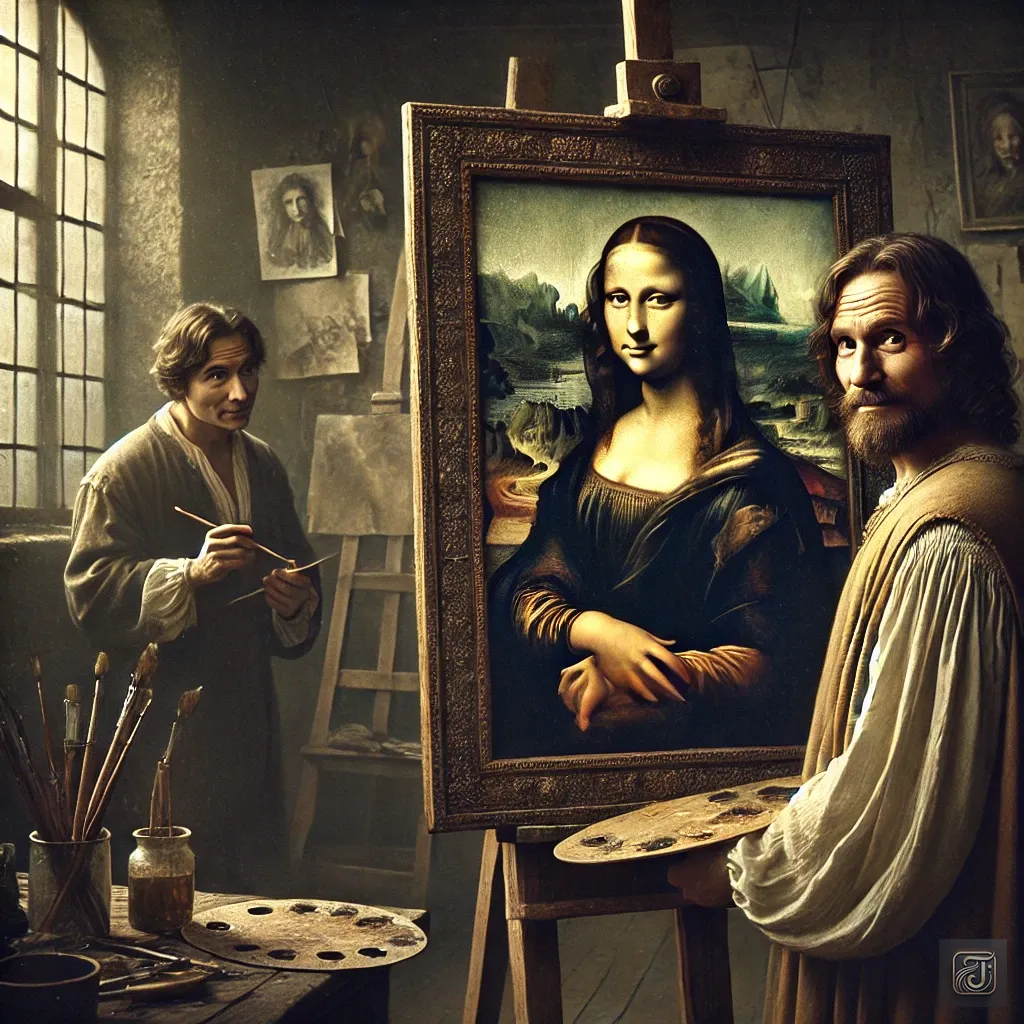
Salai:
“Why didn’t you give it to the client?”
Leonardo:
“There is a secret hidden within her smile.”
“But I have yet to uncover it.”
“That means this painting is still unfinished.” Is
“Salai, I do not intend to let this remain just another portrait.”
“I am trying to create a ‘smile that will last forever.’”
Chapter 2: The Traveling Masterpiece
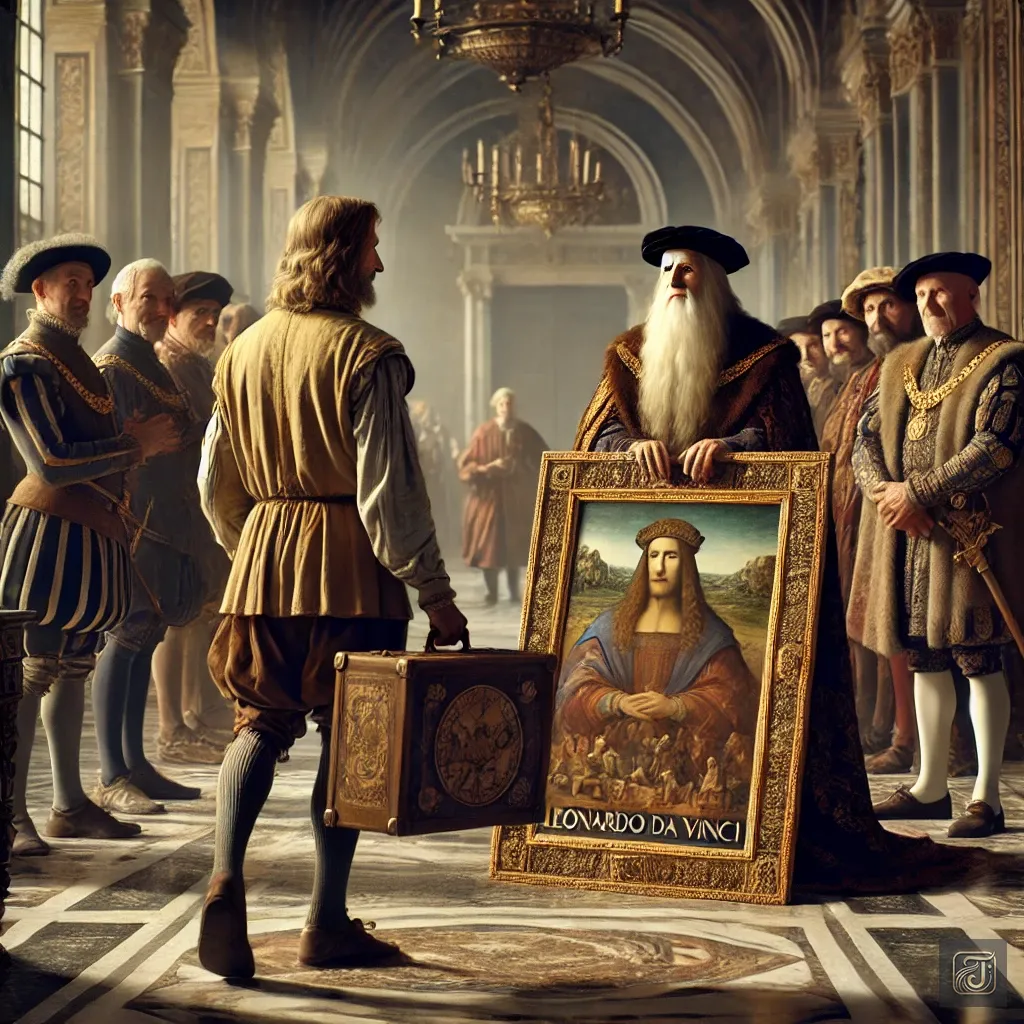
As the years passed, Leonardo set off for France, carrying the painting with him.
He had been invited by King Francis I of France and spent his final years as a court artist.
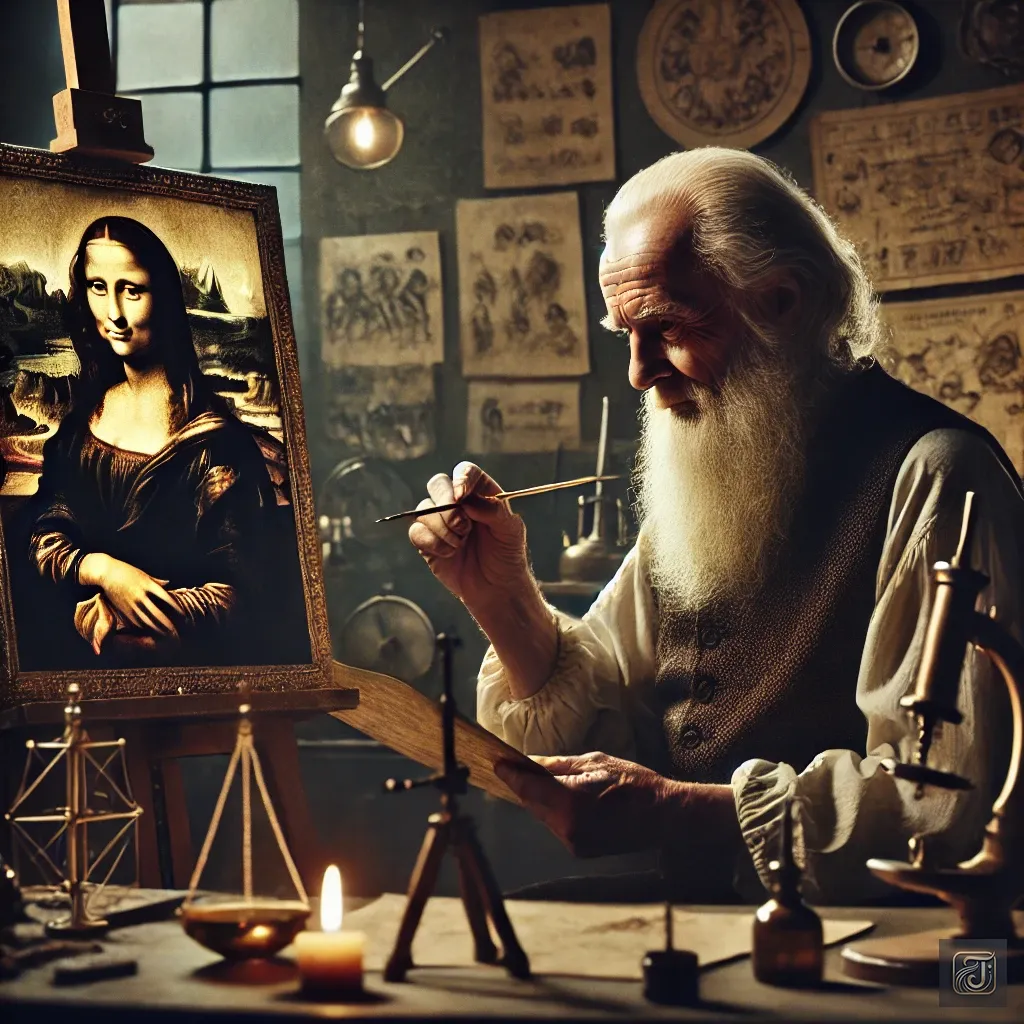
While continuing his studies in invention and anatomy as he had in the past, Leonardo kept Mona Lisa close at hand.
From time to time, he would gaze at her enigmatic smile, making subtle adjustments to the painting.
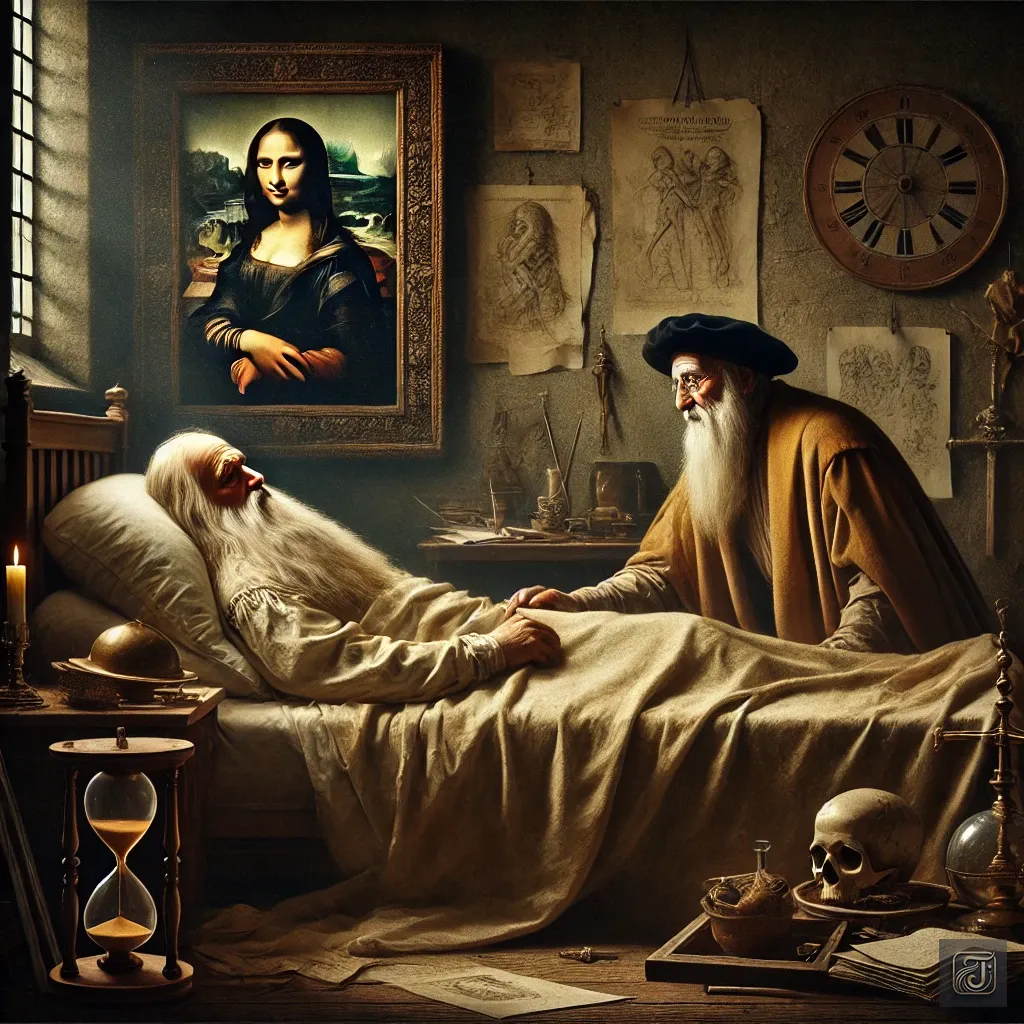
In 1519, Leonardo quietly took his last breath.
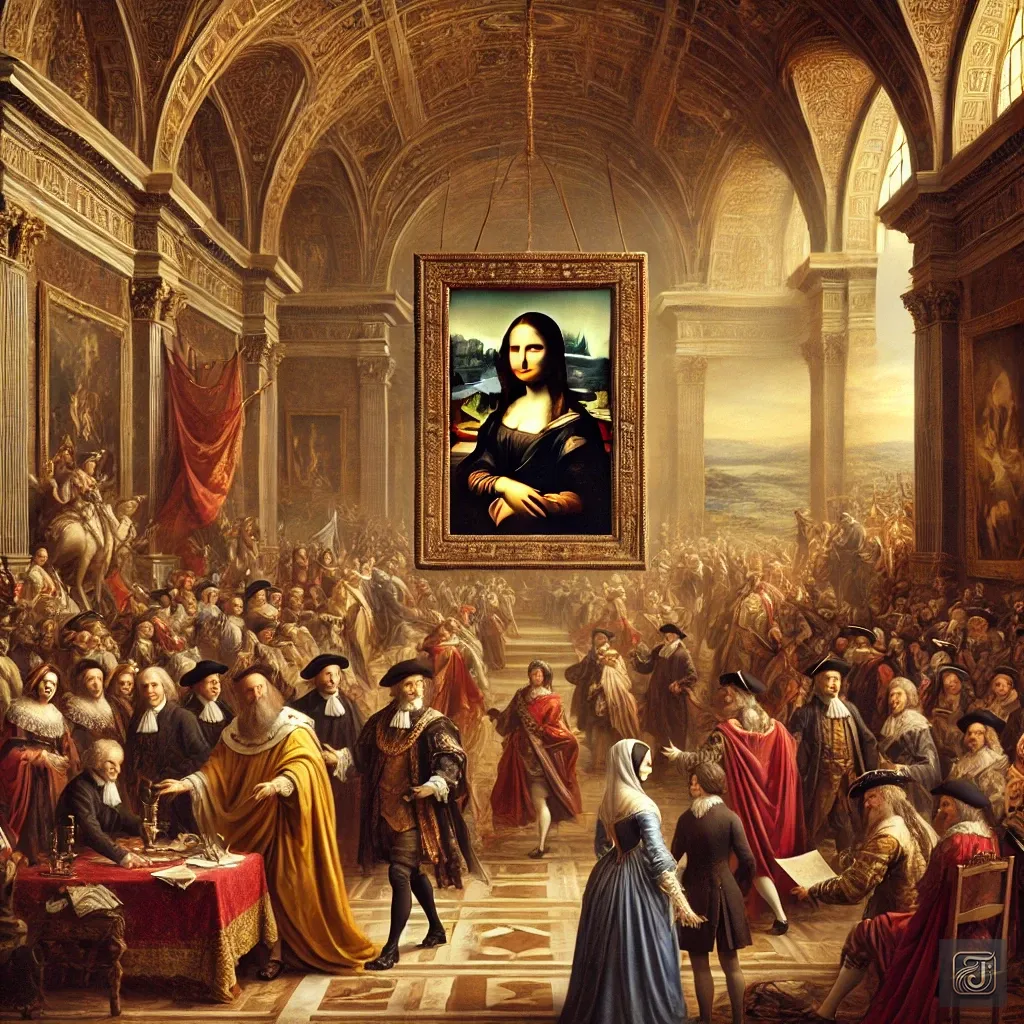
After his death, the Mona Lisa became part of the French king’s collection.
It later passed through the Palace of Versailles before being placed in the Louvre Museum after the French Revolution.
However, Mona Lisa’s journey did not end there.
Chapter 3: The Smile Loved by an Emperor
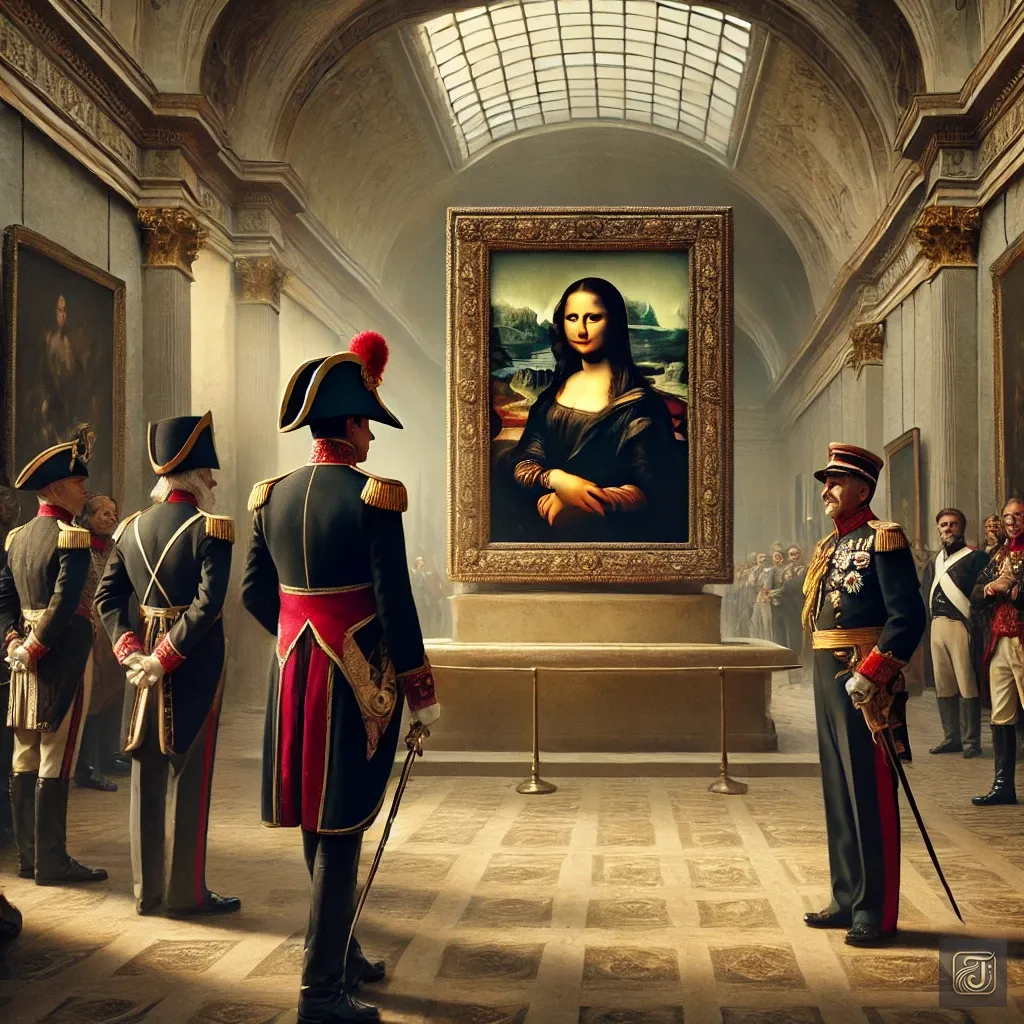
In the early 19th century, Napoleon Bonaparte, Emperor of the French, visited the Louvre Museum.

Napoléon Bonaparte(1769-1821)
Napoleon Bonaparte was a French military leader, politician, and emperor who rose to power after the French Revolution.
He established the First French Empire (1804–1814, 1815).
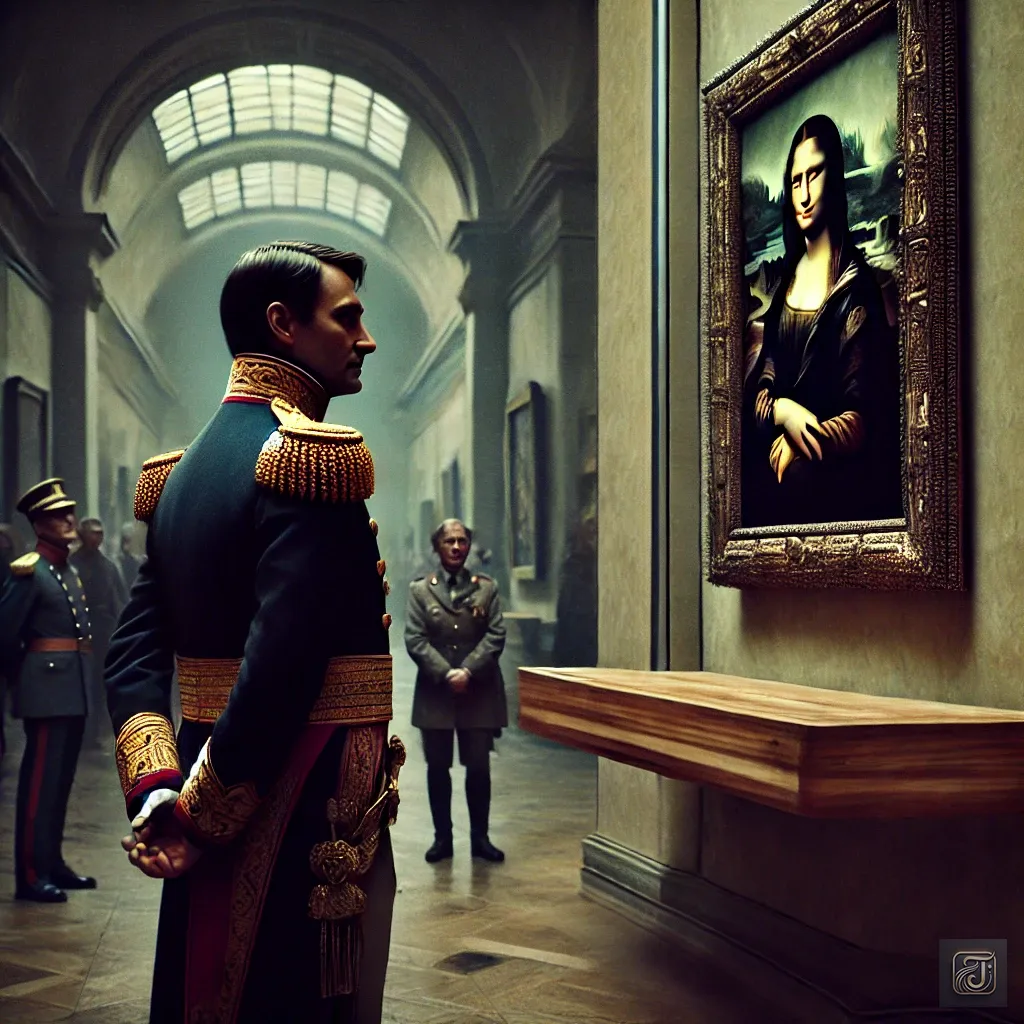
Napoleon Bonaparte:
“This is the Mona Lisa…”
He gazed intently at the painting.
His expression was not the sharp, commanding look of a battlefield strategist, but rather one of quiet nostalgia.
Napoleon paused his work, his eyes fixed on the portrait.
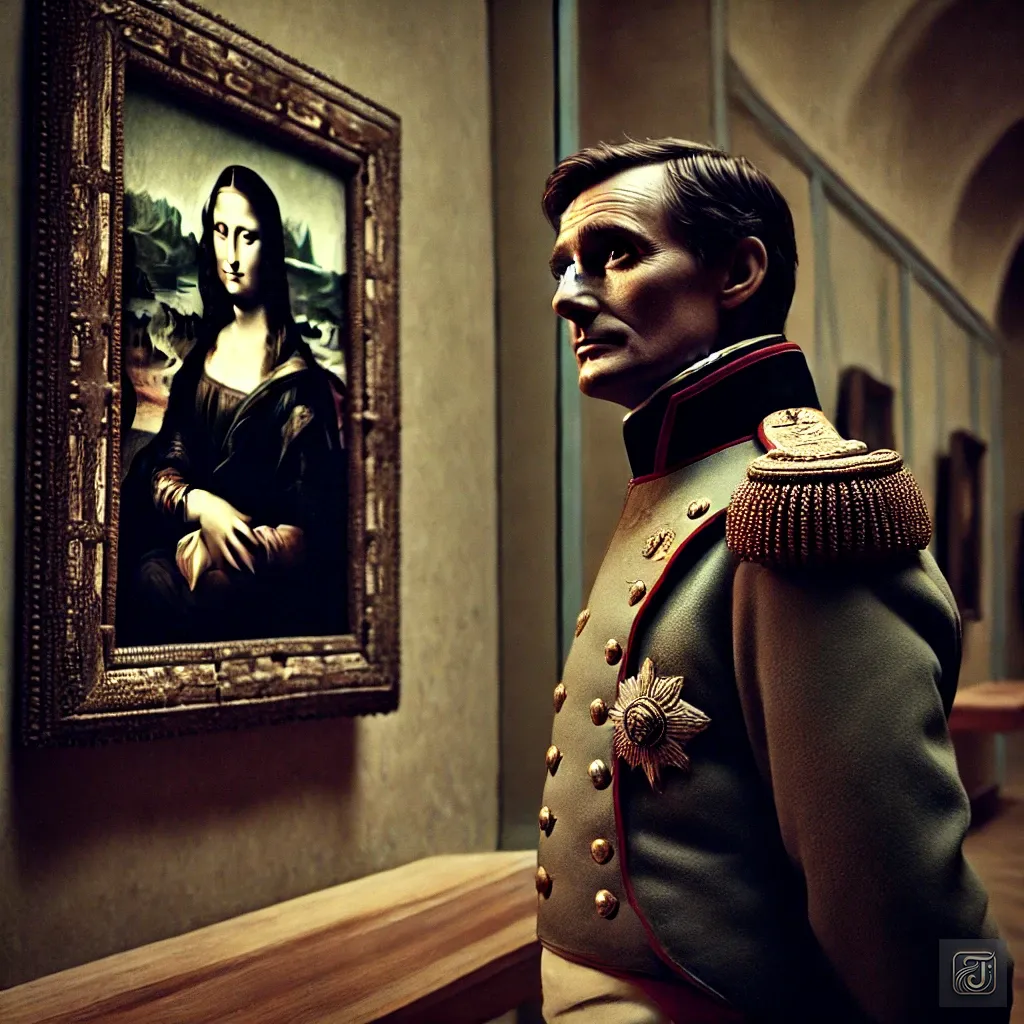
Napoleon Bonaparte:
“This smile… It’s as if she is testing me.”
Napoleon was more captivated by this single painting than ever before.
Then, he gave an order.
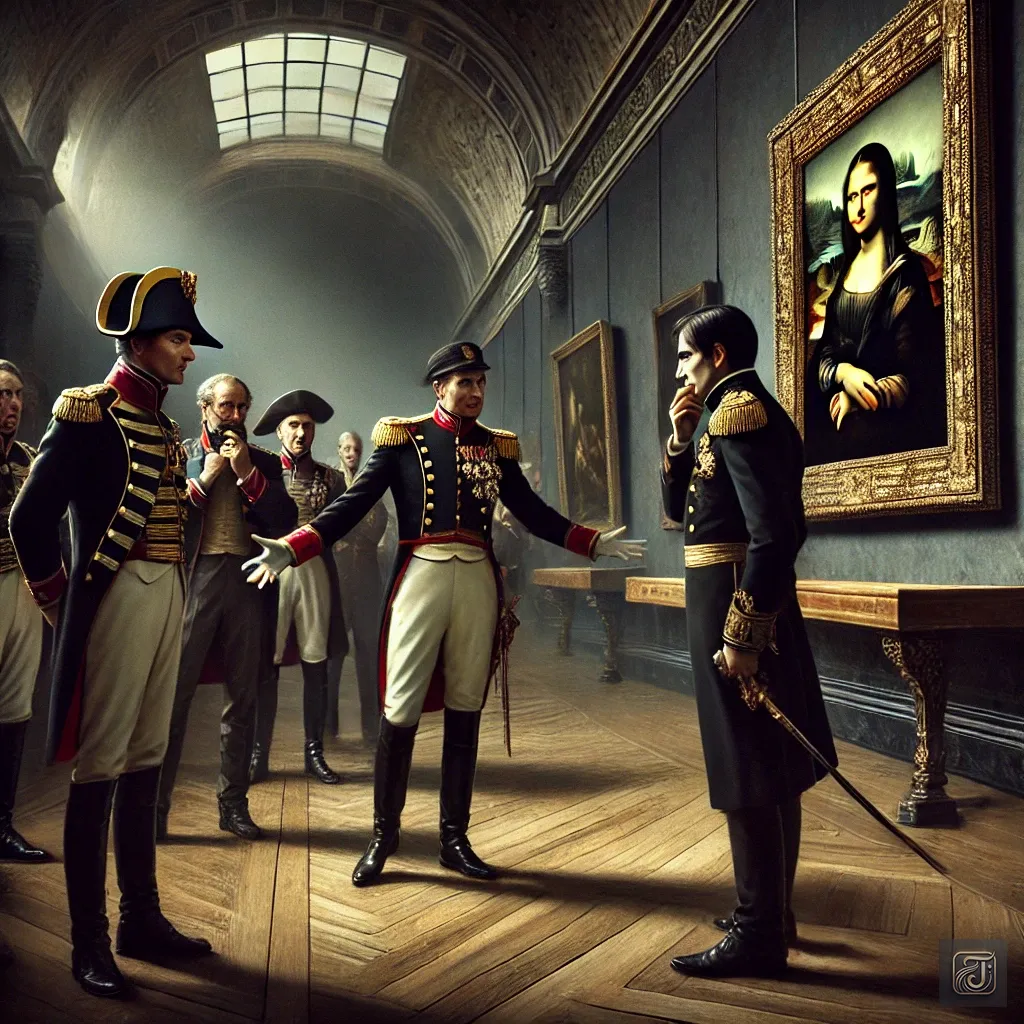
Napoleon Bonaparte:
“Take this painting to the Tuileries Palace.”
“Hang it in my bedroom.”
His attendants were surprised, but no one could defy the emperor’s orders.
And so, the Mona Lisa was removed from the Louvre and placed in Napoleon’s private chambers.
That night, alone in his bedroom, Napoleon sat in solitude with the Mona Lisa.
He then asked the painting a question.
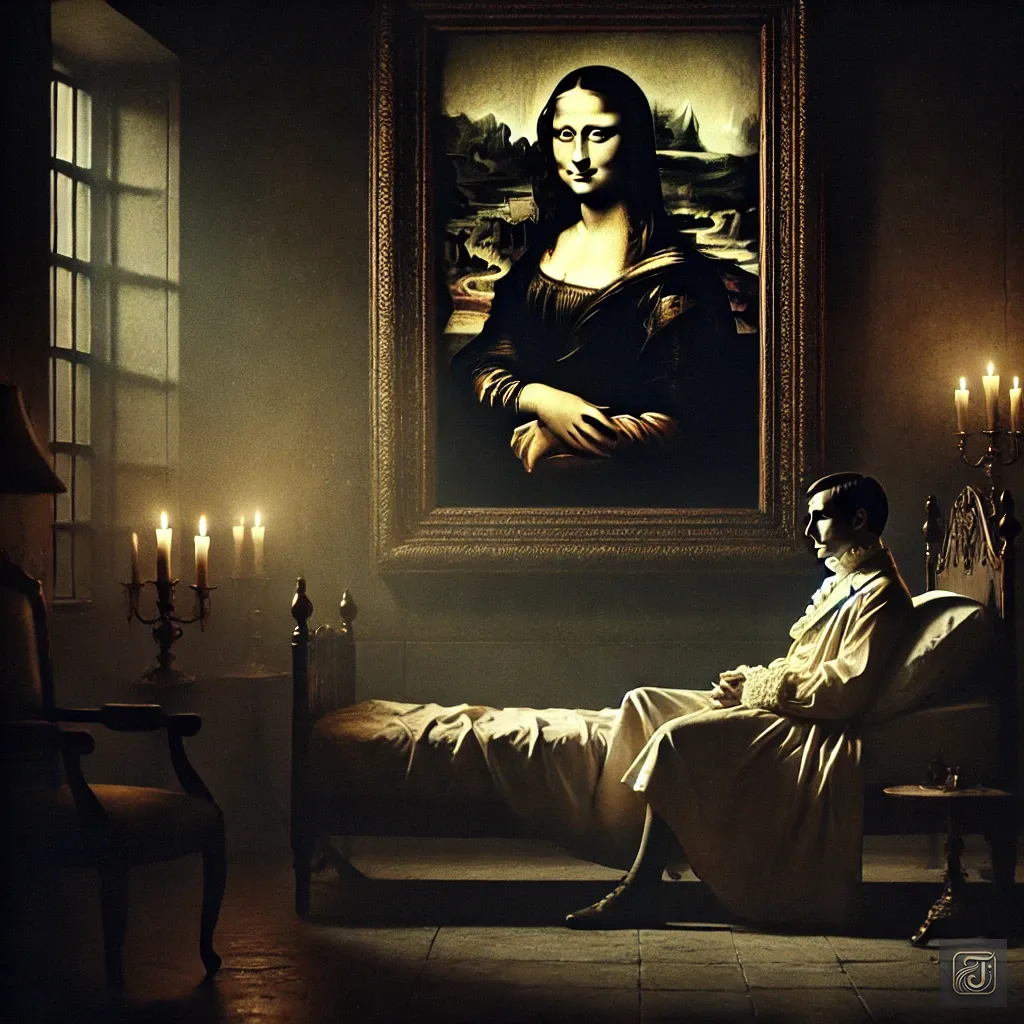
Napoleon Bonaparte:
“Are my actions truly just?”
But Mona Lisa only smiled in response.
She never revealed an answer, and instead, the question reflected back at him, like a mirror.
It lingered in his mind, like an unsolved mystery without an answer.
For a time, Mona Lisa remained in the emperor’s bedroom, silently watching over him.
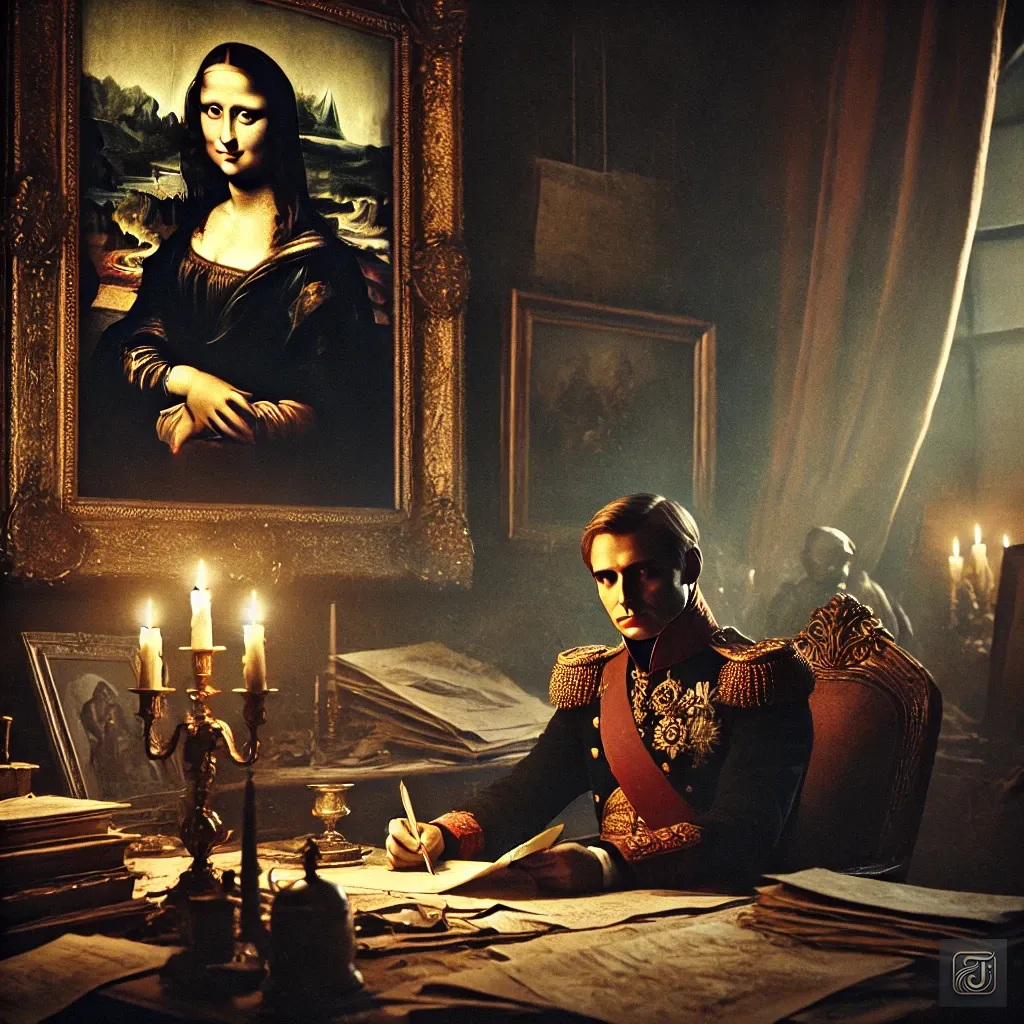
Napoleon Bonaparte:
“On nights when I am weary from battle, I glance at her—always there, smiling as if she knows everything.”
“Yet she has never once given me an answer.”
It is said that Napoleon often spoke to the Mona Lisa late into the night.
Whether planning his strategies or drowning in exhaustion, perhaps he was searching for something within that enigmatic portrait.
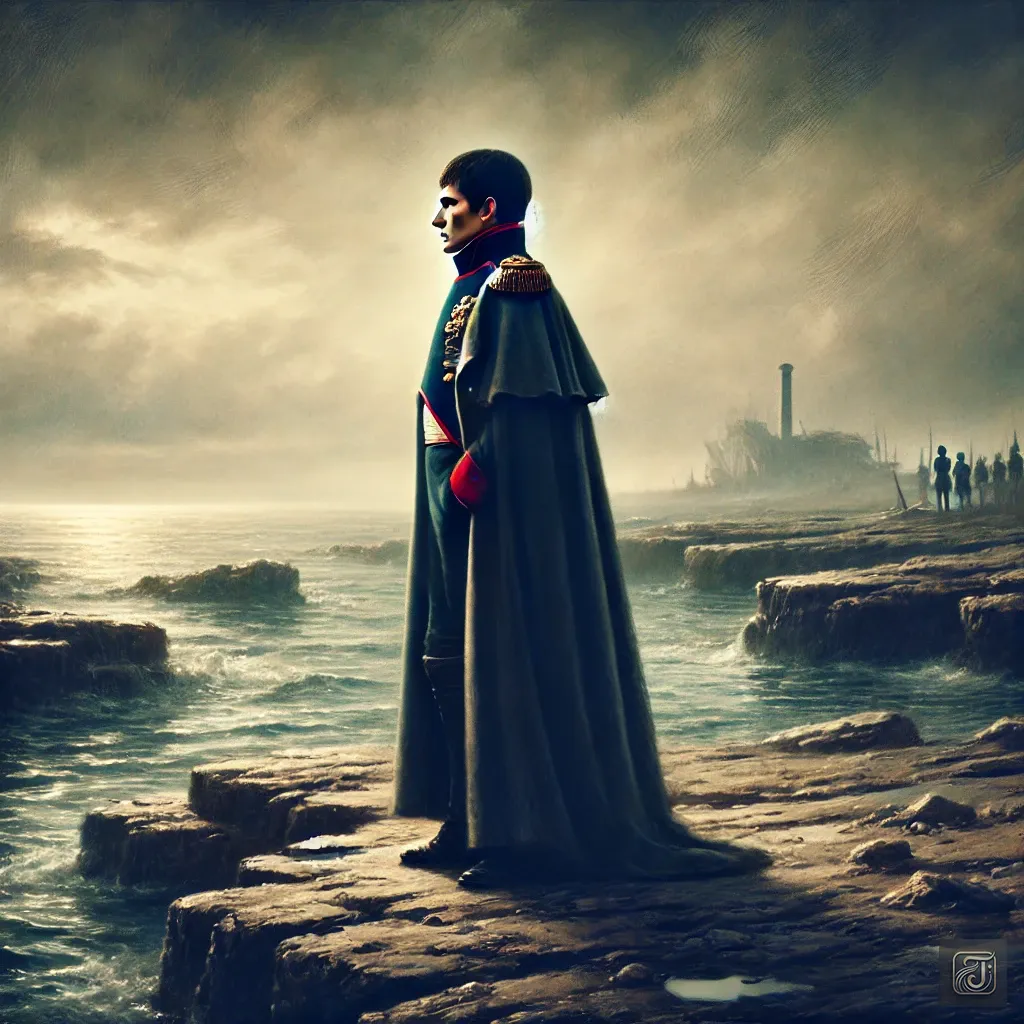
However, in time, Napoleon fell from power and was sent into exile.
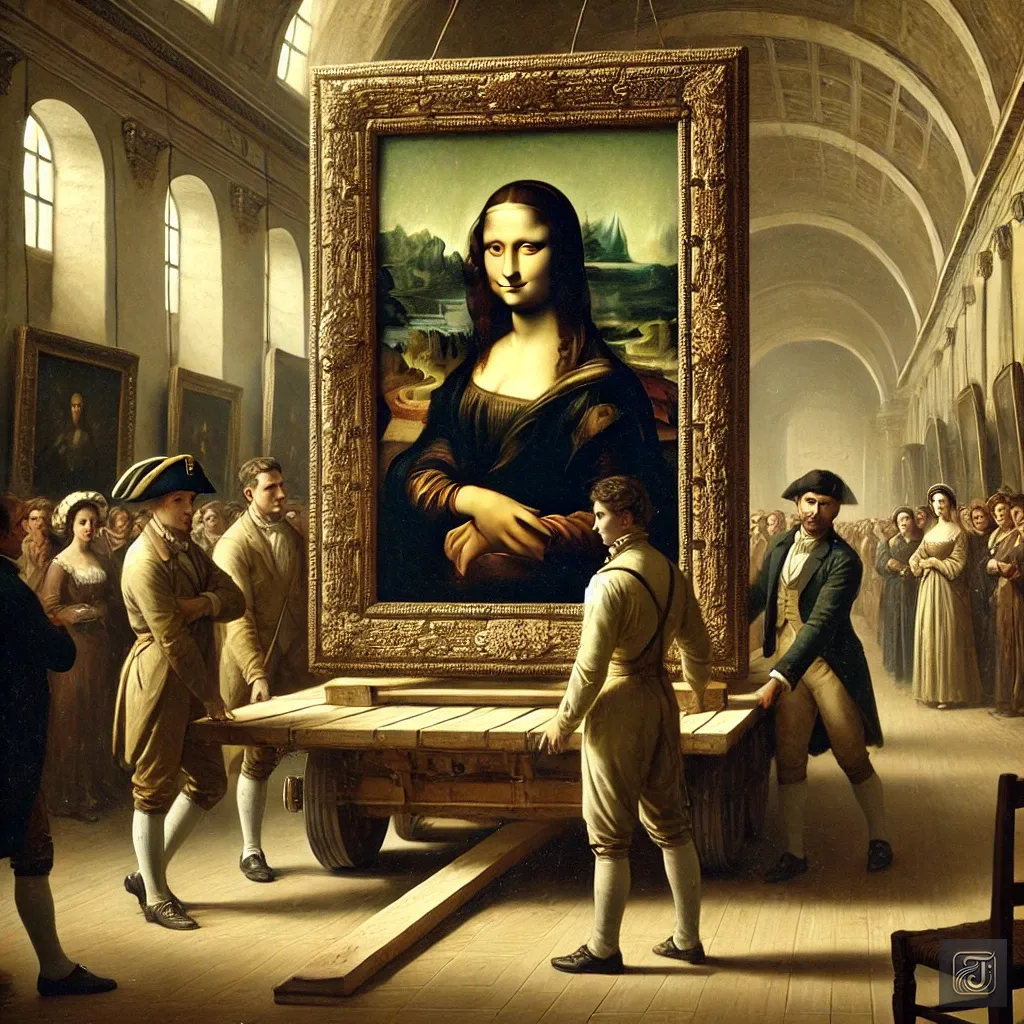
After his departure, the Mona Lisa was returned to the Louvre Museum once again.
However, this episode added a new legend to her history.
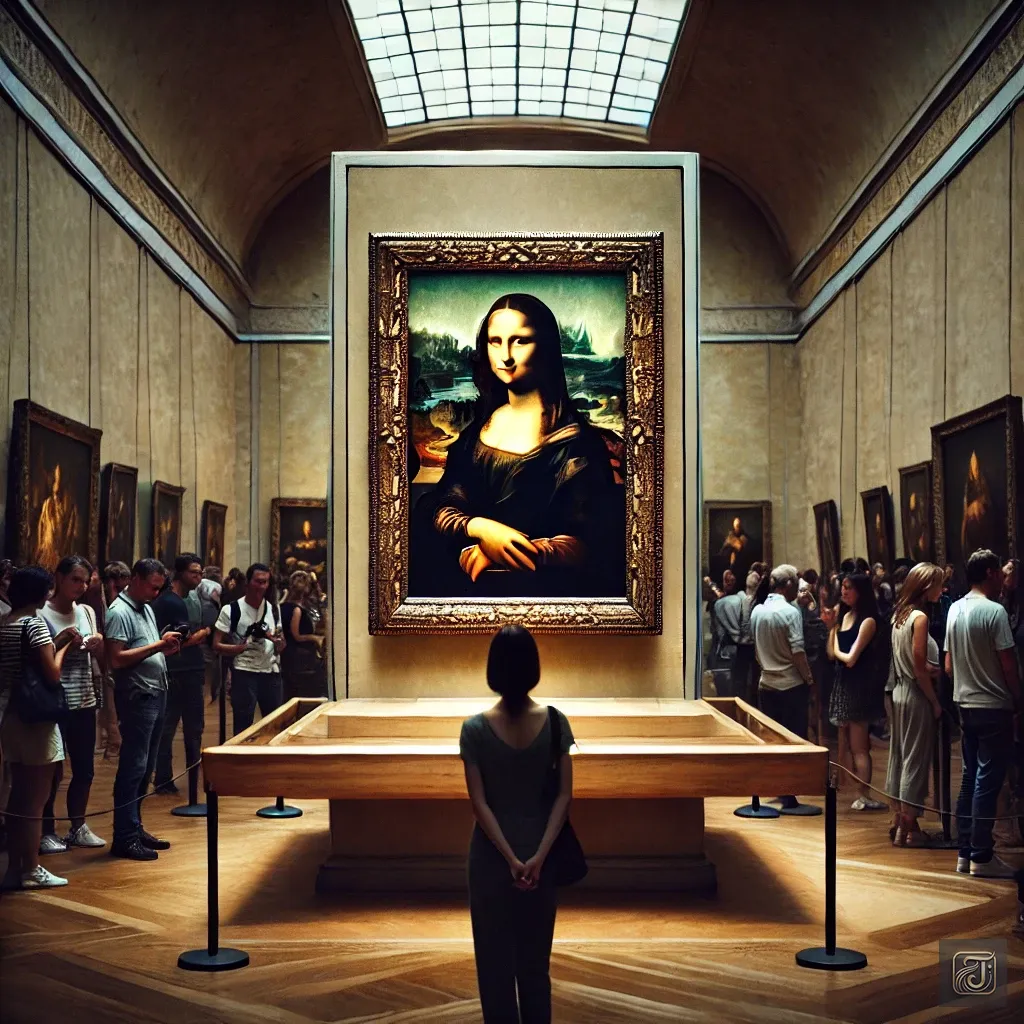
Mona Lisa has silently witnessed the rise and fall of many throughout history.
Napoleon was merely one of them.
The smile once adored by a French emperor—
The very same smile that captivated him remains unchanged, watching over the world to this day.
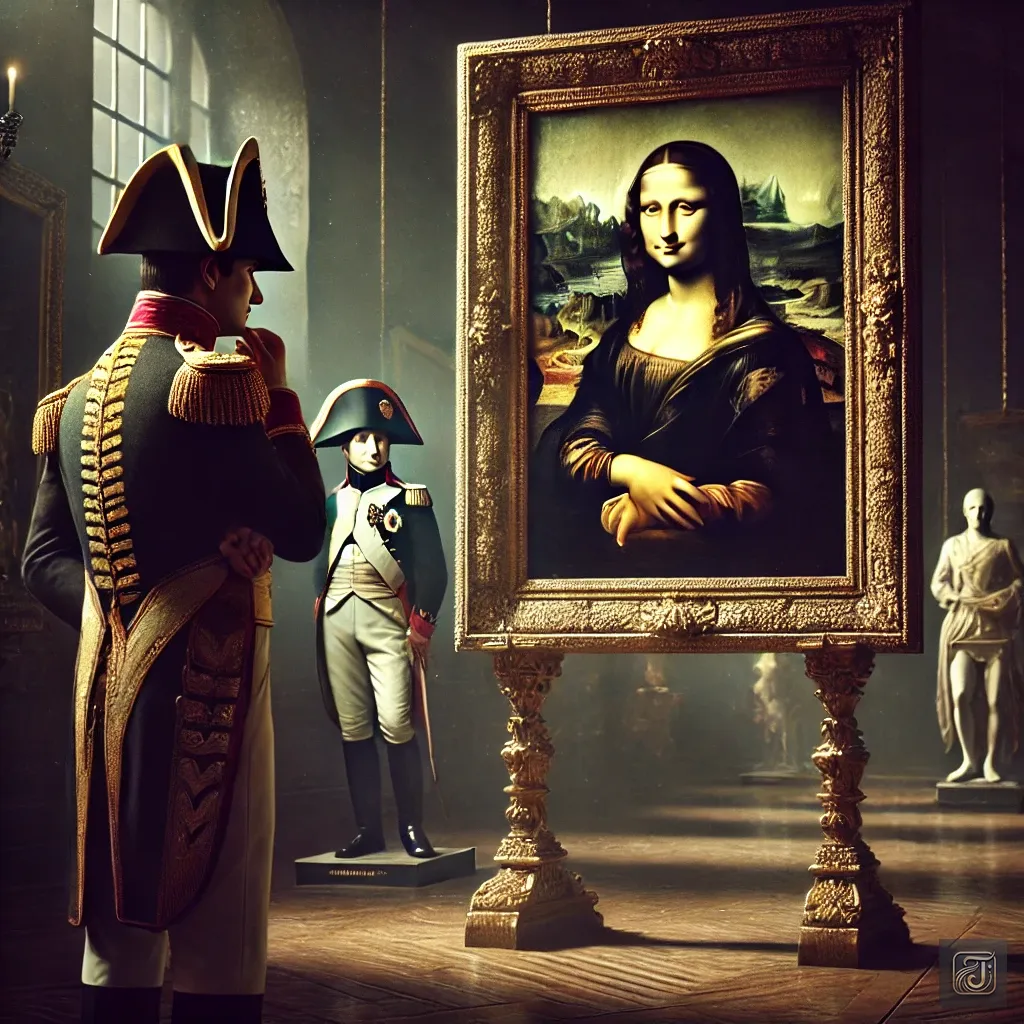
Napoleon Bonaparte, while building his French Empire, also showed a deep interest in collecting artwork.
Records suggest that he was strongly drawn to the Mona Lisa and temporarily had it moved to the Tuileries Palace.
However, there is no definitive proof of this, and whether he truly gazed upon the painting in his private chambers remains a subject of debate.
Even so, one thing is certain—Napoleon was captivated by that mysterious smile.
He expanded the Louvre Museum, filling it with countless works of art.
Among them, the Mona Lisa may have held a special place in his heart.
Chapter 4: The Stolen Mona Lisa
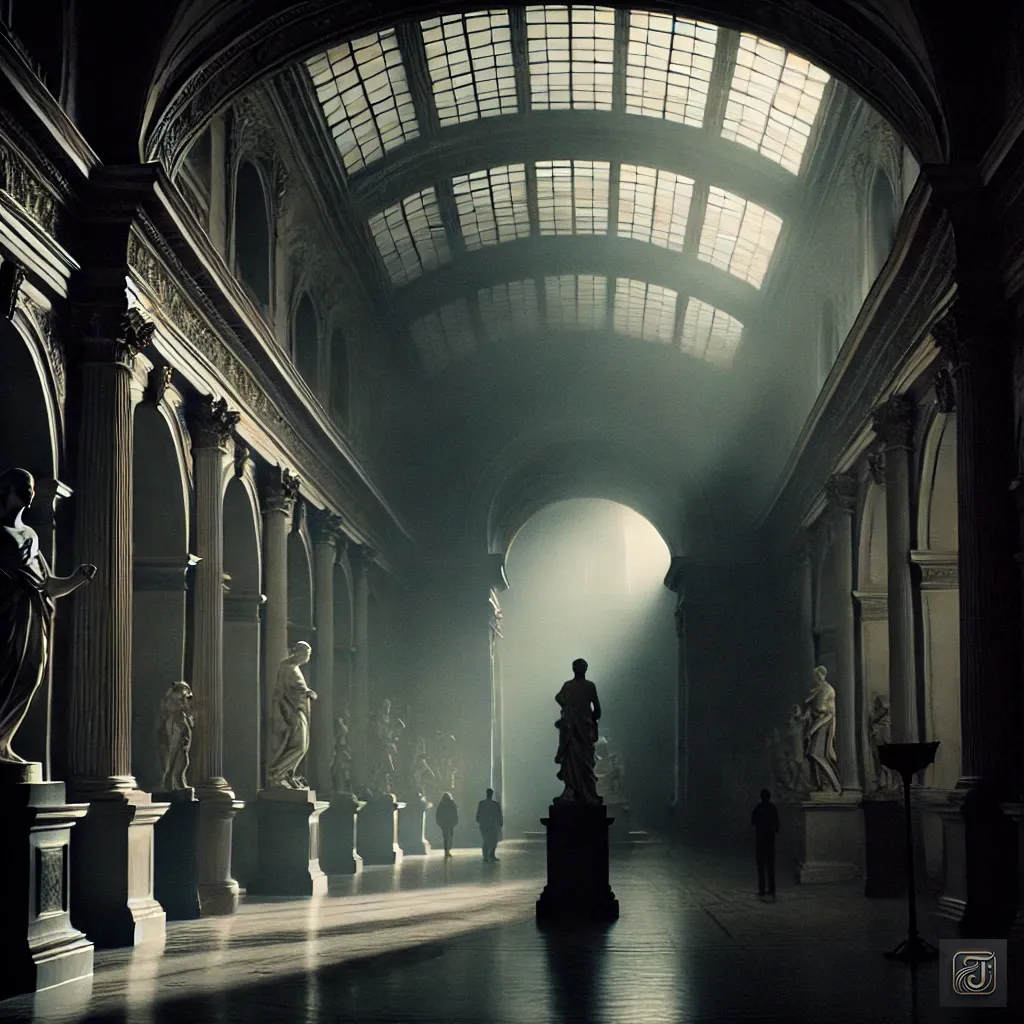
In the early hours of August 21, 1911, a heavy silence filled the hallways of the Louvre Museum.
Moonlight cast a faint glow over the dim corridors, causing the shadows of statues to flicker against the walls.
The remnants of the night lingered, leaving the museum in an eerie stillness.
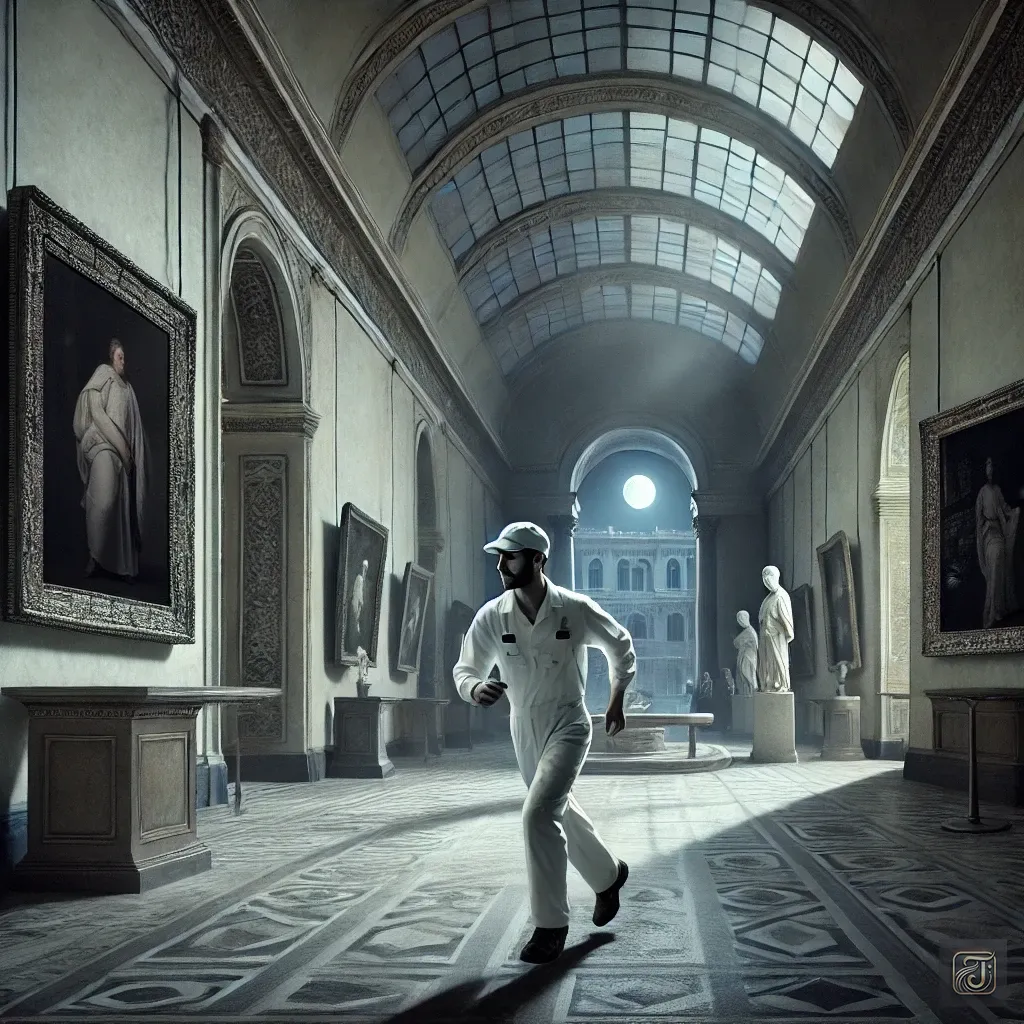
A man dressed in a white worker’s uniform moved silently through the halls, his footsteps barely making a sound as he approached the exhibition room.
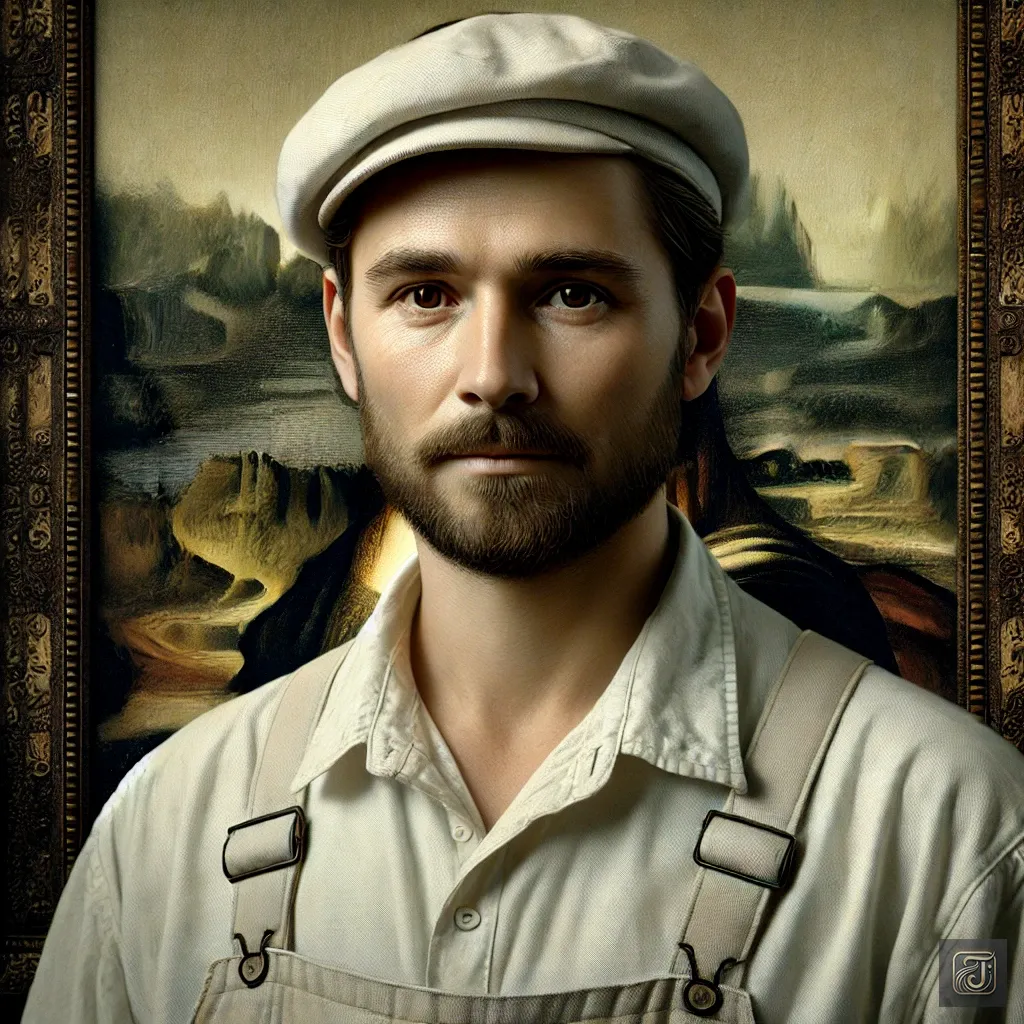
Vincenzo Peruggia
A former Louvre employee, and today, he was about to etch his name into history.
He believed that the Mona Lisa was an Italian masterpiece and rightfully belonged in Italy.
Aware of France’s history of looting Italian artwork during the Napoleonic era, he was convinced that the Mona Lisa was one of those stolen pieces.
Driven by a strong sense of mission, he felt that “Mona Lisa must be returned to Italy!”
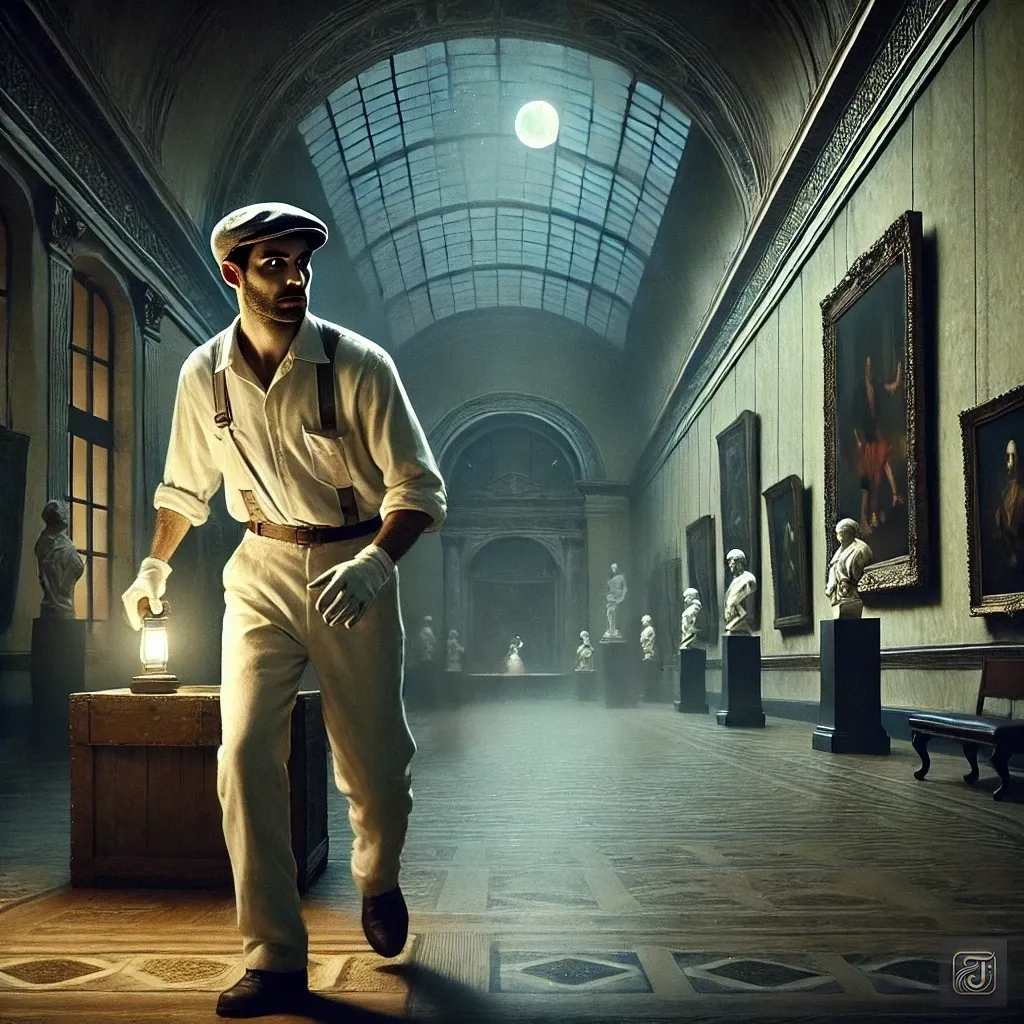
He had once worked on restoration projects at the Louvre, giving him an intimate knowledge of its layout.
In his hand, he held a key—one he had acquired during his time working on the museum’s repairs.
Carefully, he inserted it into the keyhole, holding his breath.
A faint click echoed in the silence, and the door creaked open.
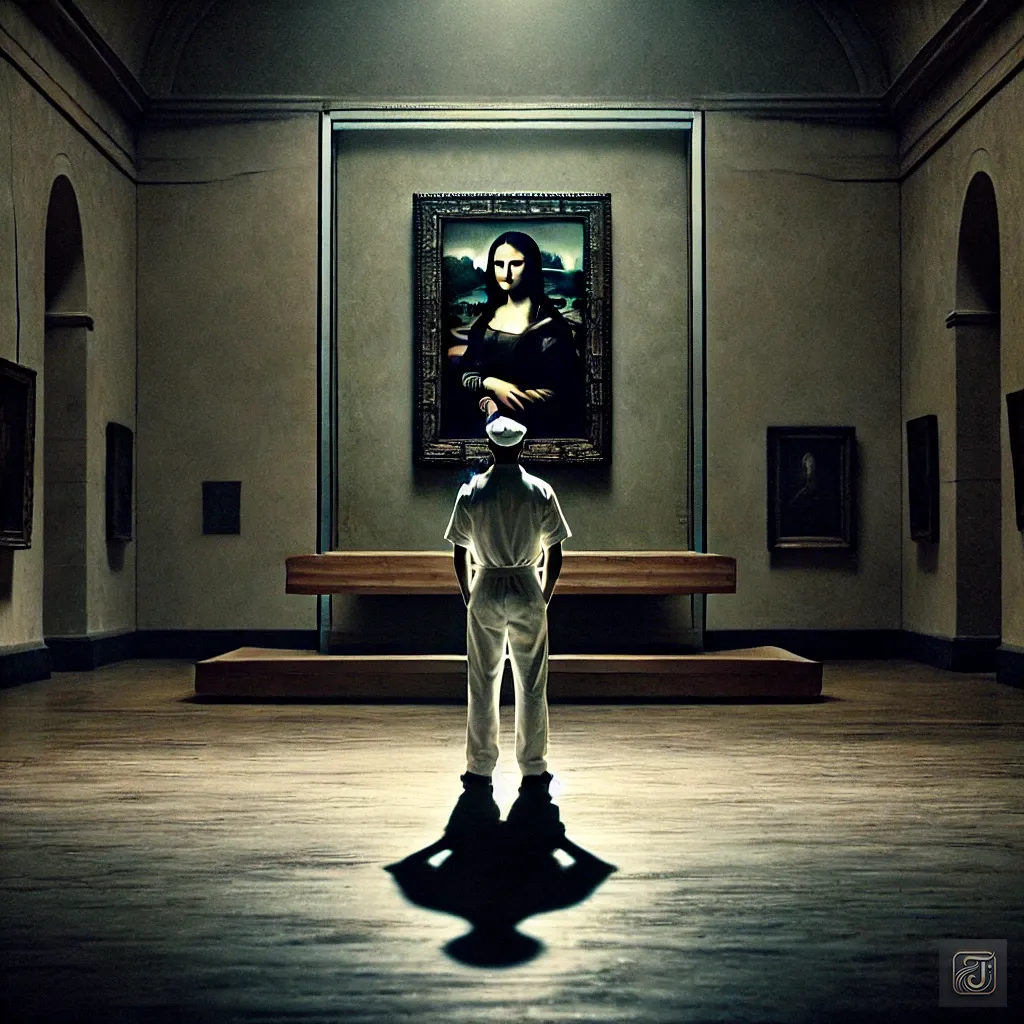
There she was—the woman who had smiled for 500 years, unchanged by time.
There was no glass case.
No security cameras.
Hanging on the wall was the most famous smile in the world.
Vincenzo Peruggia:
“Mona Lisa… you belong in Italy.”
Whispering those words in his heart, he took slow, deliberate steps toward the painting.
Peruggia paused for a moment.
Mona Lisa was right before him, smiling as if gazing directly at him.
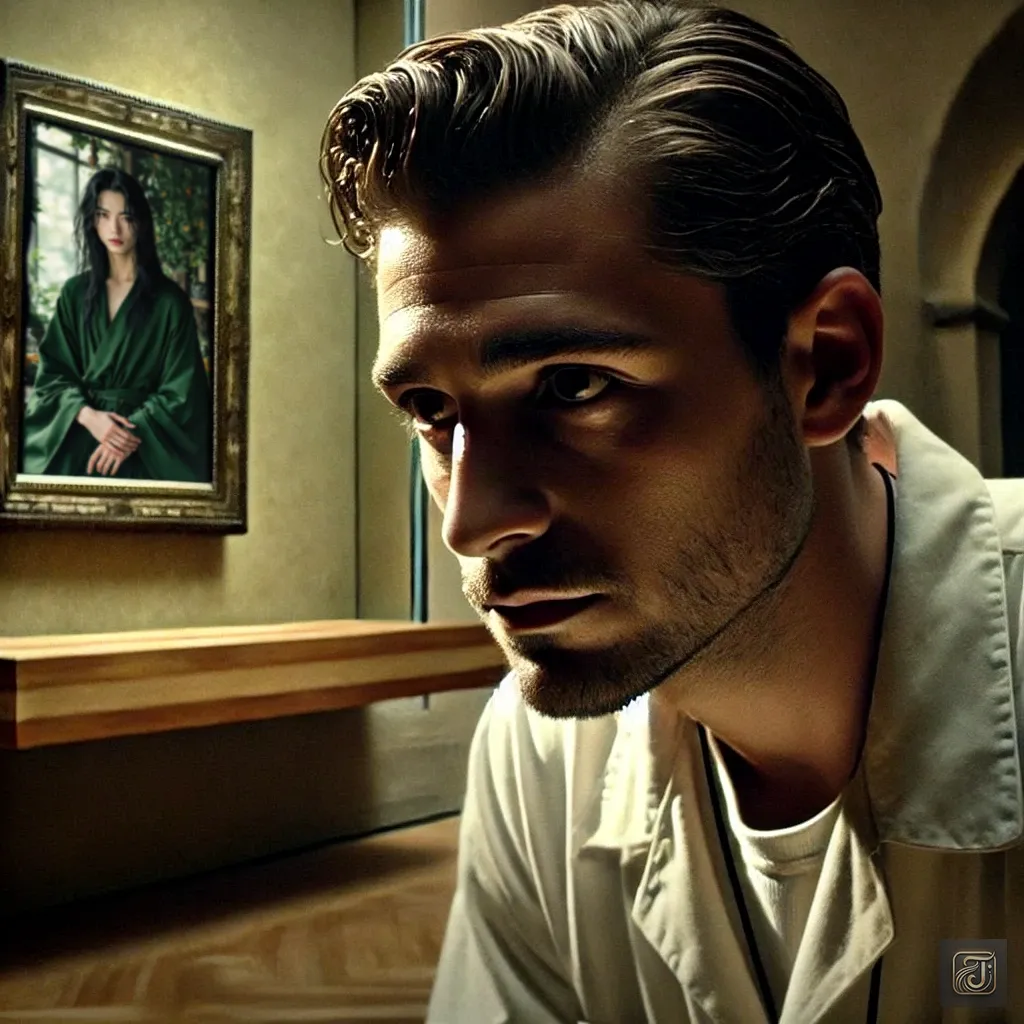
Vincenzo Peruggia:
“Am I really going to steal this painting…?”
His hands trembled.
But he quickly shook off his hesitation.
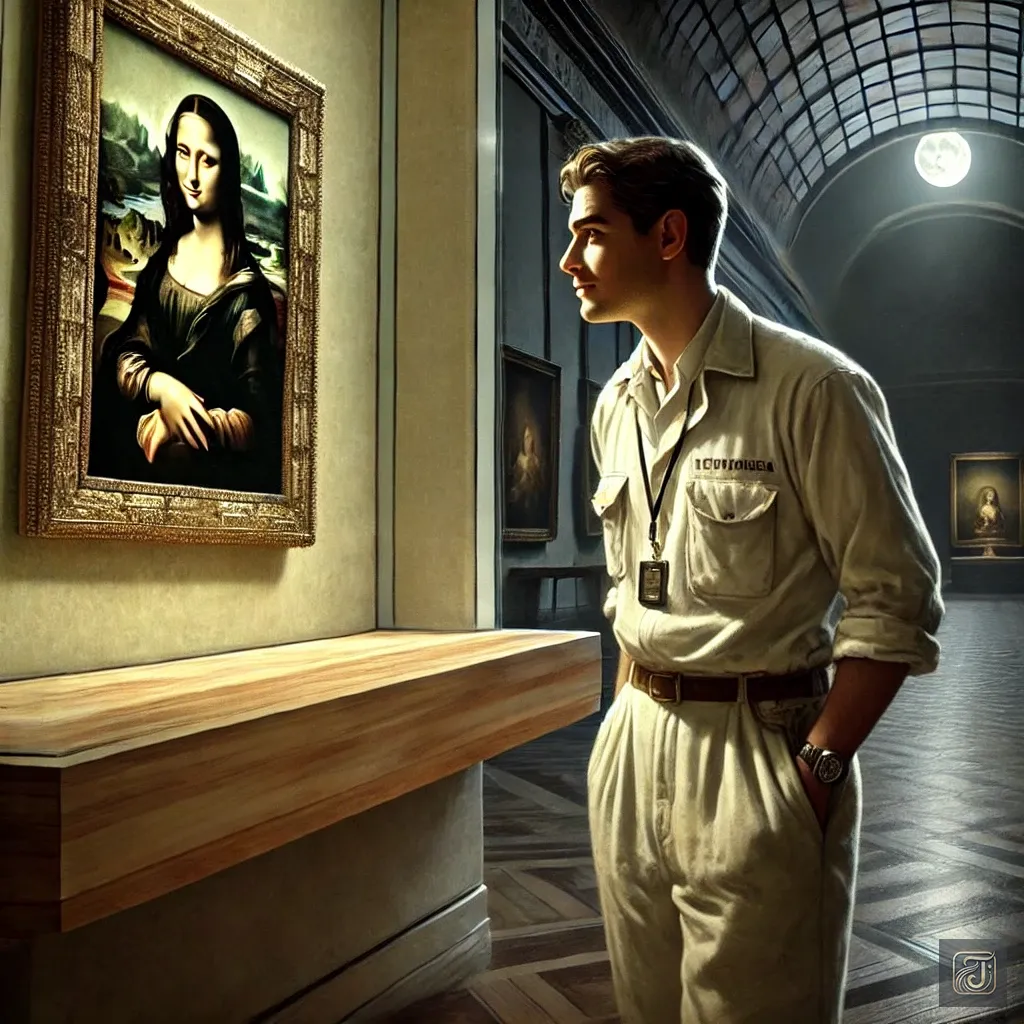
Vincenzo Peruggia:
“This is justice.”
“This painting belongs to Italy!”
“I’m just returning Mona Lisa to where she truly belongs!”
He cast aside his doubts.
Mona Lisa only smiled.
As if she were testing him.

Vincenzo Peruggia:
“Mona Lisa is an Italian masterpiece.”
“That’s why she rightfully belongs in Italy.”
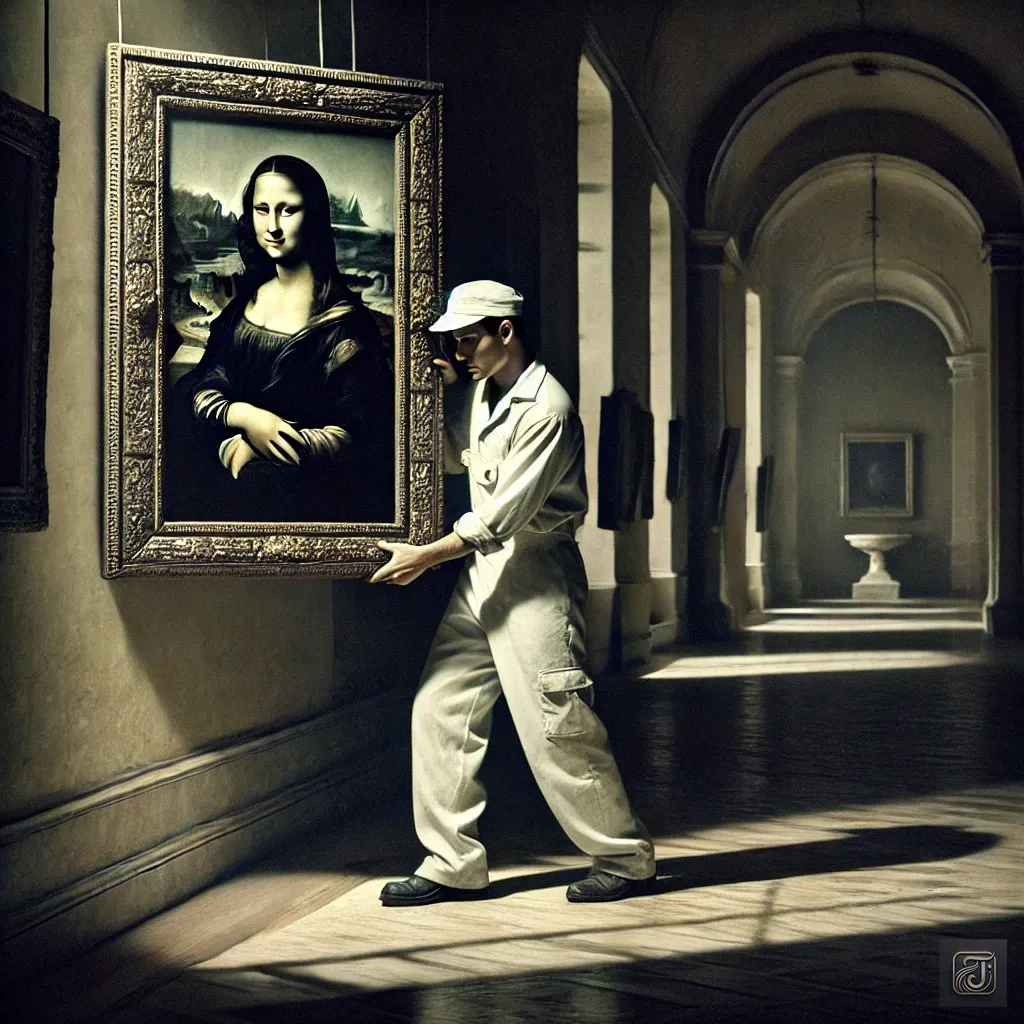
As if shaking off his hesitation, he carefully placed his hands on the frame and, with great caution, lifted it from the wall without making a sound.
The weight of the frame pressed against his fingertips.
He held his breath.
A few seconds later, nothing remained on the wall.
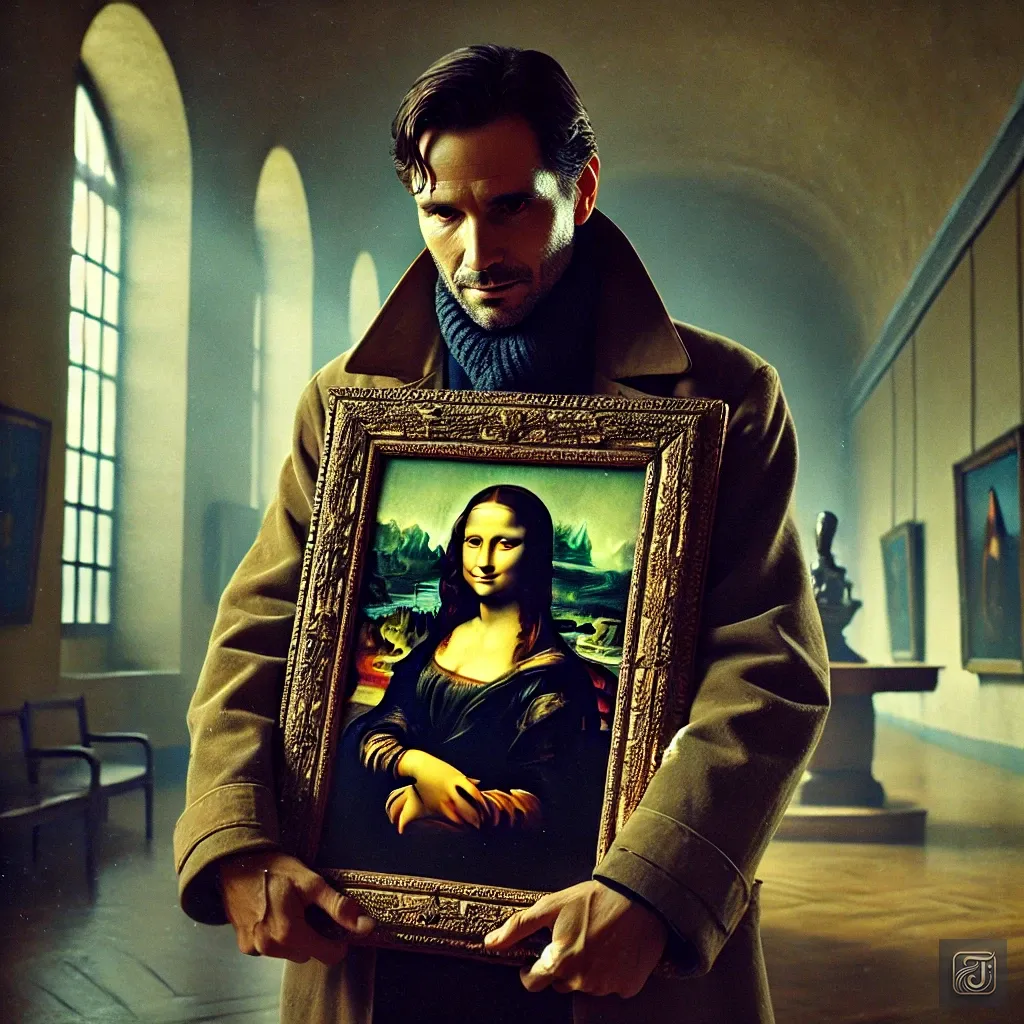
Mona Lisa was now in his arms.
A masterpiece that had gazed upon countless people for over 500 years was now held by a single man.
Peruggia carefully removed the painting from its frame, rolled it with precision, and tucked it inside his coat.
Every movement was slow, deliberate, and filled with certainty.
At that moment, the Mona Lisa vanished from the world.
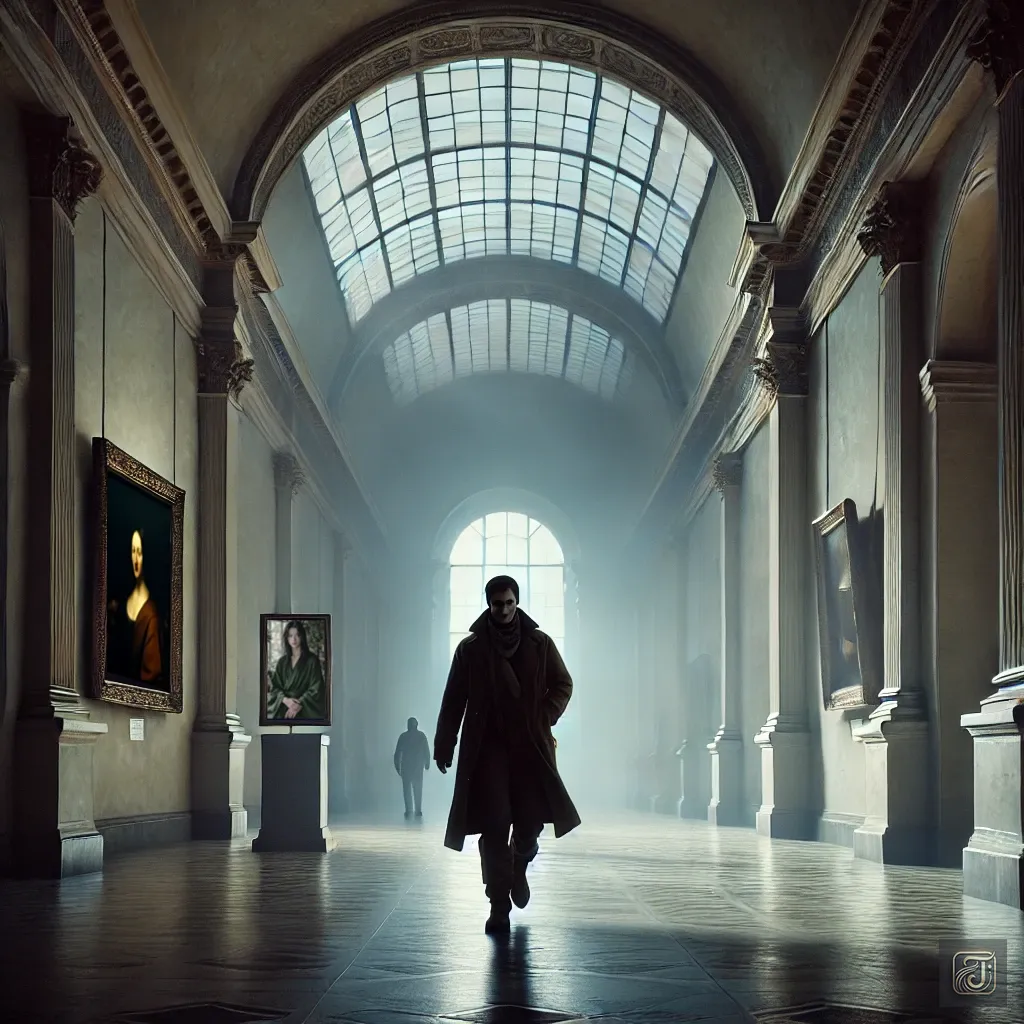
Beyond the door, the hallway remained silent.
Peruggia began walking with a casual stride.
Vincenzo Peruggia:
“No one has noticed me…”
His heartbeat pounded in his chest.
Weaving between glass cases and statues, he moved steadily toward the service exit.
In the distance, the faint sound of staff preparing for the morning echoed through the museum.
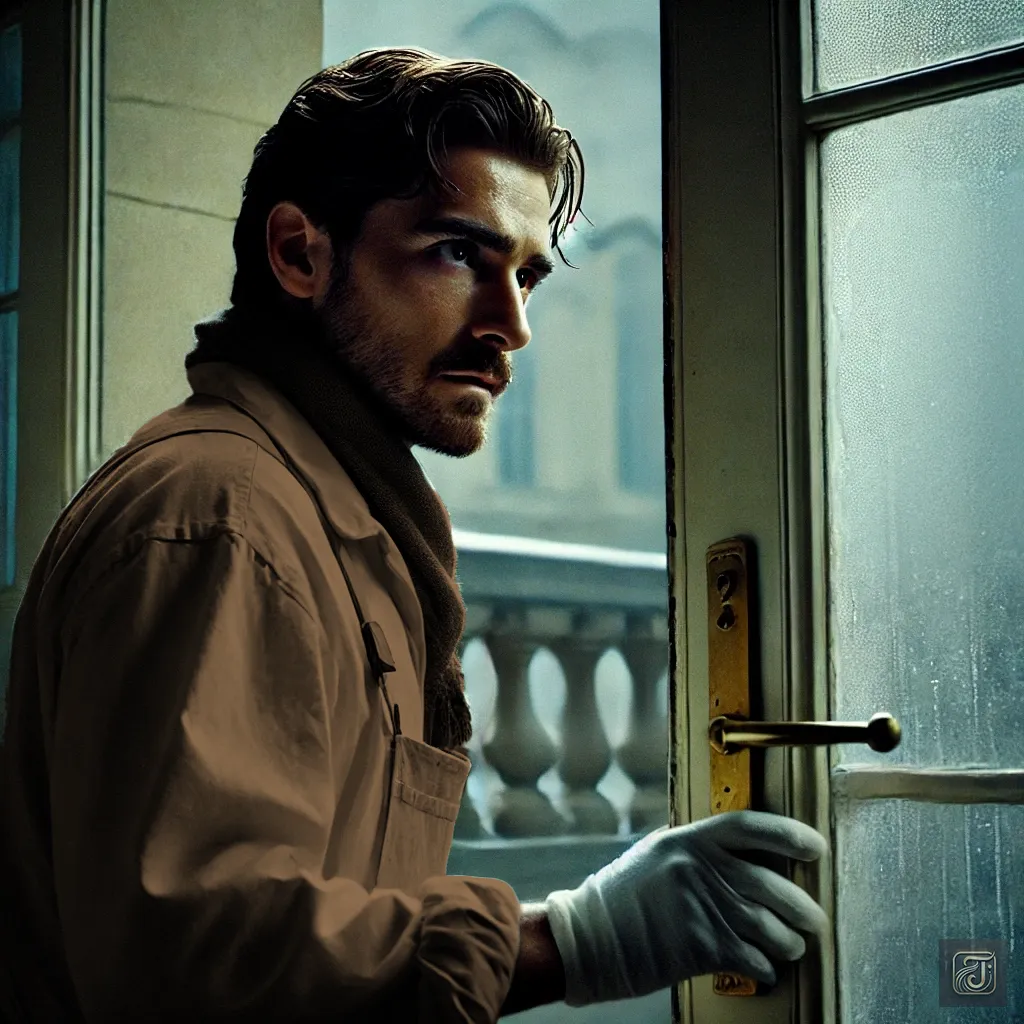
Vincenzo Peruggia:
“Just a little more…”
Standing before the service exit, he slowly pushed the door open.
A cool gust of air brushed against Peruggia’s cheek.
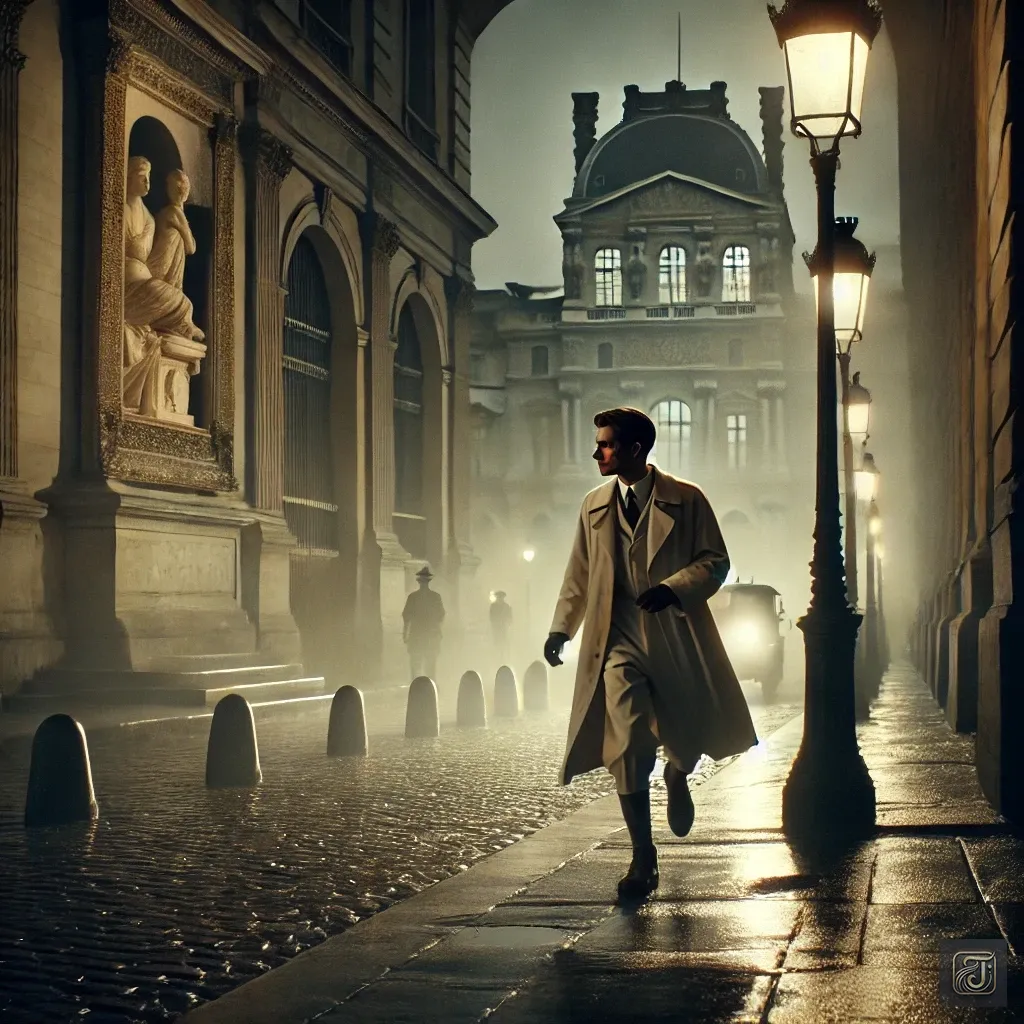
He glanced around, feeling the hidden masterpiece pressed against his chest.
Then, without haste, he disappeared into the city.
Mona Lisa, keeping her silence for 500 years, simply continued to smile.
Chapter 5: The Theft is Discovered
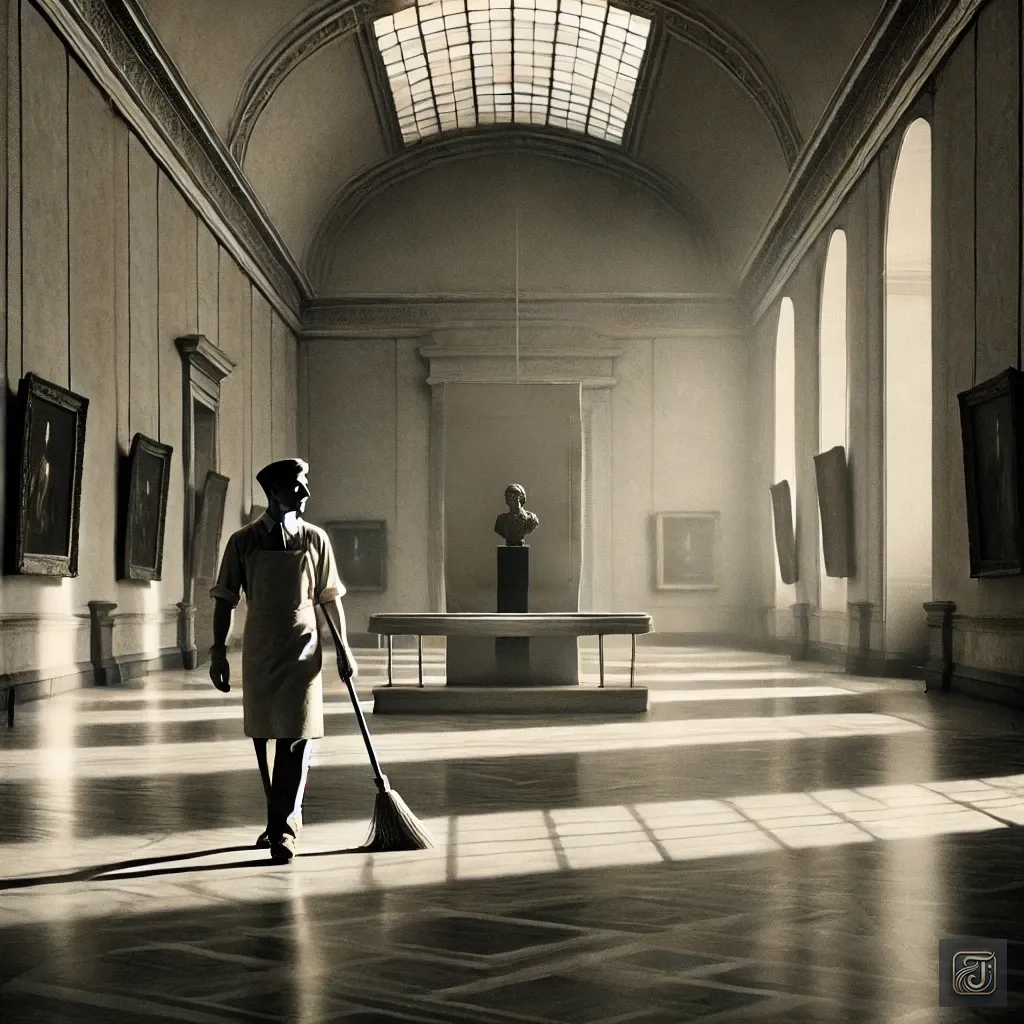
The theft was discovered the following day, on August 22, when French painter Louis Béroud arrived at the Salon Carré in the Louvre to sketch the Mona Lisa.
However, as he approached the usual display spot, he sensed that something was off.
The Mona Lisa, which should have always been there, was gone.
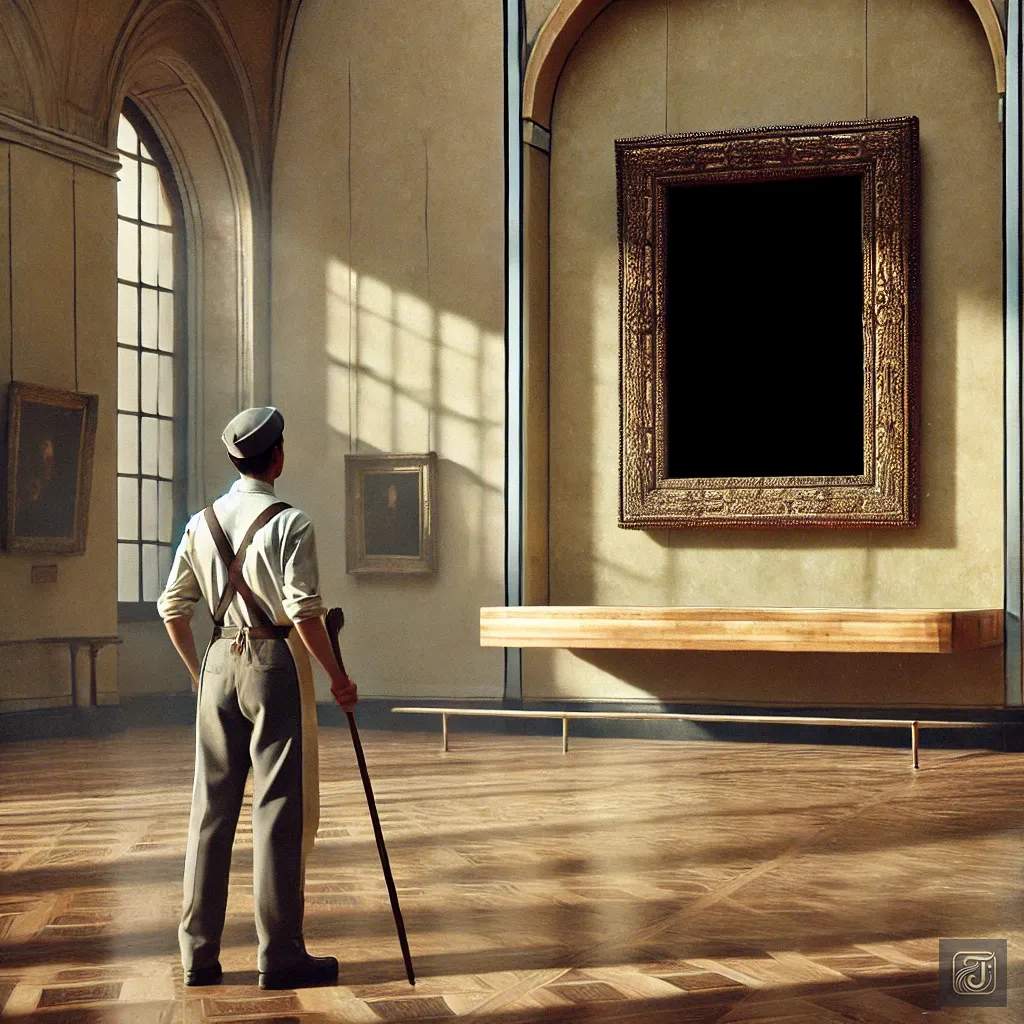
Louis Béroud:
“…Huh? The painting is missing?”
The janitor stopped in his tracks and looked again.
On the wall, only Mona Lisa’s empty frame remained, leaving behind a gaping void.

The janitor:
“M-Mona Lisa… is gone!!”
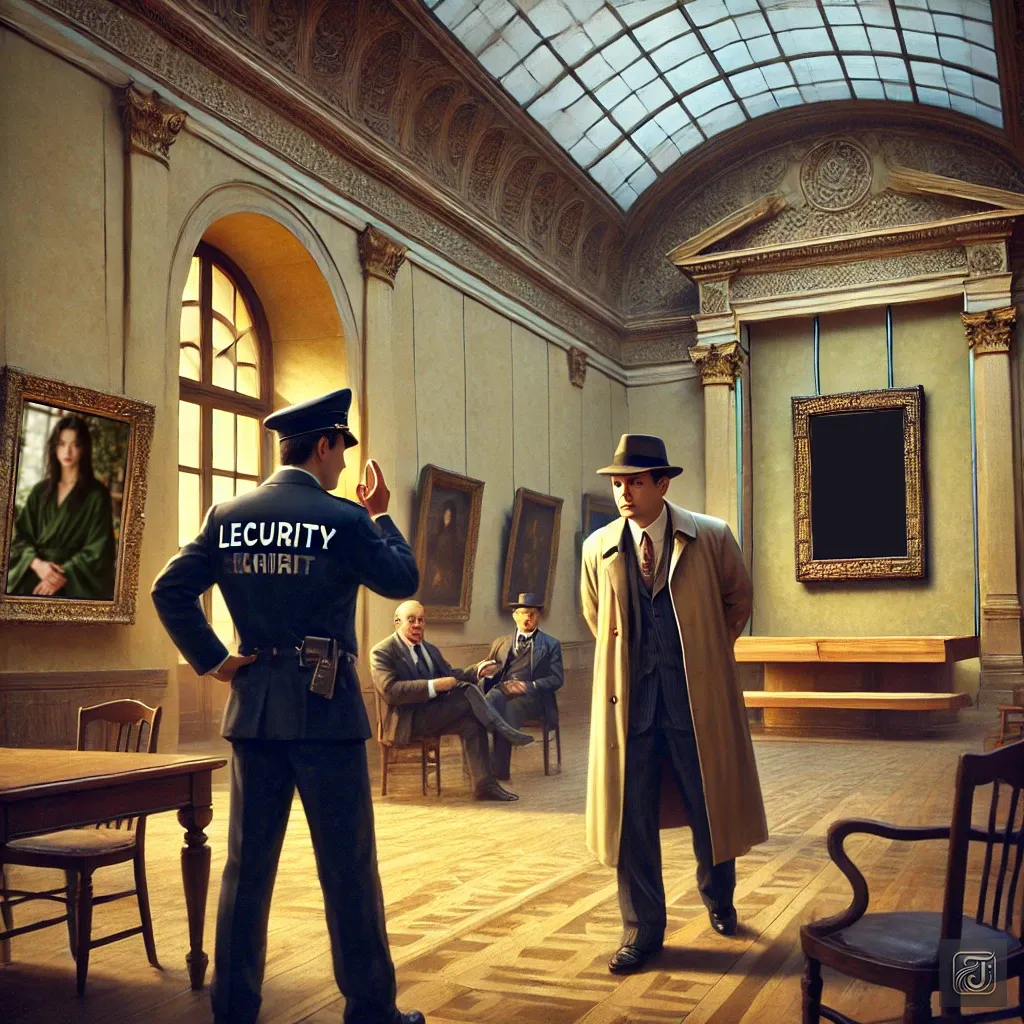
Béroud immediately alerted a security officer, but the officer assumed that Mona Lisa had simply been moved for a scheduled photography session.
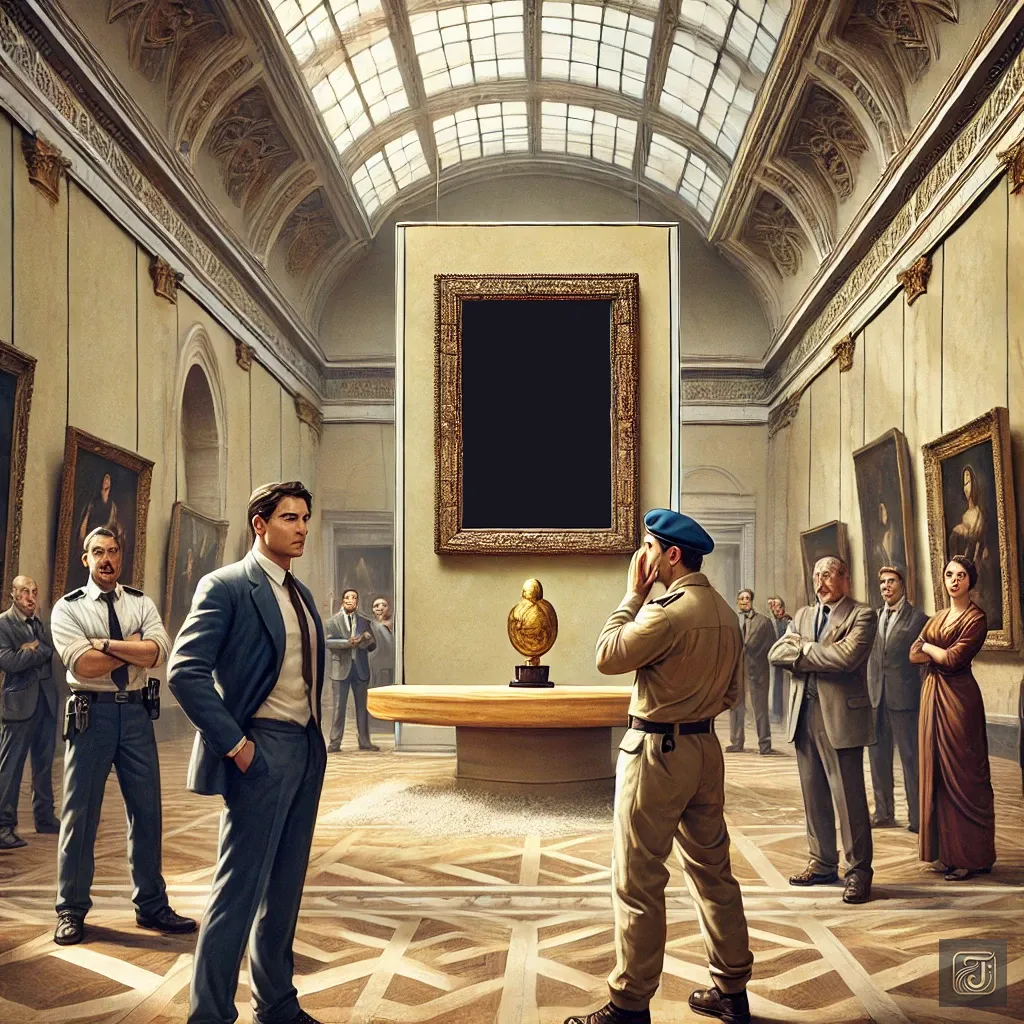
Several hours later, when Béroud followed up with museum officials, they confirmed that no such photography session had been planned.
It was then that the shocking truth became clear—the Mona Lisa had been stolen.
The Louvre Museum closed for one week to assist with the investigation.
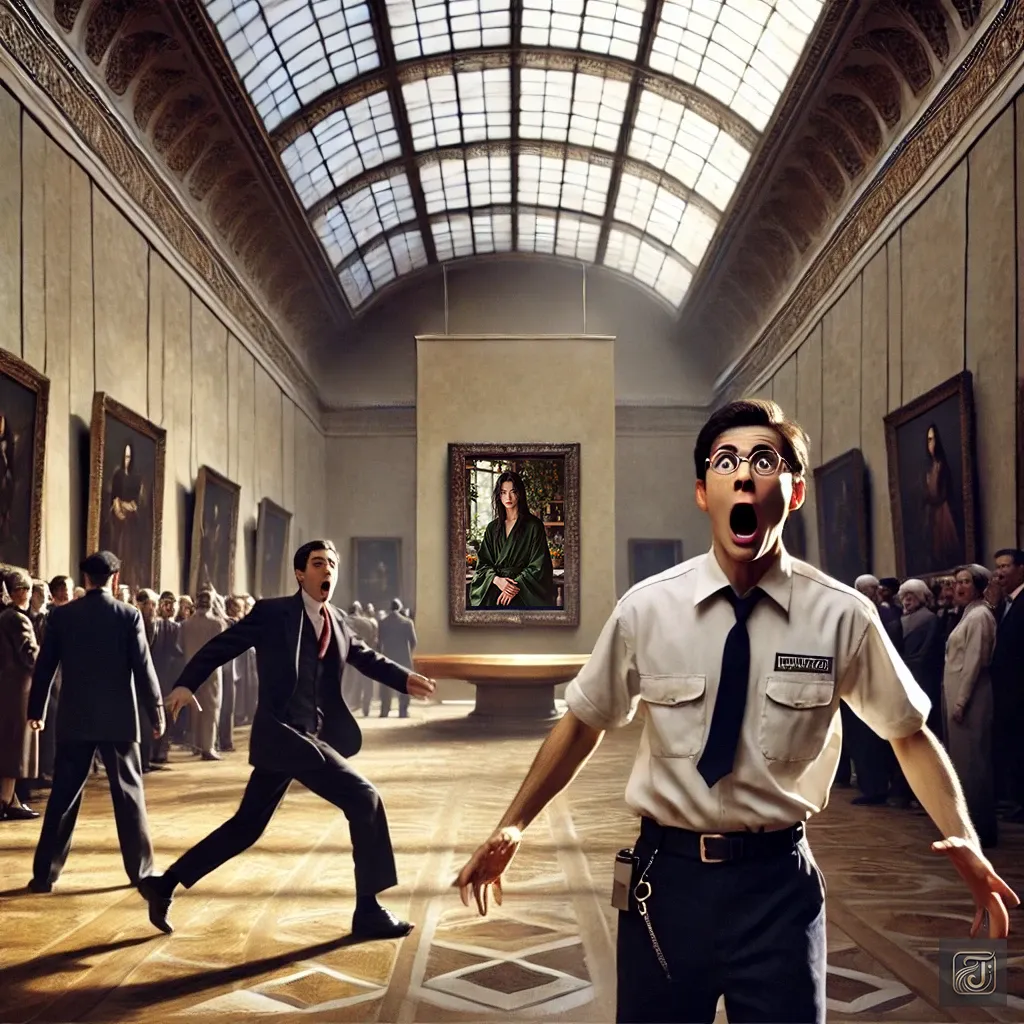
His shout echoed through the museum, and soon, curators and security guards rushed to the scene.
Everyone stood in shock, unable to believe their eyes.
The most famous smile in the world had vanished without a trace.
Newspapers quickly reported the news, and all of Paris was thrown into an uproar.
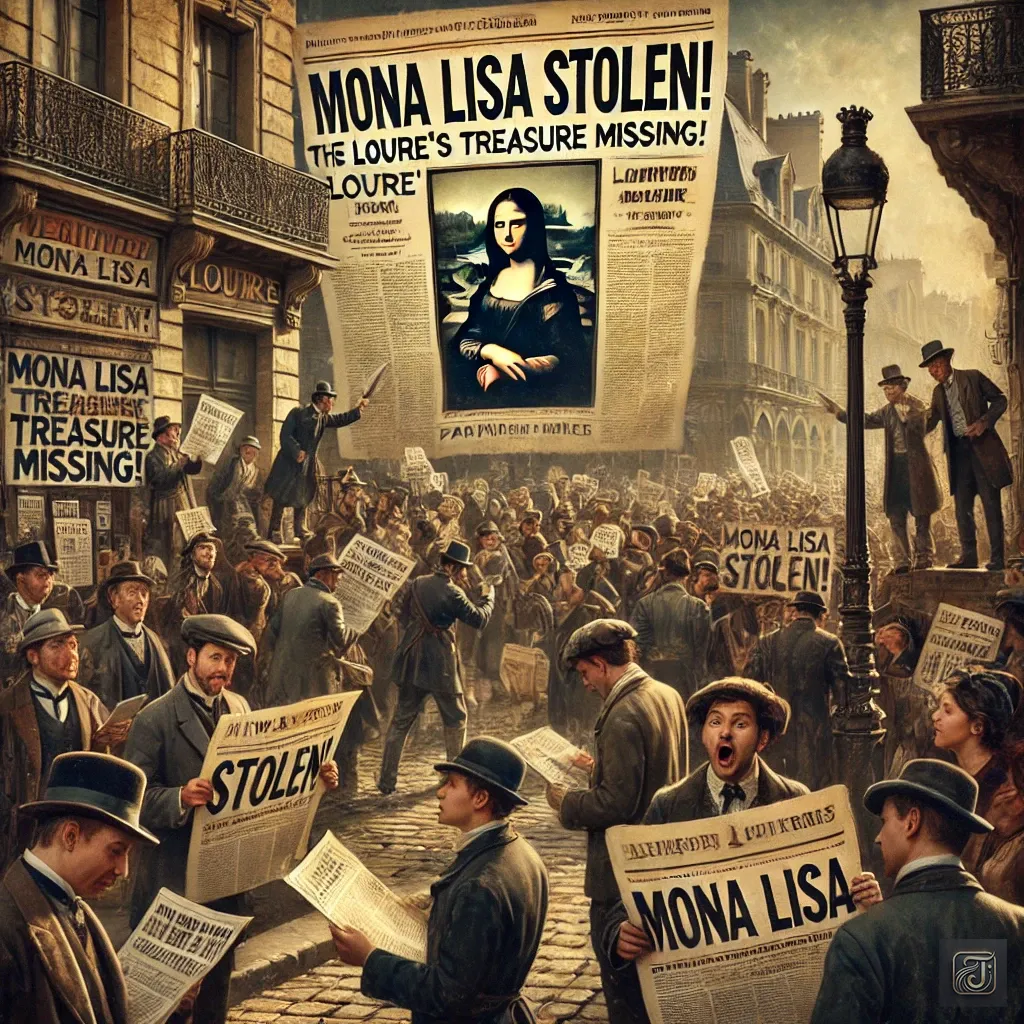
Crowd:
“Mona Lisa Disappears!”
“The Louvre’s Greatest Treasure Missing!”
Newspaper headlines screamed across Paris, spreading shock and disbelief.
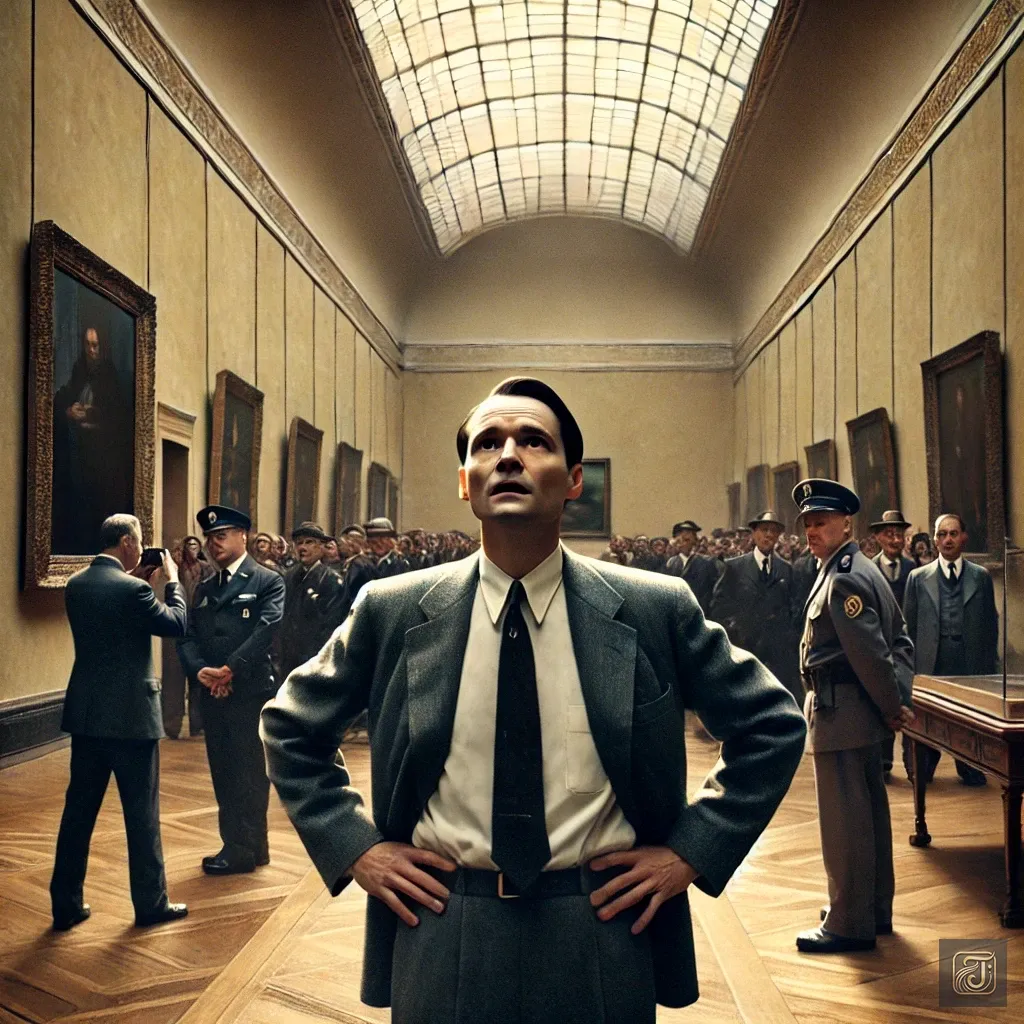
Every day, police officers and reporters crowded into the museum.
The director of the Louvre, staring blankly at the empty space where the Mona Lisa once hung, murmured to himself.
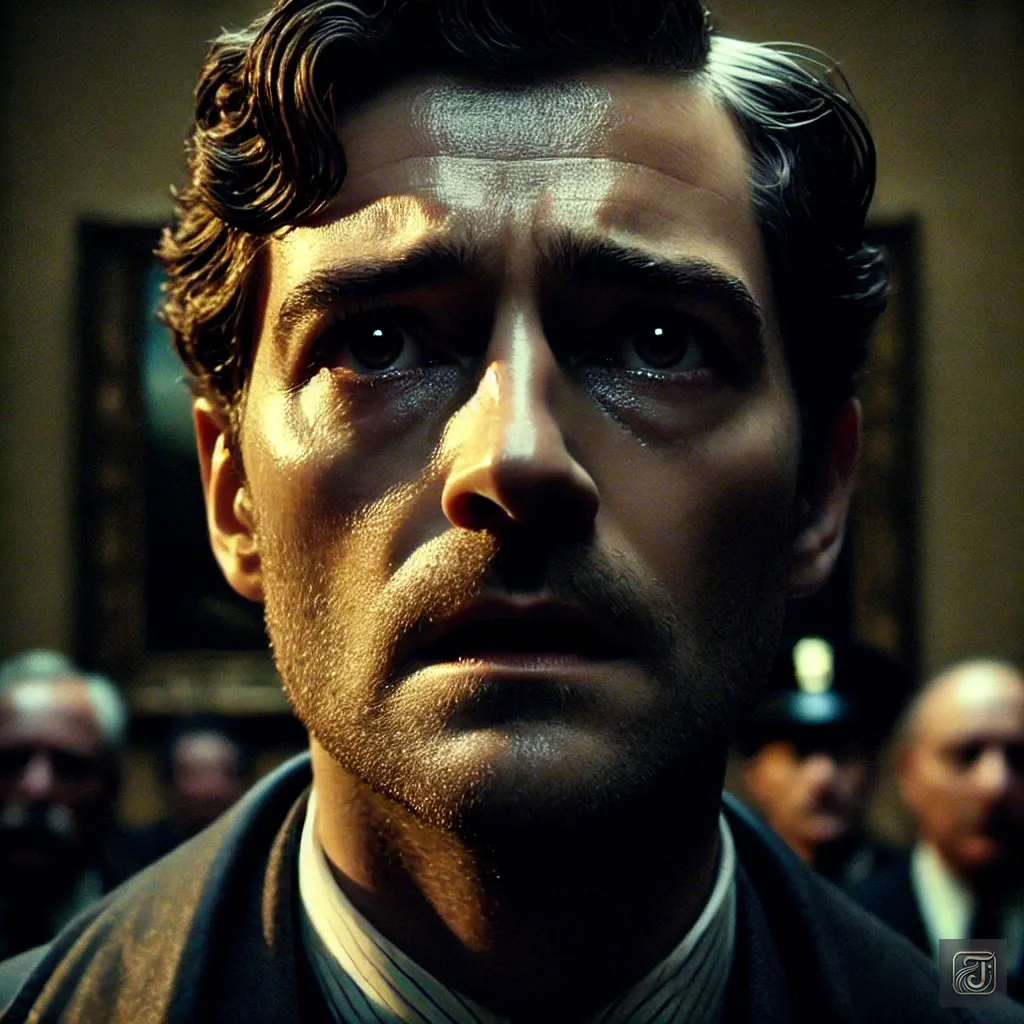
The director of the Louvre:
“Where has she gone…?”

The French poet Guillaume Apollinaire, who had once declared that the Louvre Museum should burn, became a suspect in the theft.
He was arrested and imprisoned, accused of involvement in the crime.
At that time, Apollinaire attempted to seek help from his friend, Pablo Picasso, but Picasso himself also became a suspect and was taken in for police questioning.
Due to a lack of evidence, both men were released, and it was later proven that neither had any connection to the theft.
Chapter 6: Living with Mona Lisa
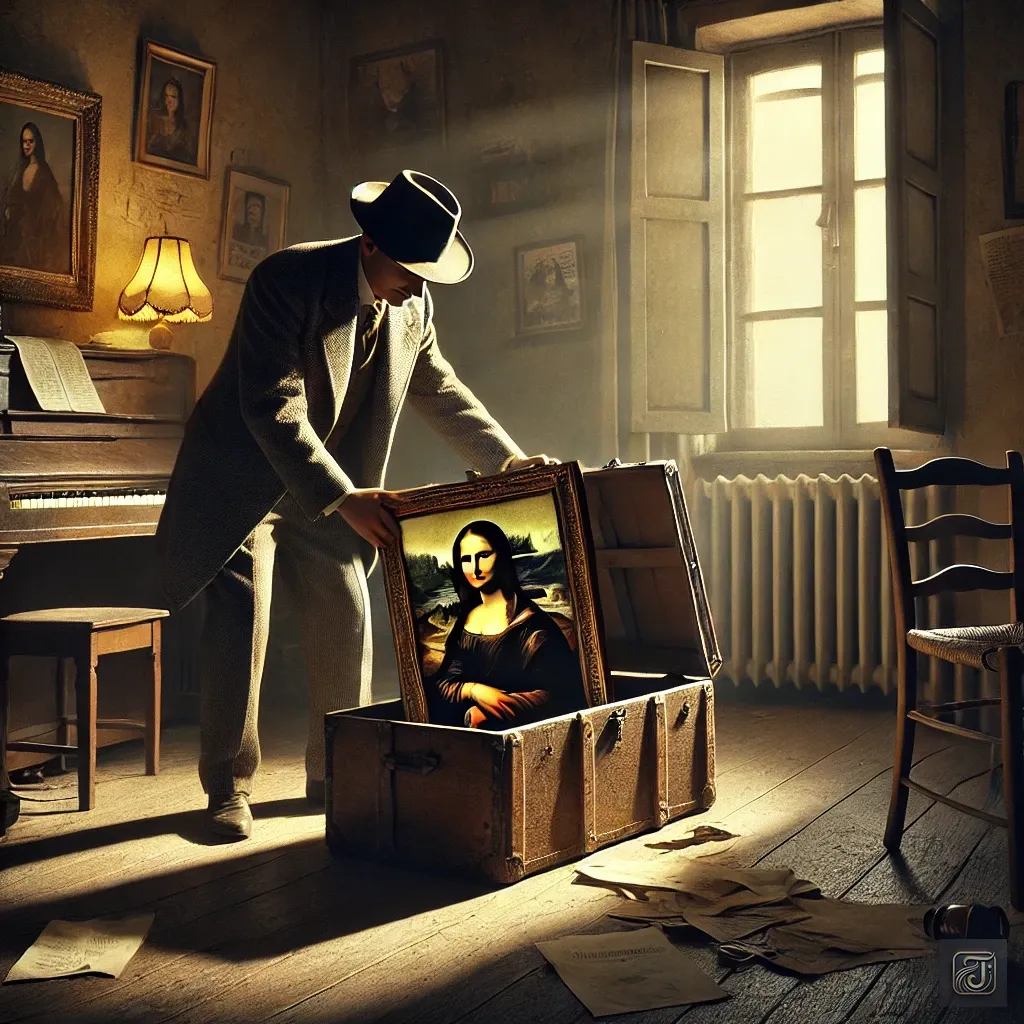
Peruggia hid the Mona Lisa inside a small trunk in his home.
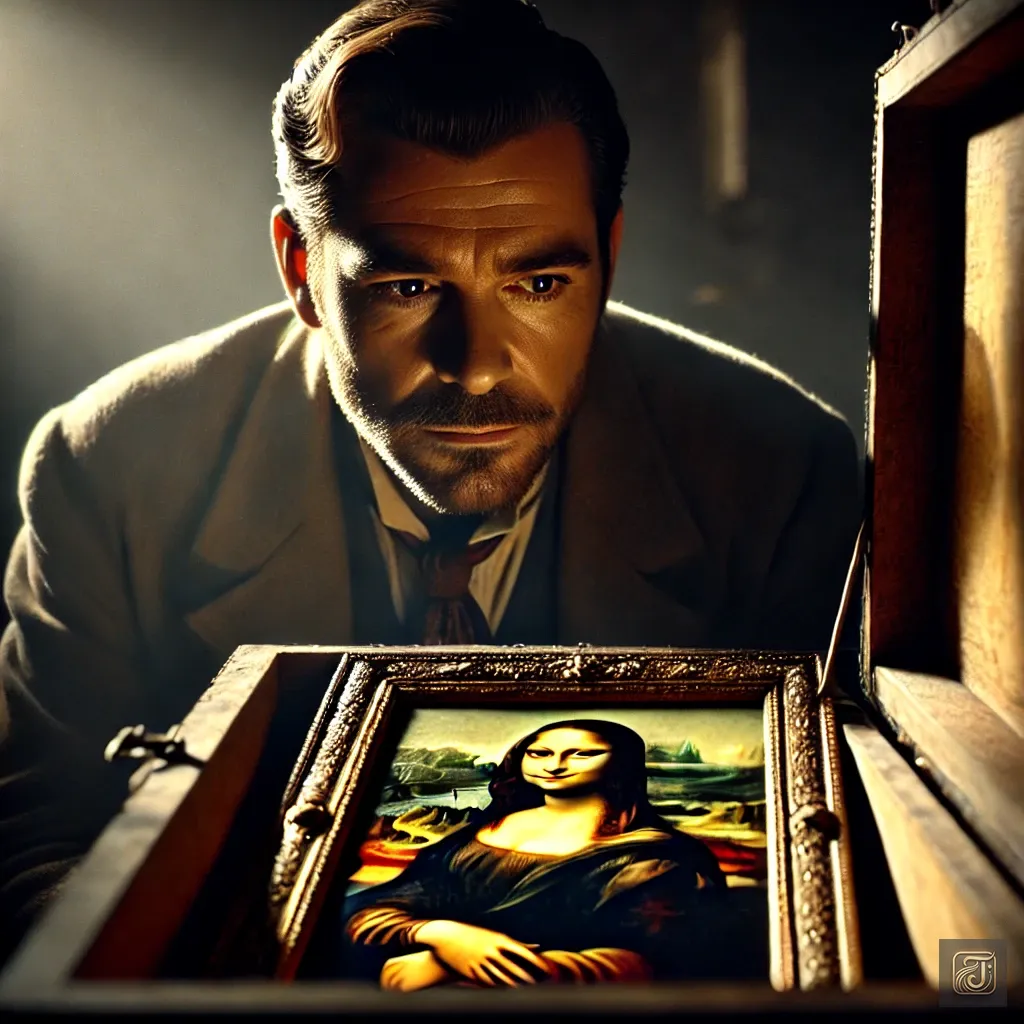
From time to time, he would open the trunk and gaze at her smile.
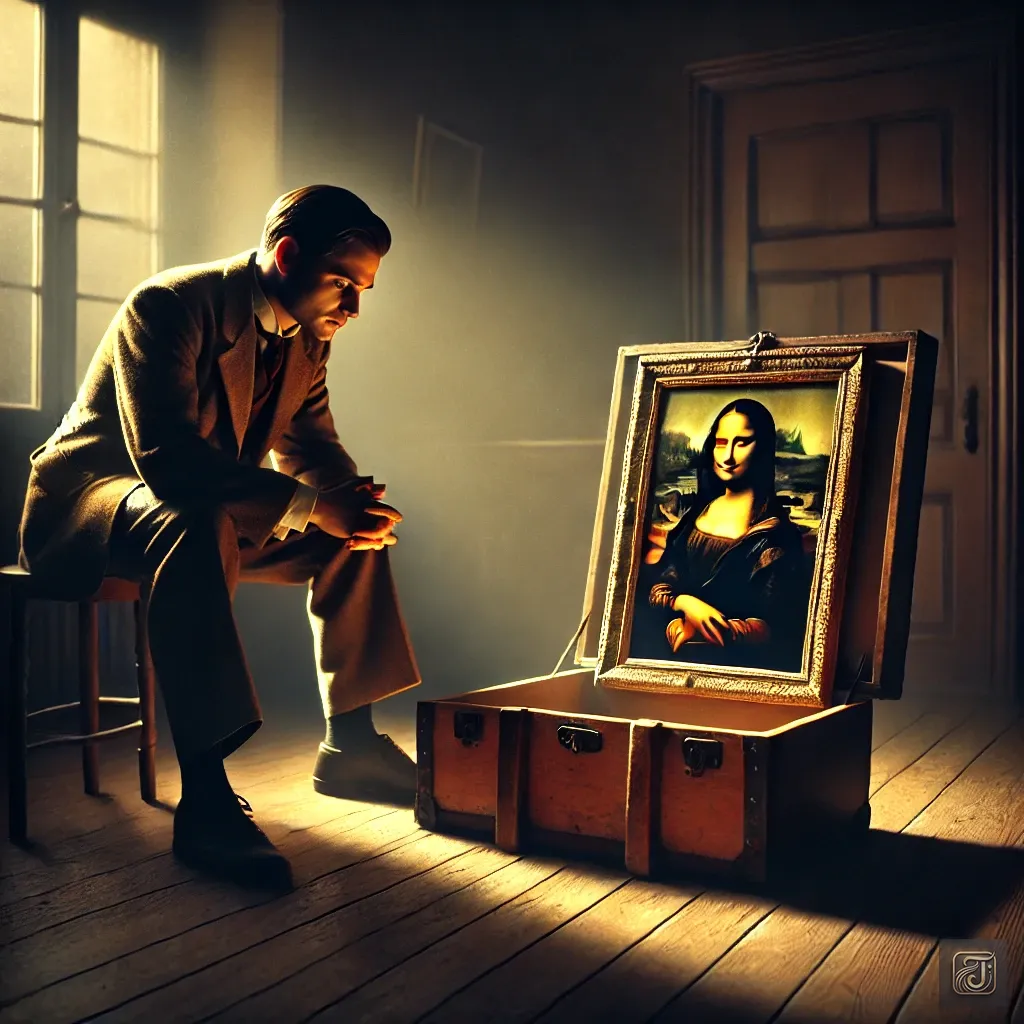
Vincenzo Peruggia:
“Are you truly meant to be here?”
Mona Lisa remained silent.
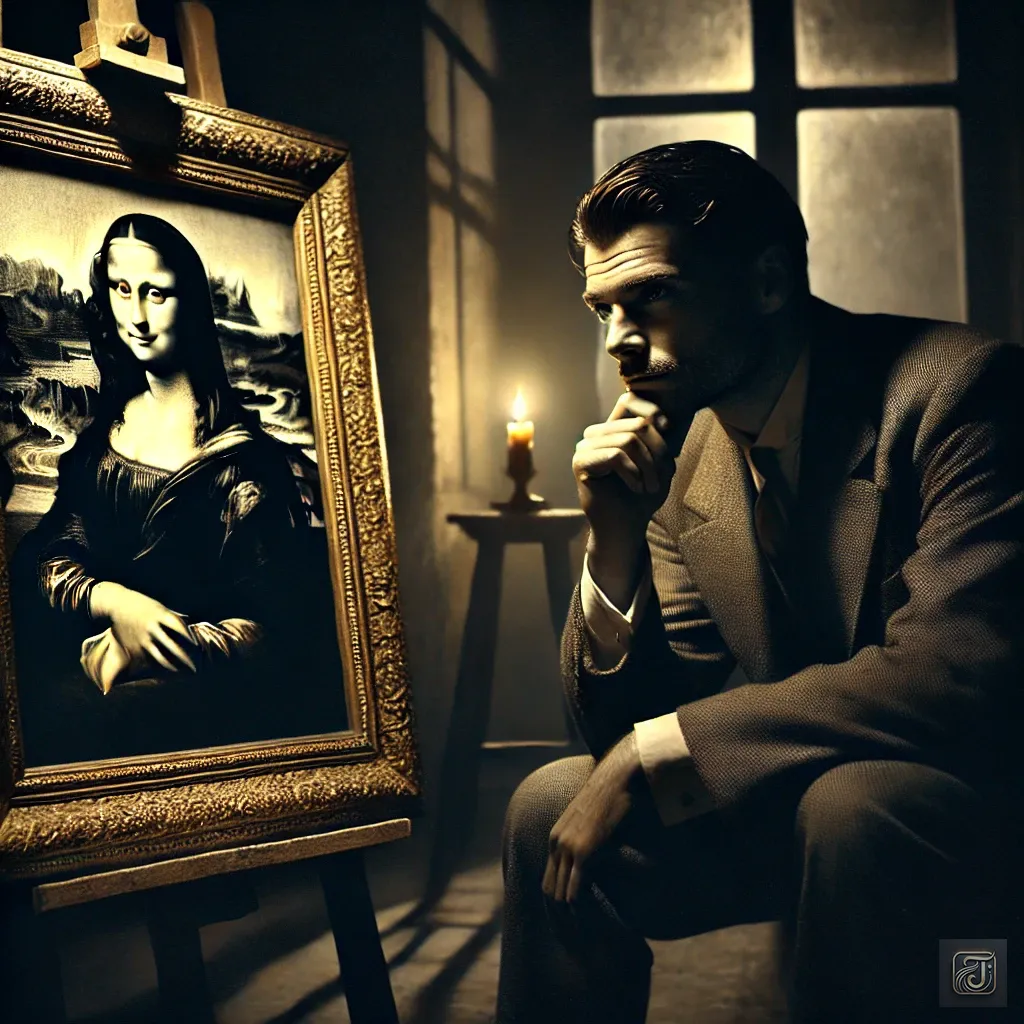
Night after night, he spoke to that enigmatic smile, and before long, he began to feel as if Mona Lisa was speaking back to him.
However, as time passed, a sense of unease grew within Peruggia.
The French police intensified their investigation, and reports surfaced suggesting that a Louvre employee might be among the suspects.
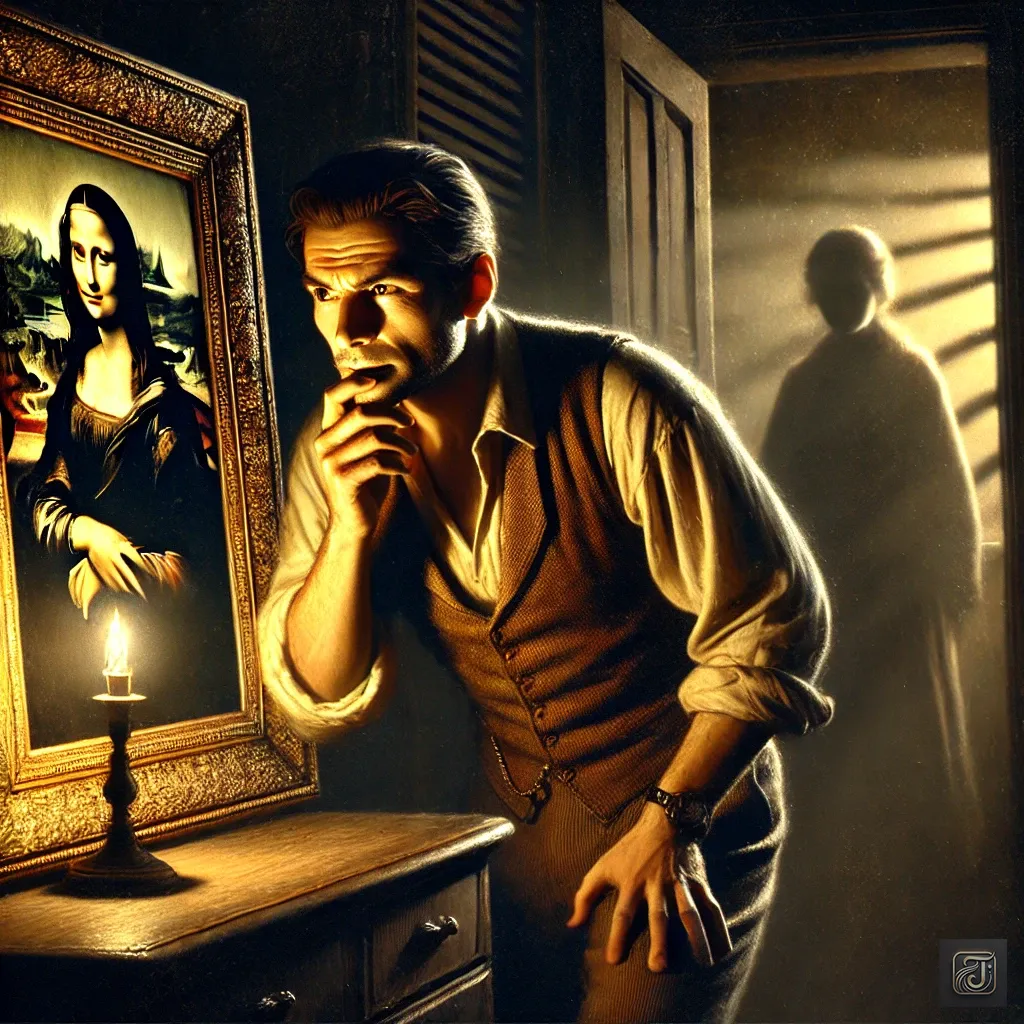
Vincenzo Peruggia:
“Before they find me… I have to return this painting to Italy as soon as possible…!”
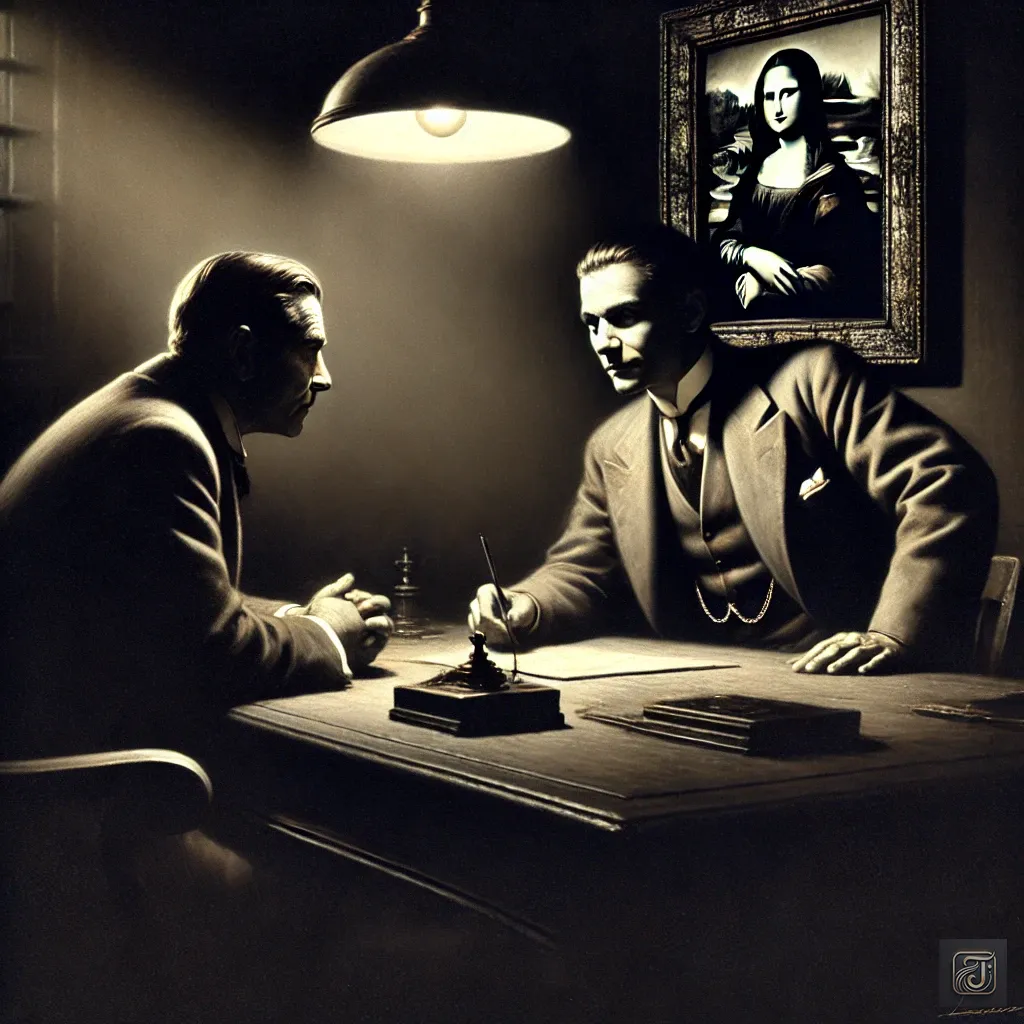
Peruggia finally made up his mind to contact an art dealer in Florence.
However, that very decision would mark the end of his plan.
Chapter 7: The Moment of Arrest
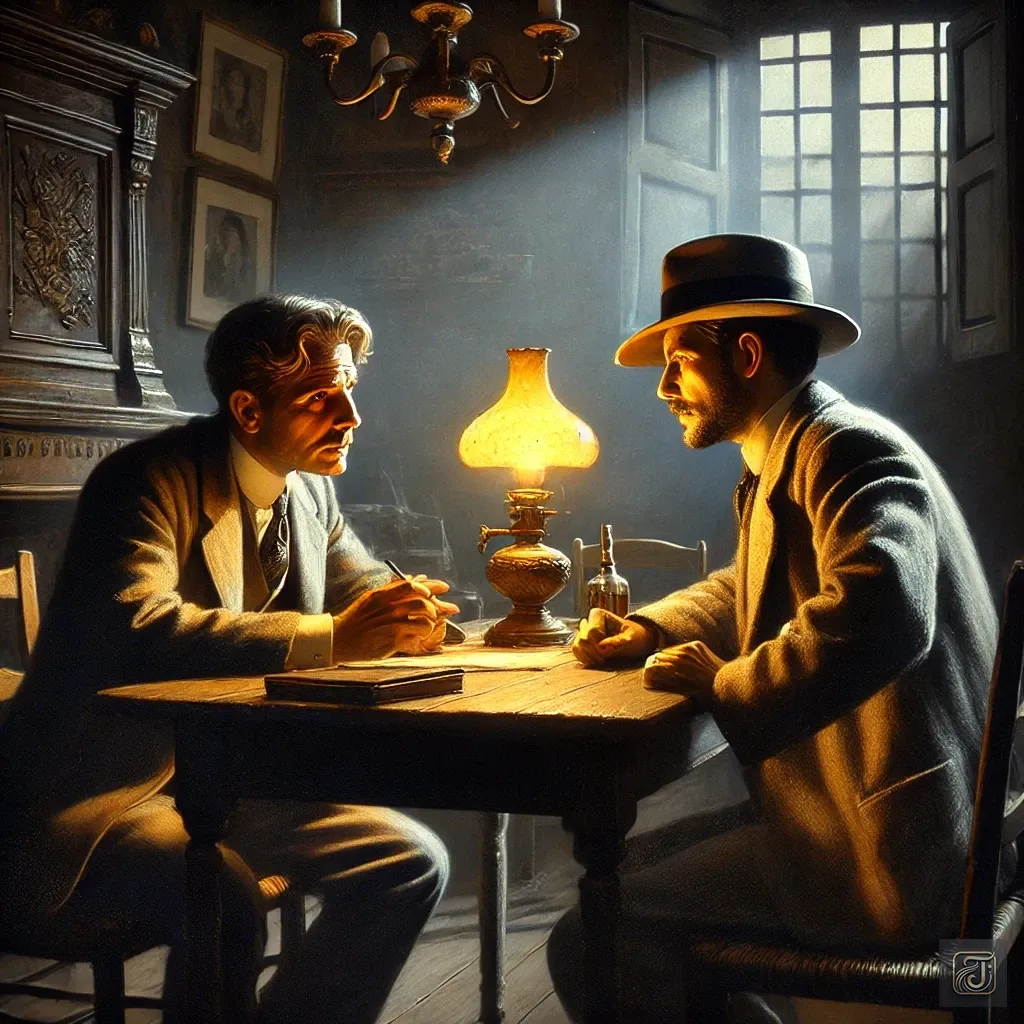
In 1913, Peruggia met with Alfredo Geri, an art dealer in Florence.
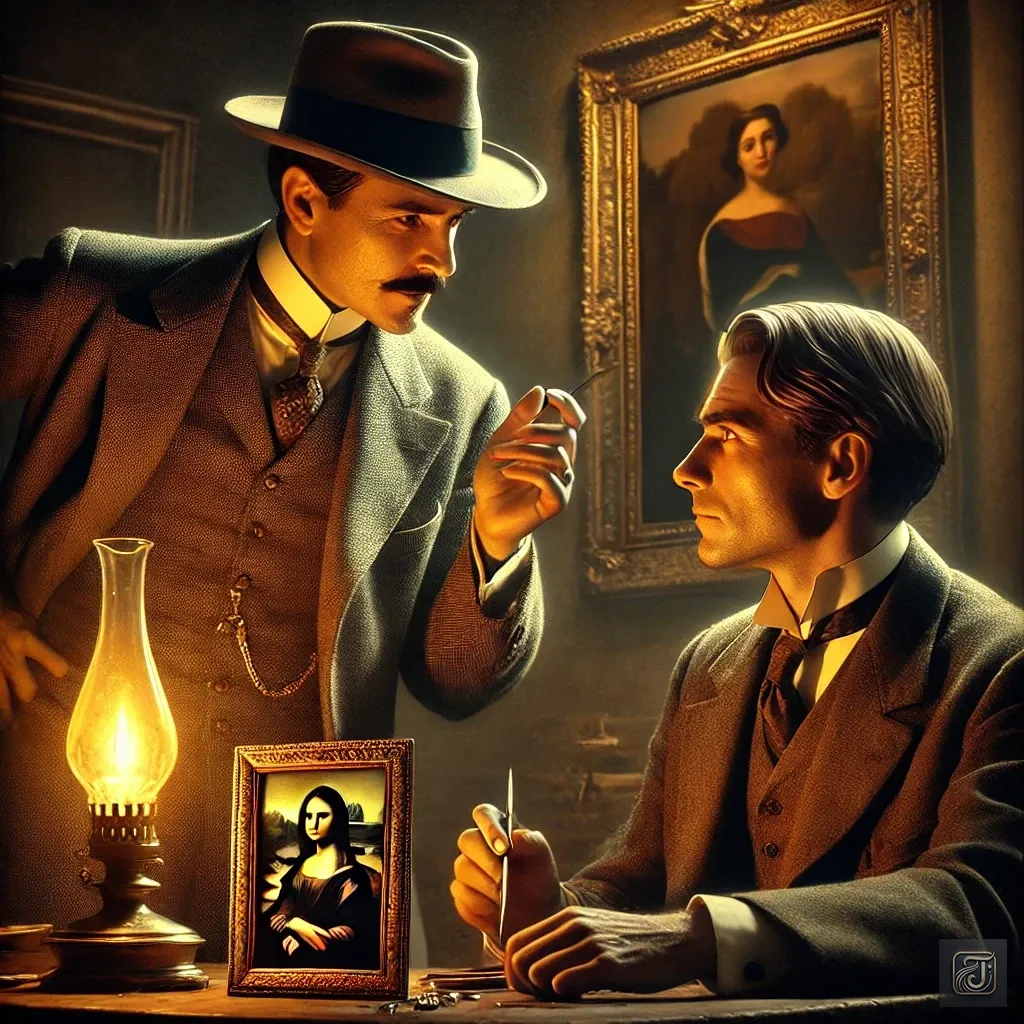
Vincenzo Peruggia:
“This is Italy’s pride.”
“I cannot let it go back to France.”
He spoke with confidence, but the art dealer had already notified the police.
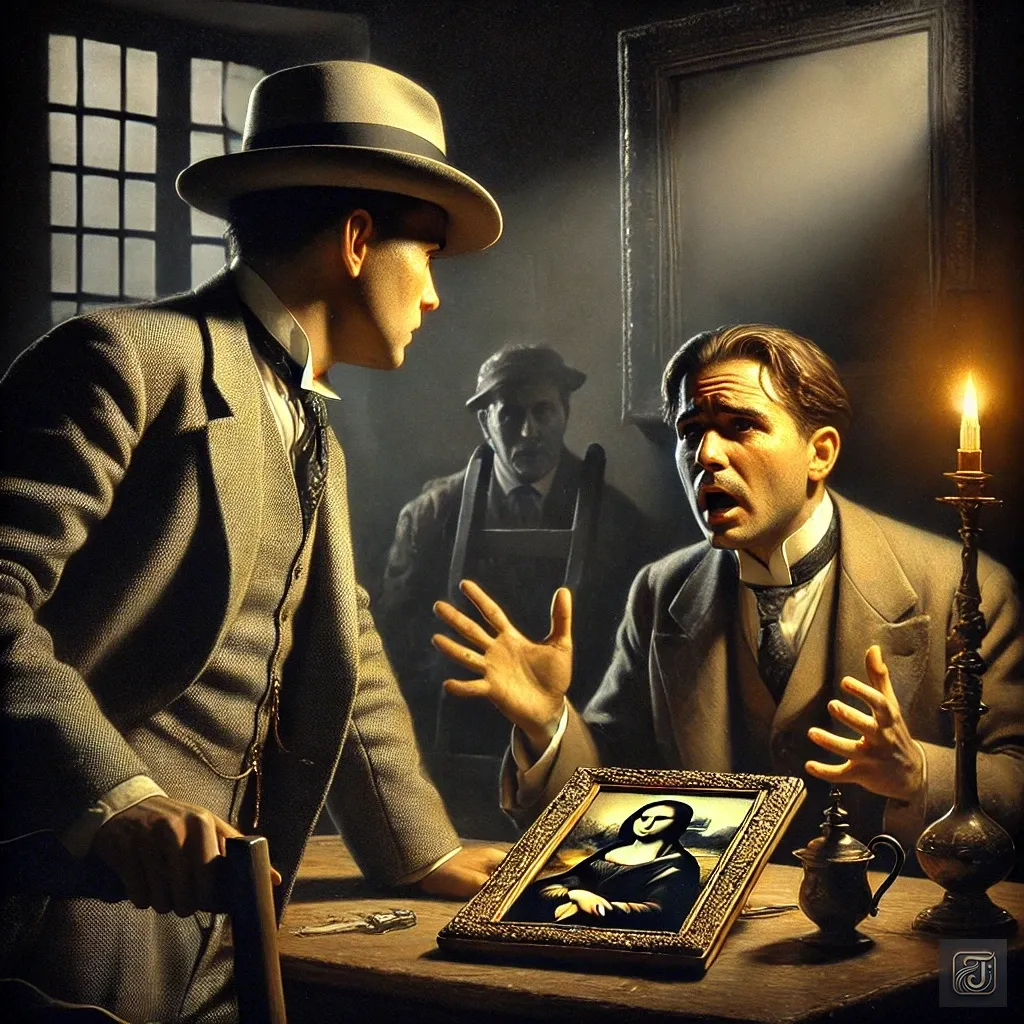
The art dealer:
“This painting must be returned to the Louvre.”
Vincenzo Peruggia:
“What…!?”
At that moment, police officers burst into the room.

Police officers:
“Vincenzo Peruggia! You are under arrest!”
Peruggia stood frozen, still holding Mona Lisa in his arms.
In his grasp, Mona Lisa simply continued to smile, silent as ever.
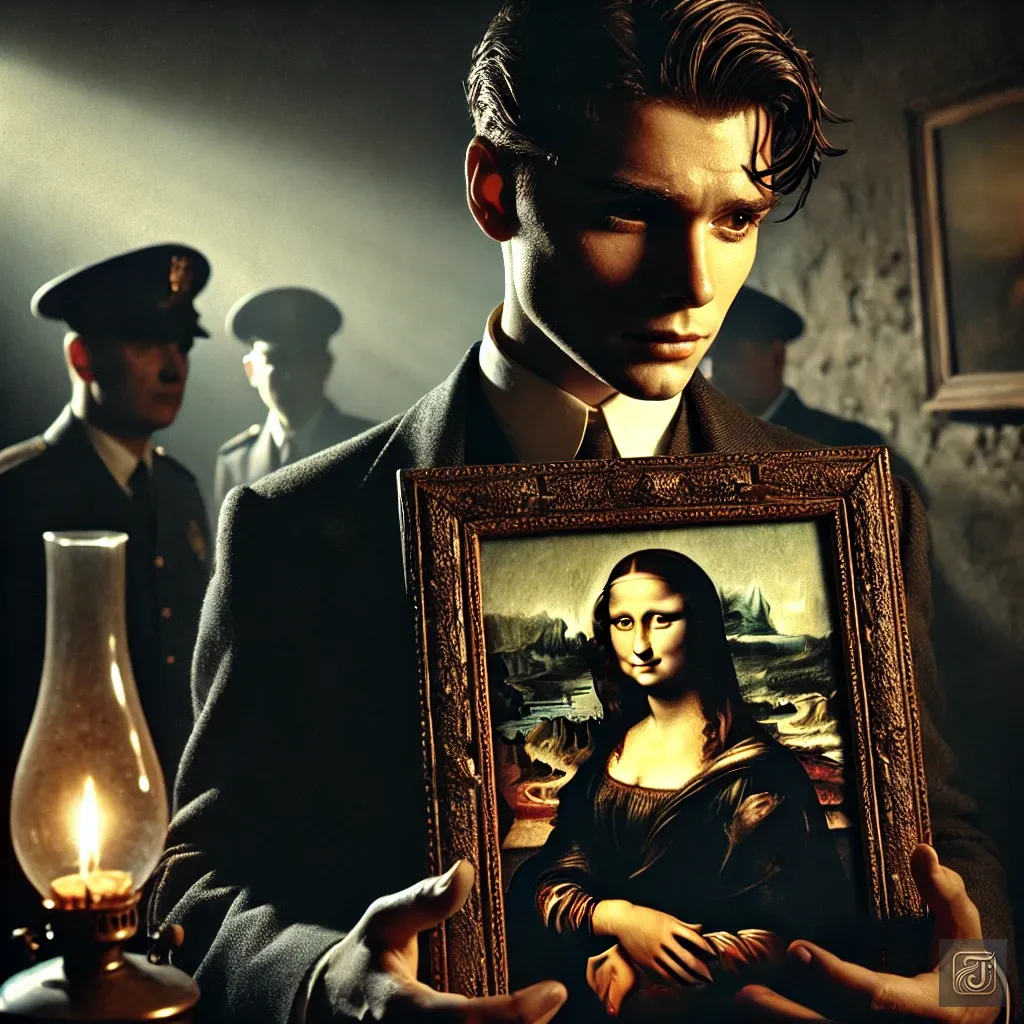
Vincenzo Peruggia:
“…Was I wrong?”
The answer remained hidden within her smile.
Chapter 8: The Impact of the Incident
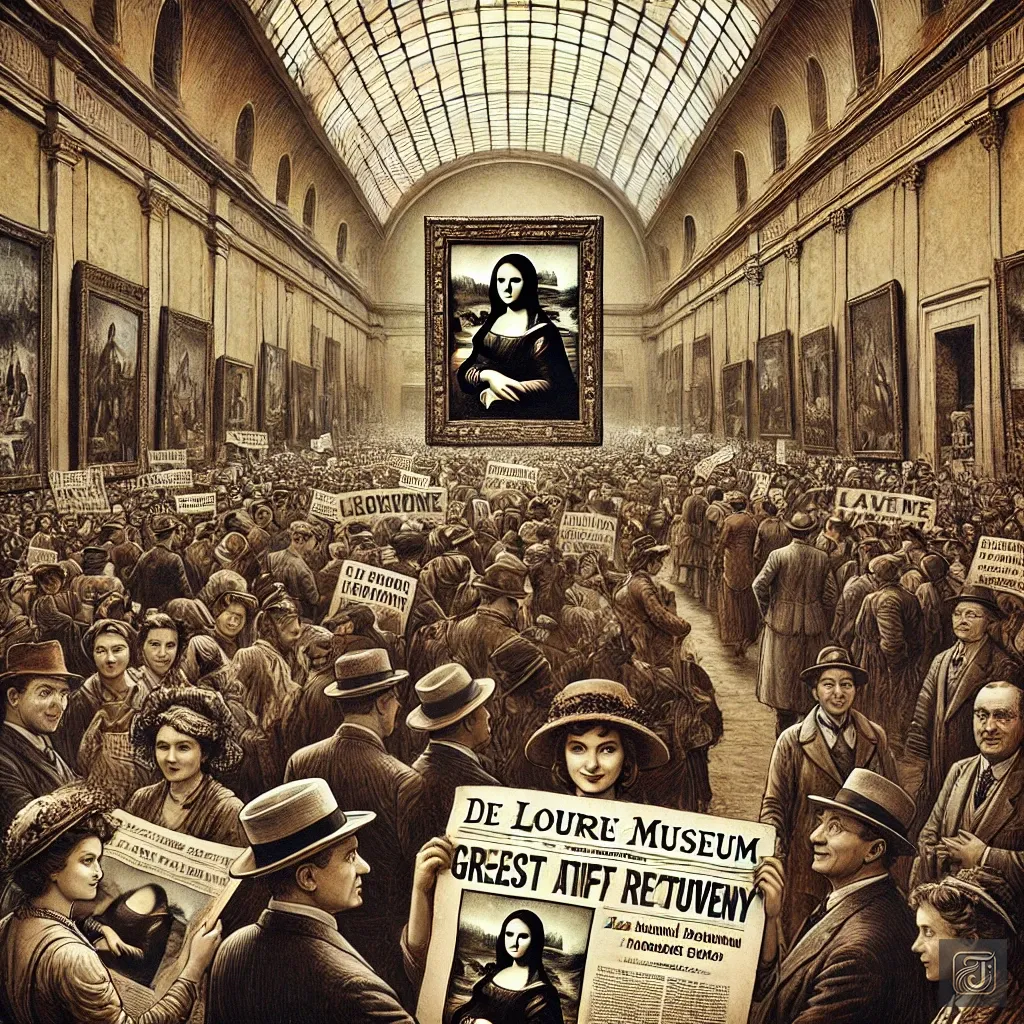
This incident was widely reported as the “greatest art theft of the 20th century,” bringing worldwide attention to the Mona Lisa.
As a result, when the painting was returned to the Louvre Museum, it gained an unprecedented level of popularity.
Although Peruggia’s actions were a crime, they ultimately played a role in making the Mona Lisa “the most famous painting in the world.”

There are various theories regarding Vincenzo Peruggia’s motive for the crime.
In court, he stated,
Vincenzo Peruggia:
“Mona Lisa is Italy’s treasure and does not belong in France.”
Because of this, his actions were widely believed to be driven by patriotic intent.
However, another theory suggests that he stole the painting for financial gain, intending to sell it in the end.
In fact, he attempted to offer it to an art dealer in Florence, but the dealer reported him to the police, leading to his arrest.
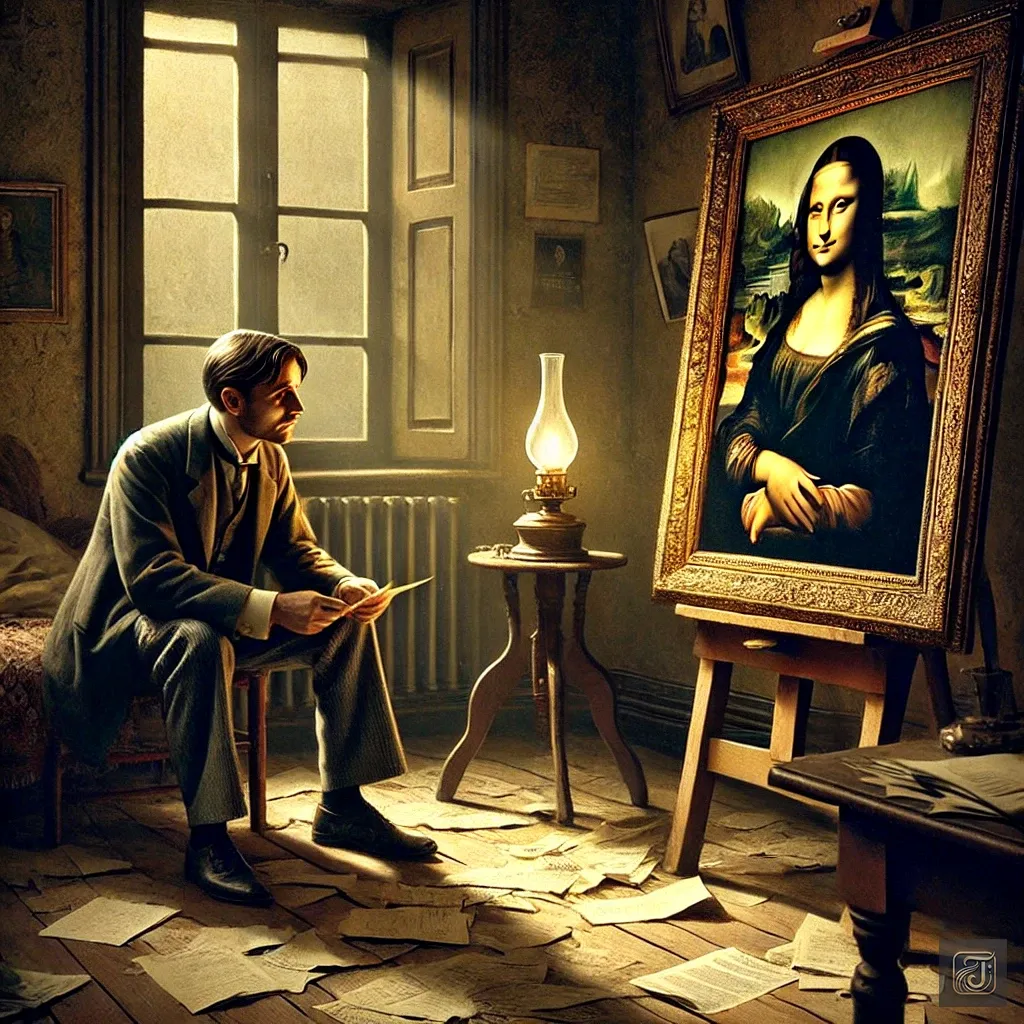
The reason why Peruggia hid the Mona Lisa for two years remains unclear.
Since he stated that he had been “living with the painting,” some speculate that he developed a form of obsession or delusion regarding it.
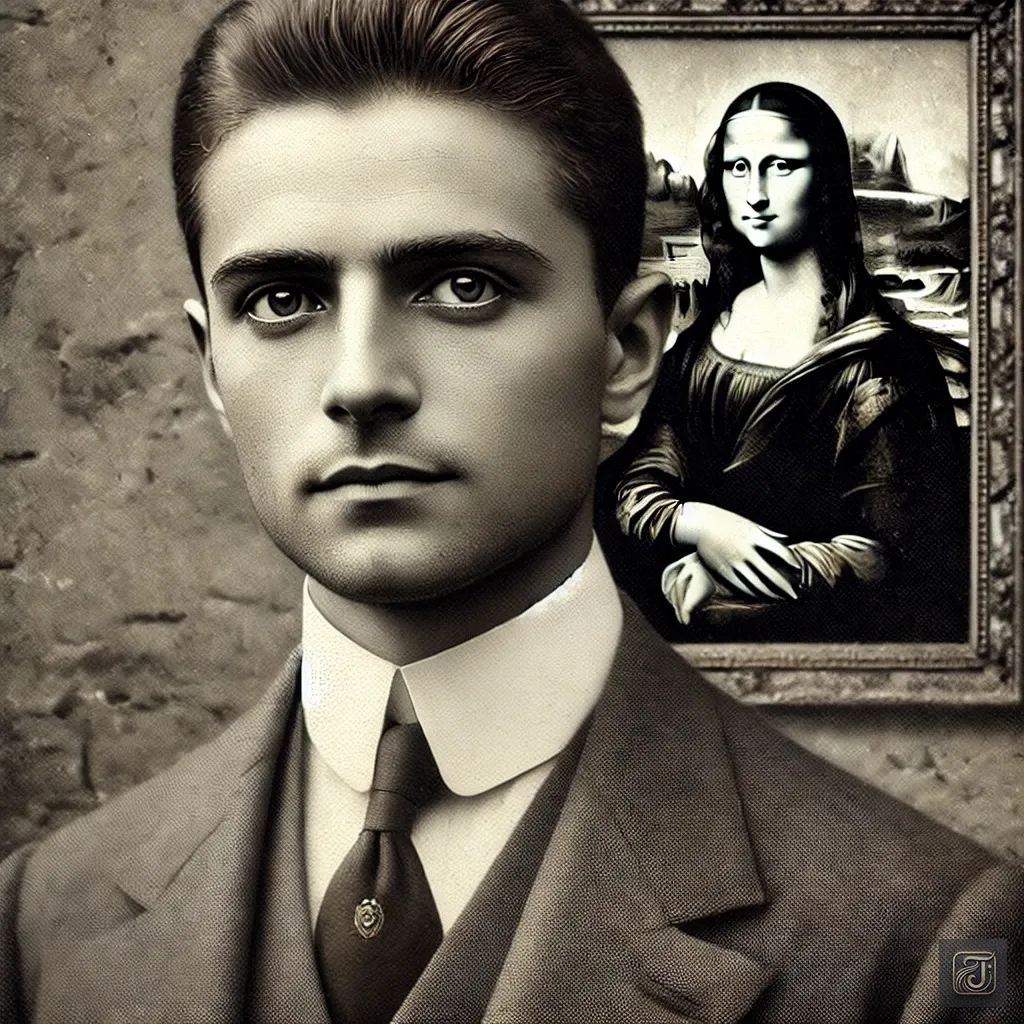
Vincenzo Peruggia
(October 8, 1881 – October 8, 1925)
An Italian man known for stealing the Mona Lisa from the Louvre Museum in 1911.
His crime is considered “the greatest art theft of the 20th century” and played a significant role in making the Mona Lisa world-famous.
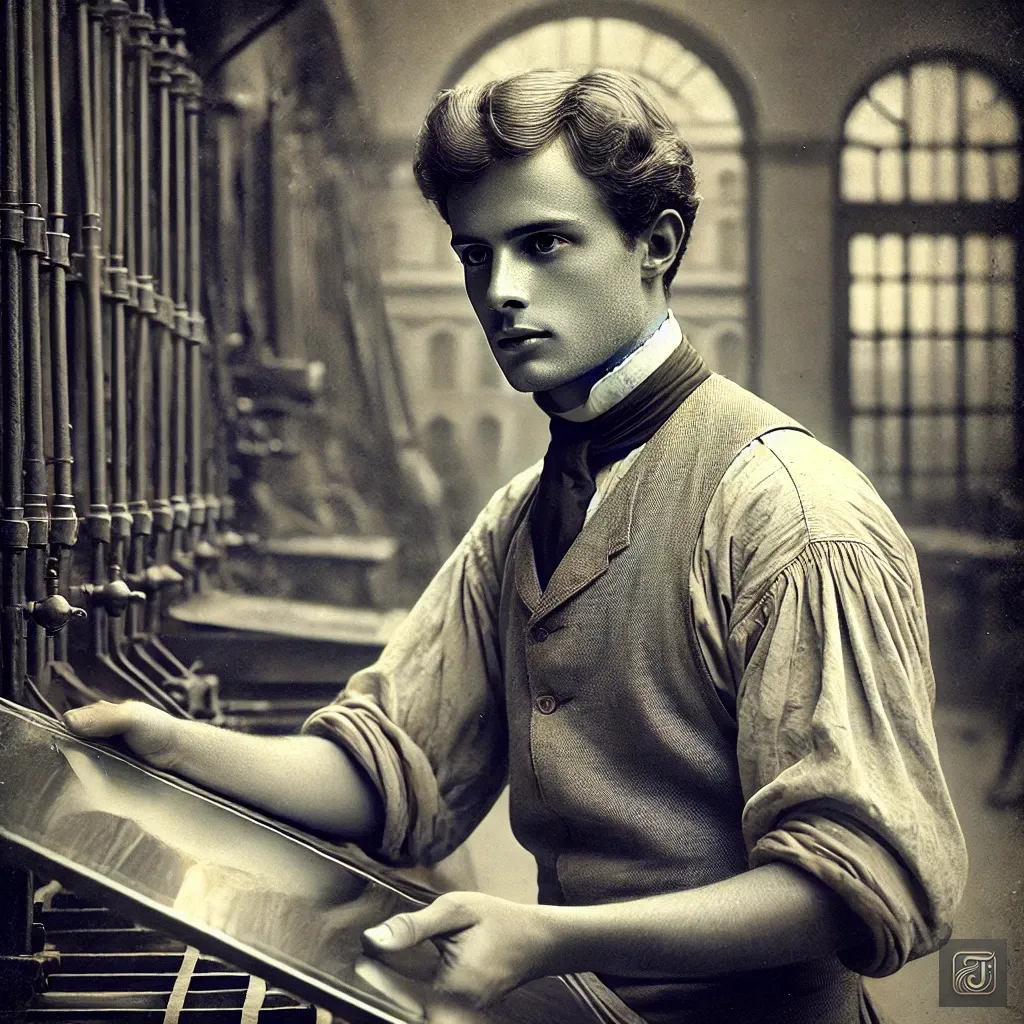
1. Early Life and Background
Birthplace: Dumenza, Lombardy, Italy (a small village)
Occupation: Glassworker, painter’s apprentice
Migration: Moved to France in the early 1900s and lived in Paris
Peruggia worked as a glassworker in France and was involved in installing protective glass at the Louvre Museum.
This allowed him to gain intimate knowledge of the museum’s layout and security system.
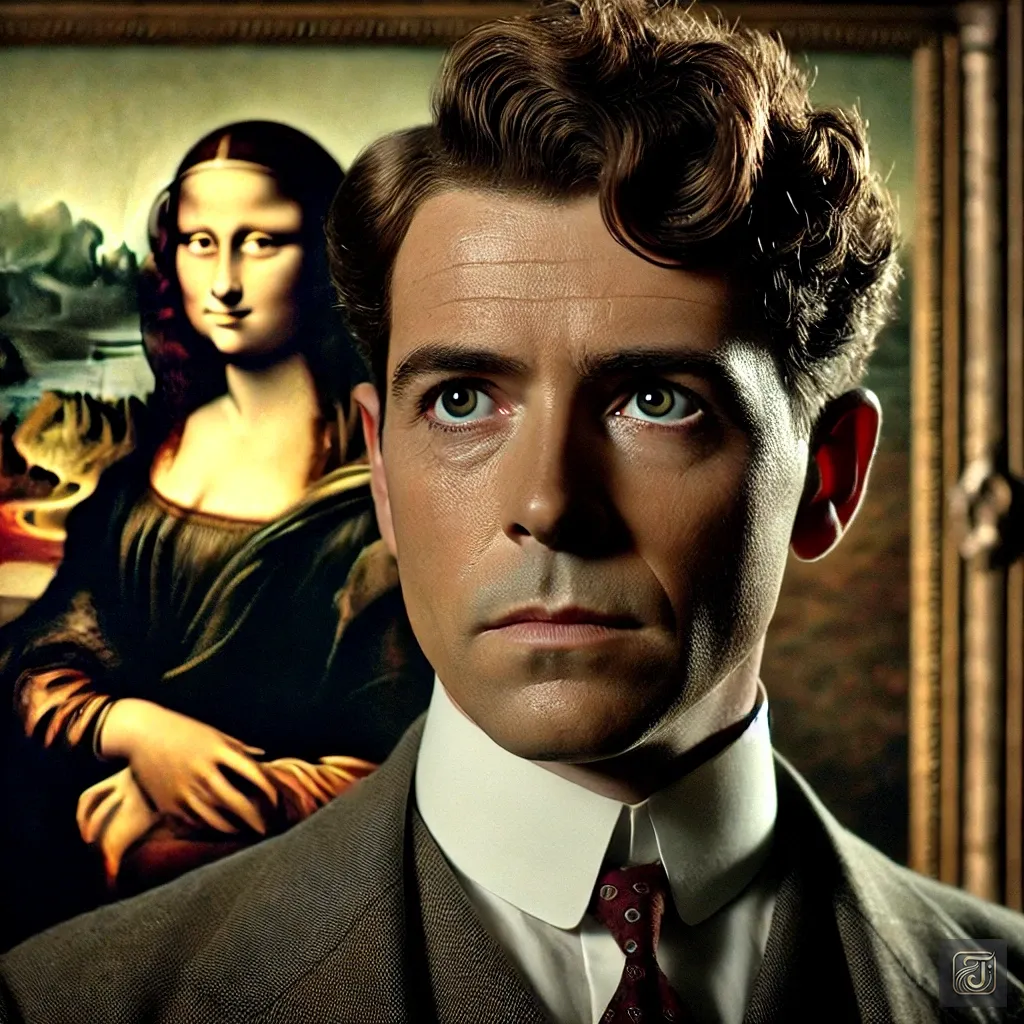
2. Motive for the Theft
There are various theories regarding why Peruggia stole the Mona Lisa, but the most widely accepted one is that he was driven by patriotism.

Crime Motivated by Patriotism
He believed that the Mona Lisa was an Italian masterpiece and rightfully belonged in Italy.
He was aware of France’s history of looting Italian artwork during Napoleon’s era and was convinced that the Mona Lisa was one of those stolen pieces.
Driven by a sense of duty, he felt it was his mission to return the Mona Lisa to Italy.
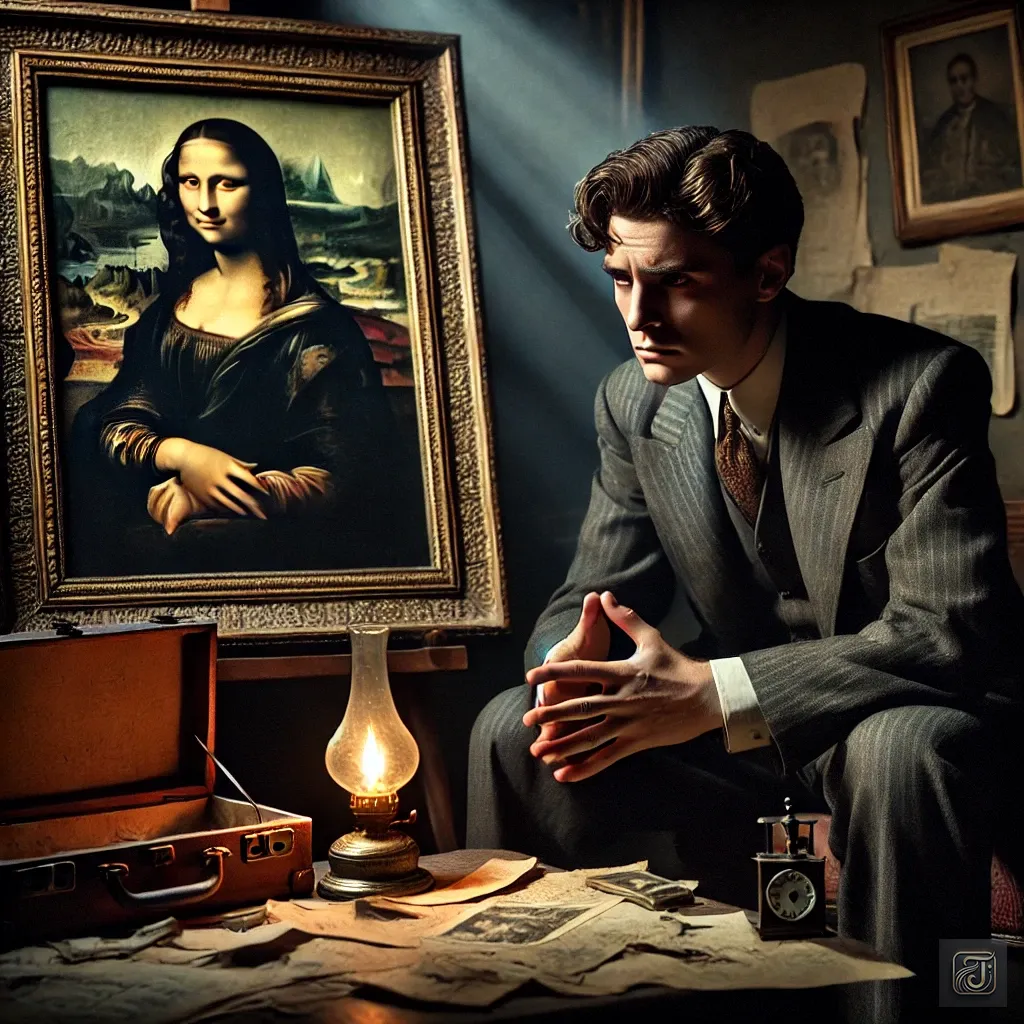
Was it for financial gain?
Some theories suggest that Peruggia was not only motivated by patriotism but also intended to sell the Mona Lisa for profit.
However, since he did not attempt to sell the painting immediately and instead kept it hidden in his home for nearly two years, it is more likely that he genuinely intended to return it to Italy.

3. Details of the Crime
Planning the Theft
Peruggia used his experience as a former Louvre worker to identify and exploit weaknesses in the museum’s security.
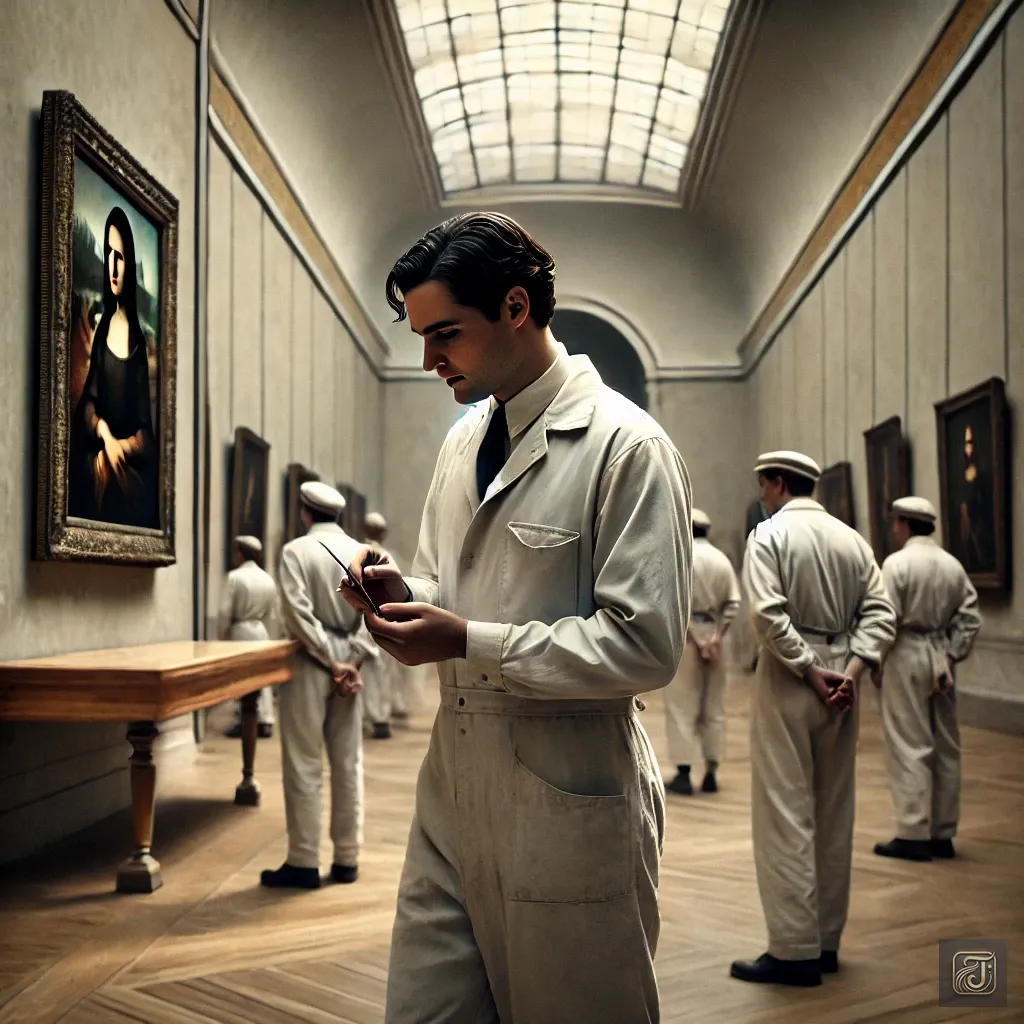
August 21, 1911 (Monday) – The Day of the Theft
・Disguise: Wore a white worker’s uniform, the same as the Louvre’s cleaning staff.
・Time: Early morning, before the museum opened.
・Entry: Blended in with other workers and walked into the exhibition room unnoticed.
・Theft: Removed Mona Lisa from the wall, hid it under his coat, and walked out.
・Escape: After leaving the museum, he took a taxi back to his apartment.
Amazingly, Peruggia successfully stole the world’s most famous painting in just about 30 minutes.
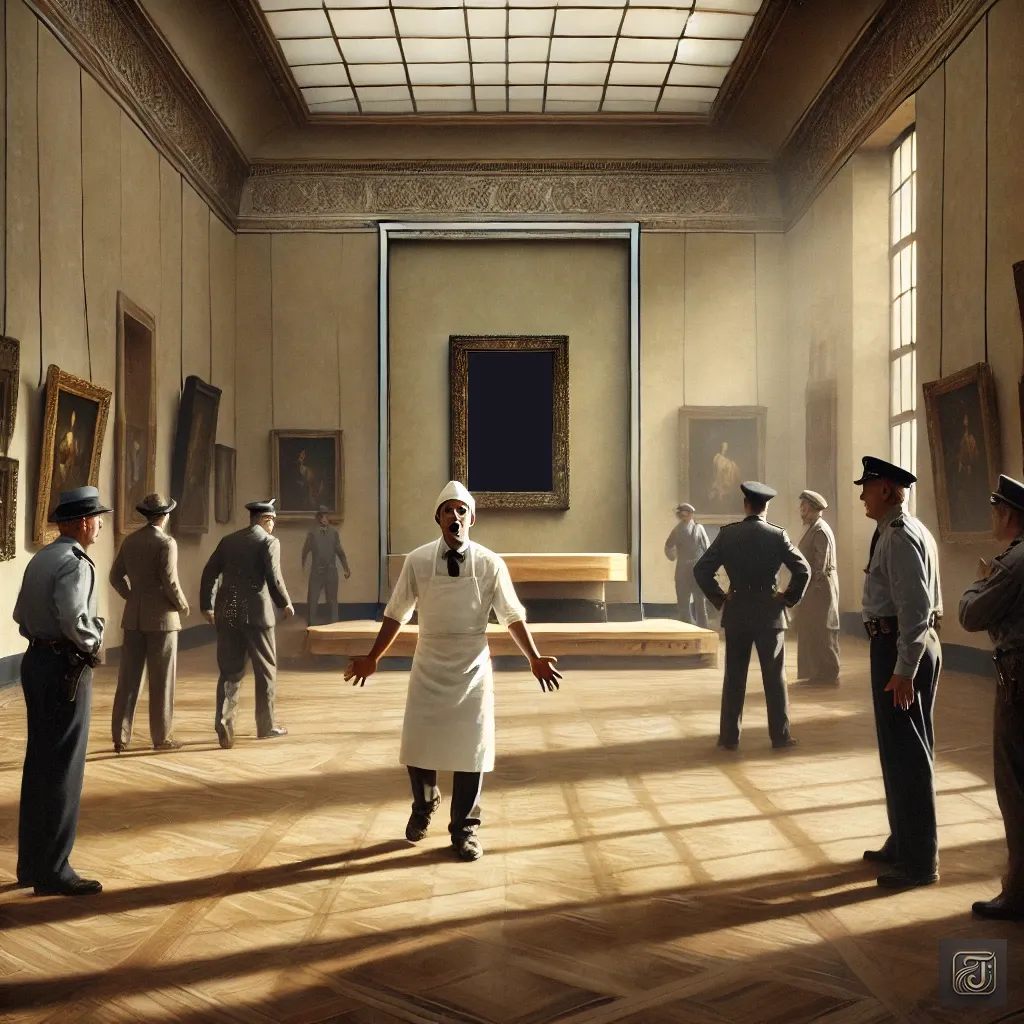
4. Discovery of the Theft and Investigation
On the morning of August 22, a Louvre janitor noticed something was wrong and alerted the police, shouting, “Mona Lisa is gone!”
The incident sent shockwaves across France and quickly became global news.
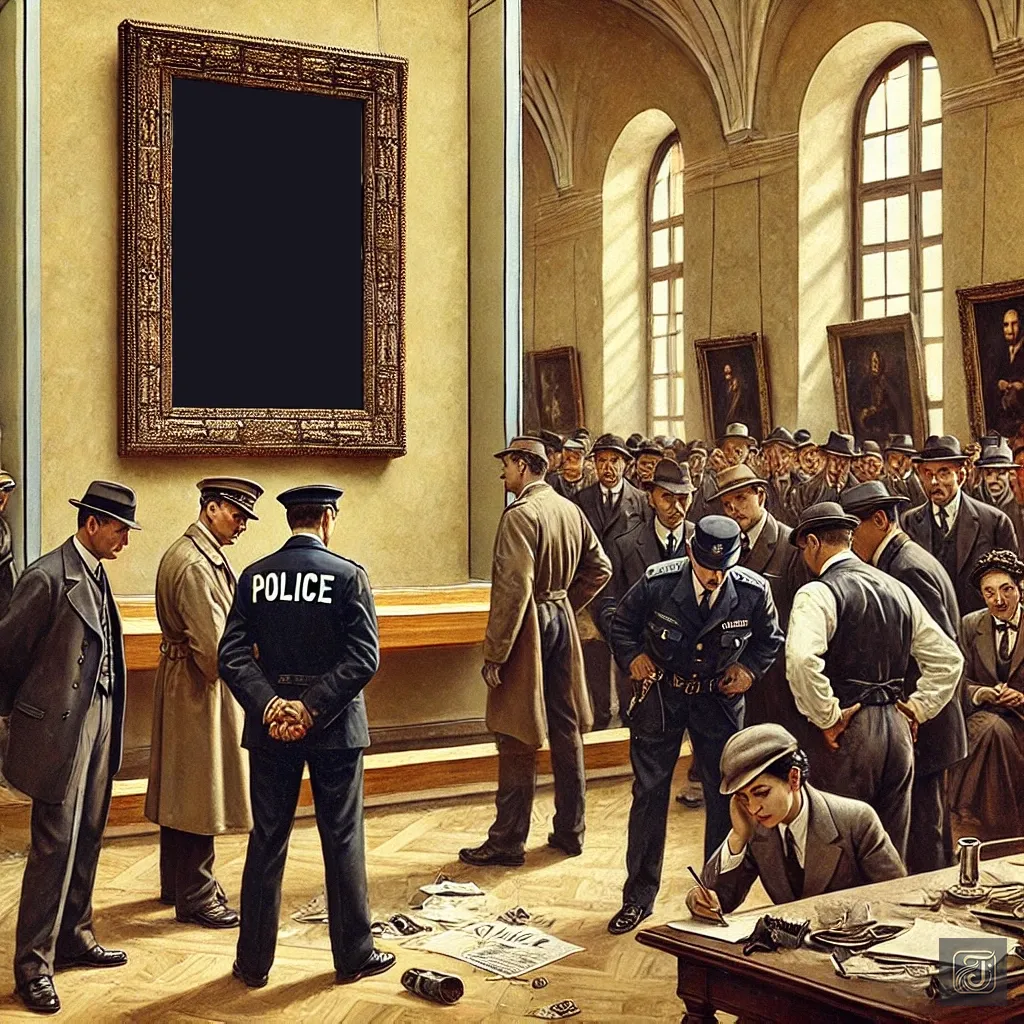
Police Investigation
The Louvre Museum was closed for several weeks as authorities conducted a thorough investigation.
French police initially questioned notable artists, including Pablo Picasso and poet Guillaume Apollinaire, as potential suspects.
However, with no definitive evidence, the investigation stalled.
As a result, the Mona Lisa remained missing for two years.
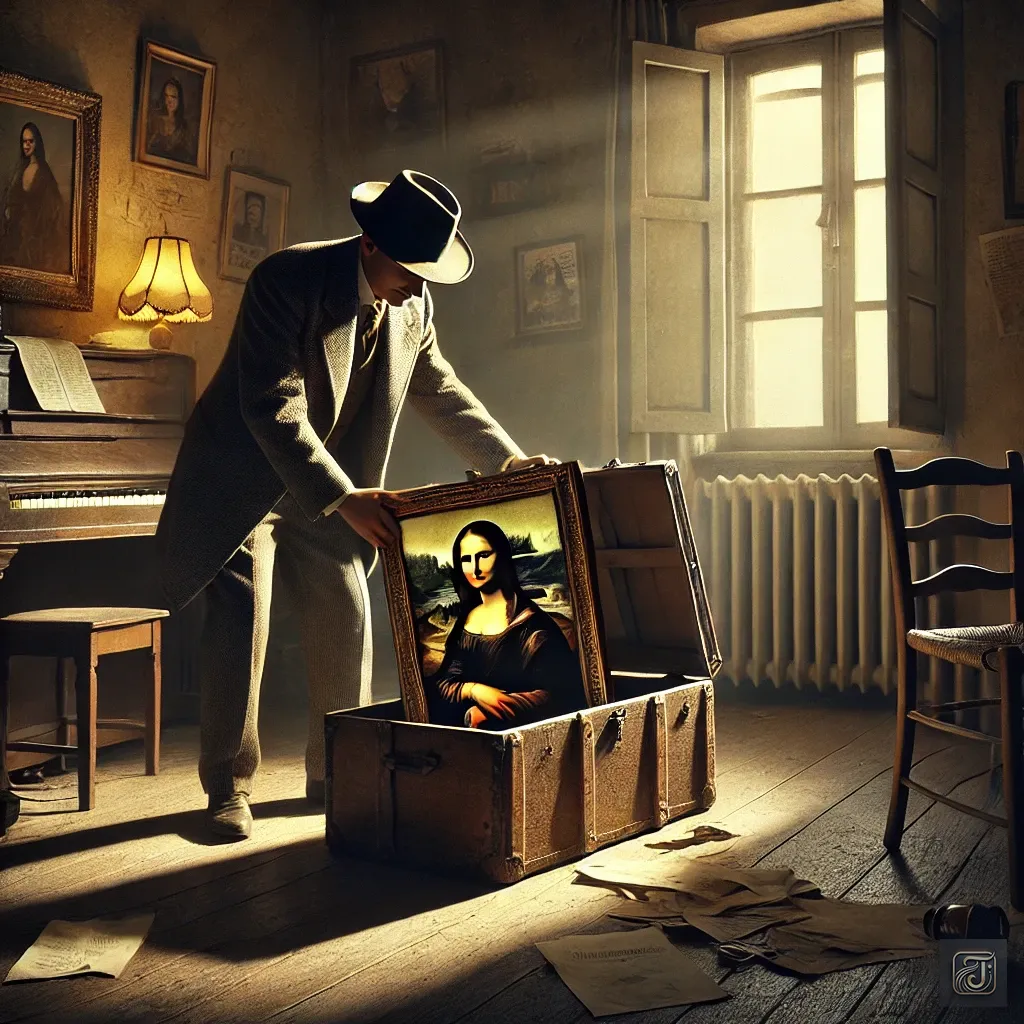
5. Life in Hiding (1911–1913)
Peruggia kept the stolen Mona Lisa hidden inside a trunk in his Paris apartment.

Psychological Changes
At first, he was driven by a sense of mission to return the Mona Lisa to Italy, but over time, he began to question what to do next.
He would occasionally open the trunk and stare at her enigmatic smile.
In his small, lonely apartment, he spent isolated days face-to-face with Mona Lisa.
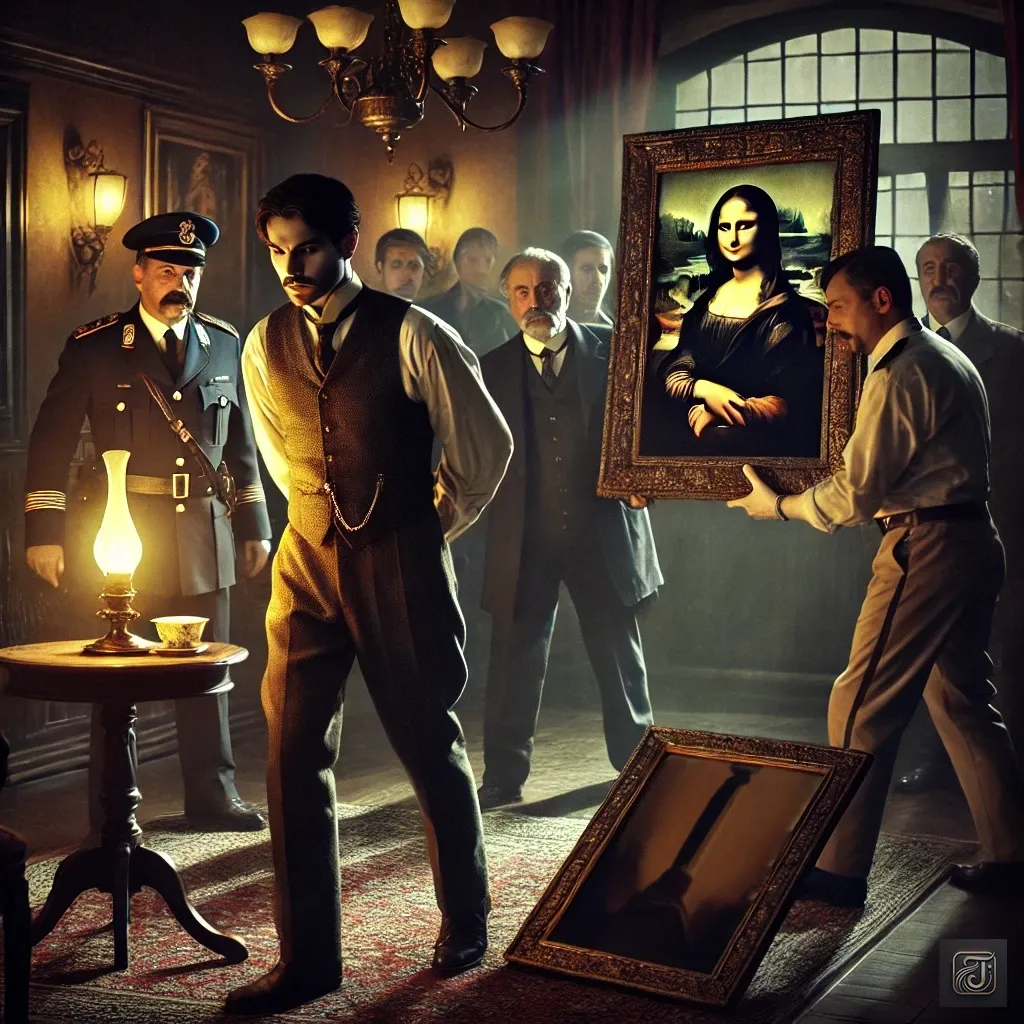
6. Arrest and Trial
December 1913 – Mona Lisa is Found
Peruggia finally attempted to sell the Mona Lisa to a Florence art dealer, Alfredo Geri.
Geri became suspicious and reported him to the Italian police.
On December 11, while negotiating the sale at a hotel in Florence, Peruggia was caught and arrested on the spot.
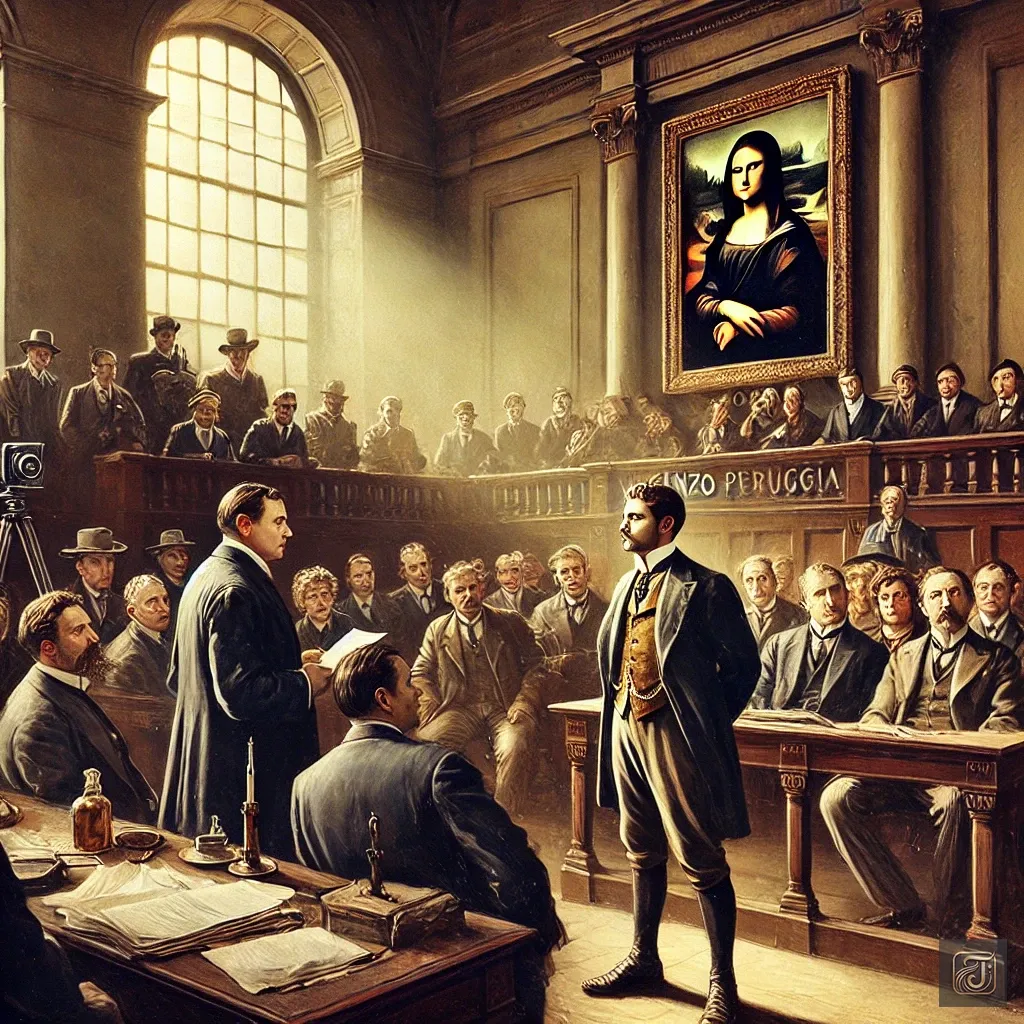
1914 – Trial and Verdict
In court, Peruggia claimed that his actions were driven by patriotism.
As a result, he received a light sentence of only one year and three months.
The French government, facing the looming threat of war, decided not to escalate the matter further.
After his release, Peruggia returned to Italy and lived a quiet life.
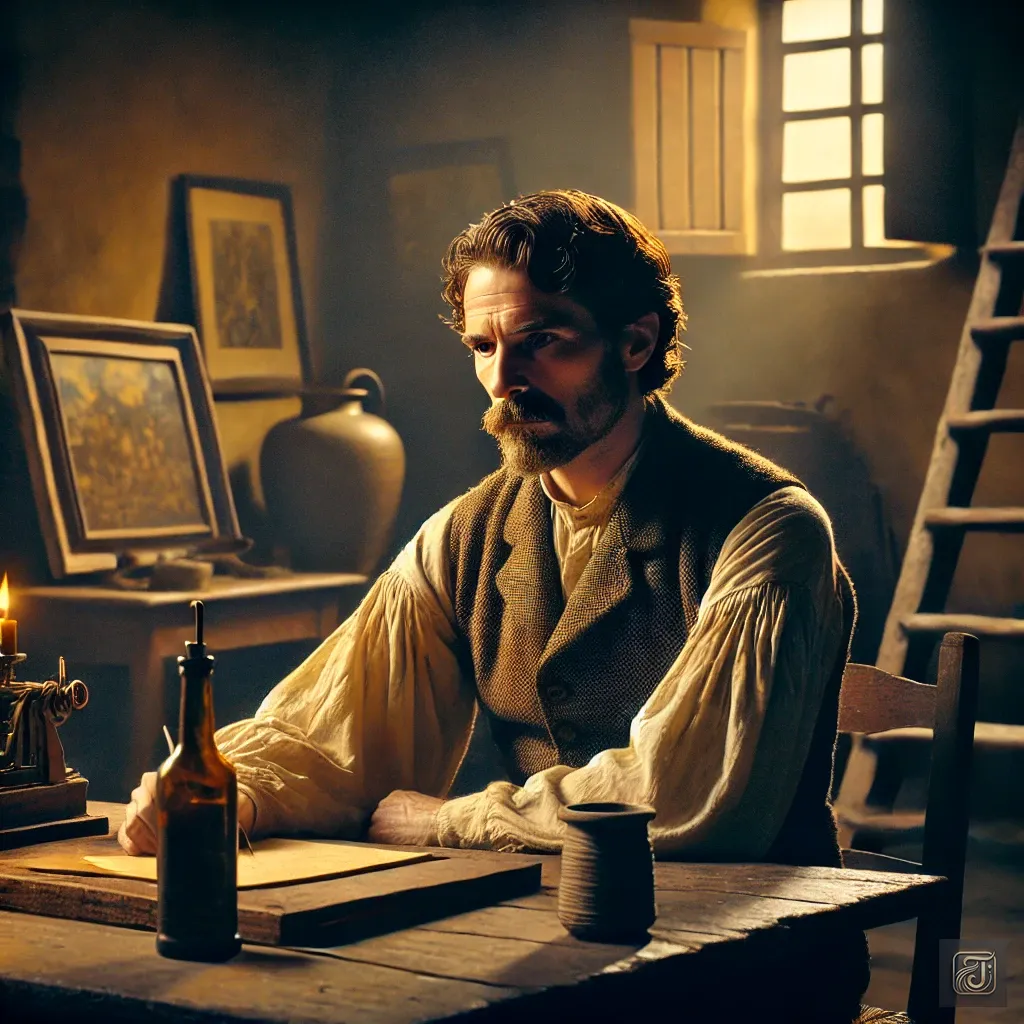
7. Later Life
After his release, Peruggia lived an ordinary life.
He passed away on October 8, 1925, on his 44th birthday.
Apart from the Mona Lisa theft, he did not engage in any notable activities.
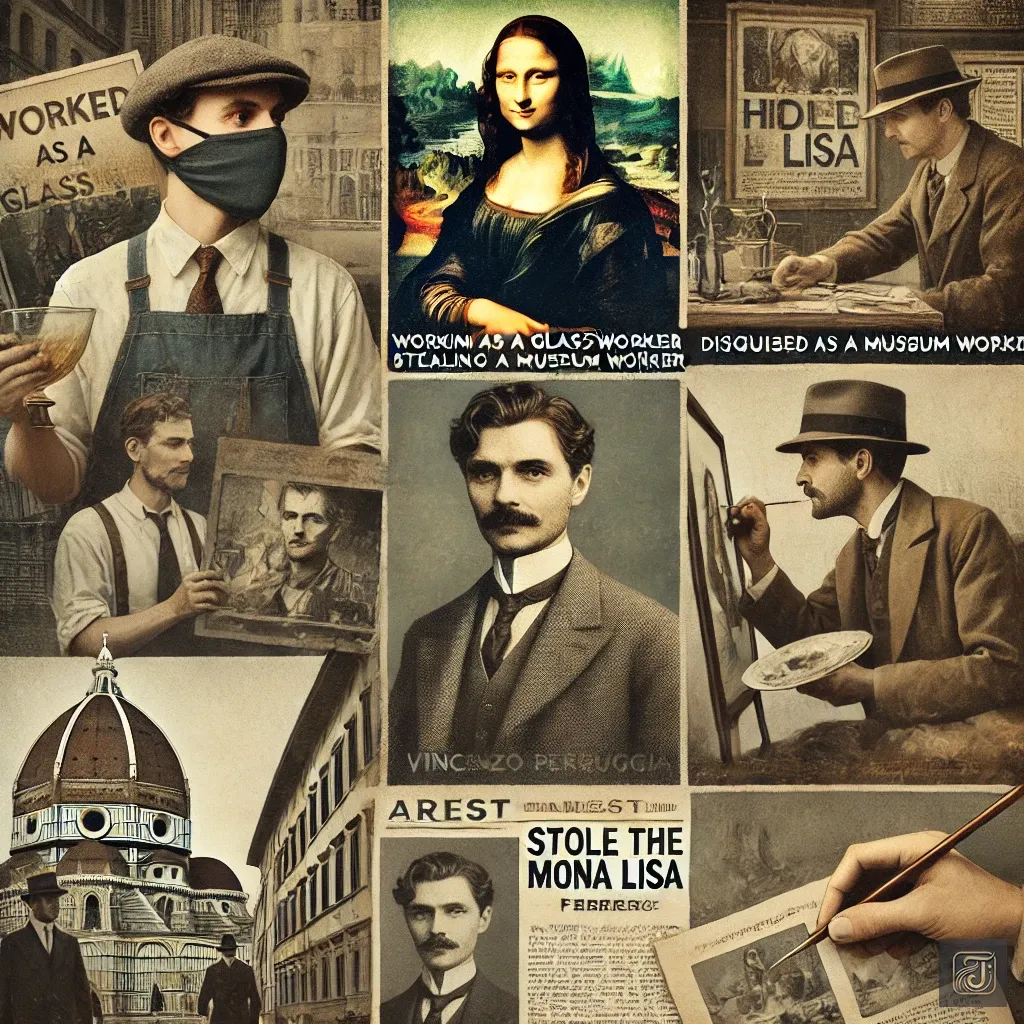
Summary
✅ Vincenzo Peruggia was not just an ordinary thief; he was a man who, driven by patriotism, carried out the greatest art theft of the 20th century.
✅ He hid the Mona Lisa for two years, but in the end, his own uncertainty led him to attempt a sale, resulting in his arrest.
✅ His sentence was only one year and three months, and after his release, he lived a quiet life.

His actions ultimately played a significant role in making the Mona Lisa “the most famous painting in the world,” giving them an important place in modern art history.
Chapter 9: The Dreams of War, The Journey of a Smile
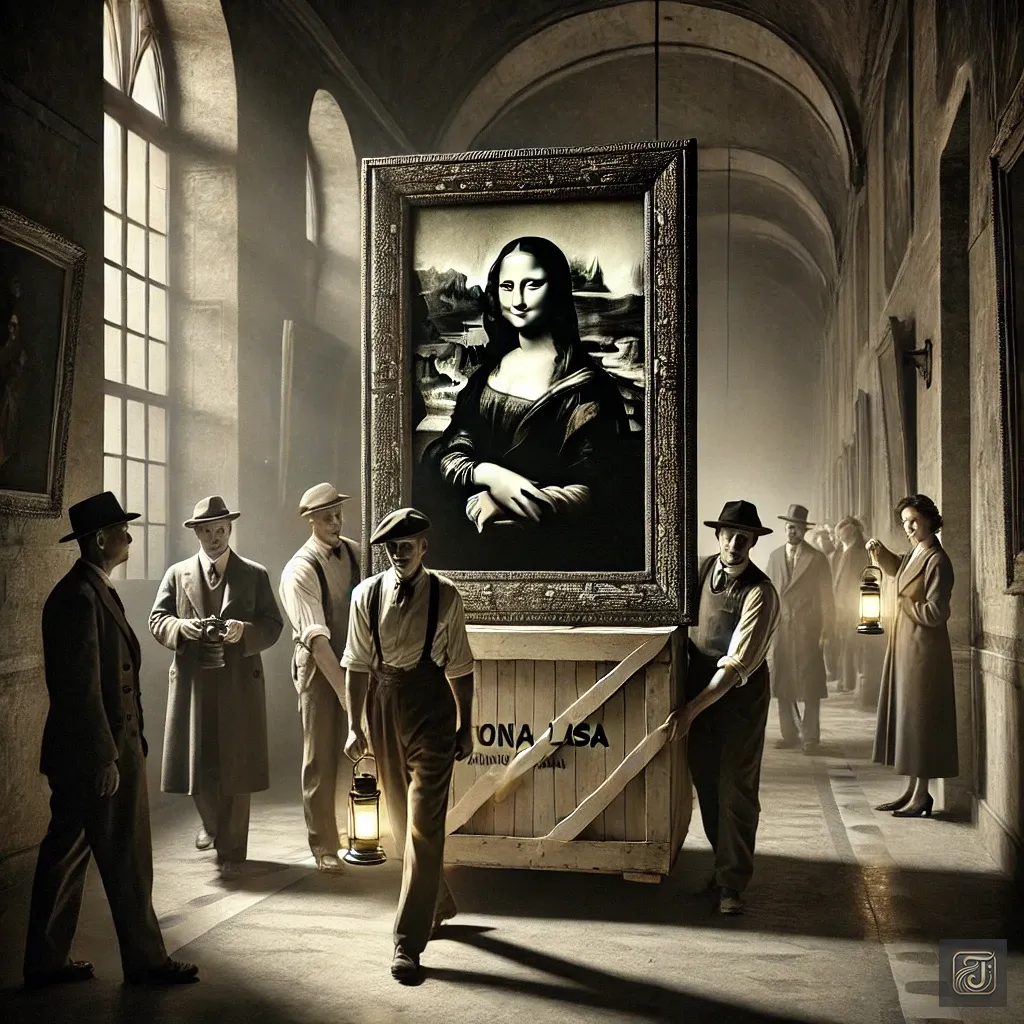
During World War II, to prevent Nazi looting, the Mona Lisa was secretly moved from the Louvre Museum and hidden in multiple locations.
Records indicate that it was kept in places such as the Loire Valley châteaux and small village churches, as part of efforts to protect cultural treasures.
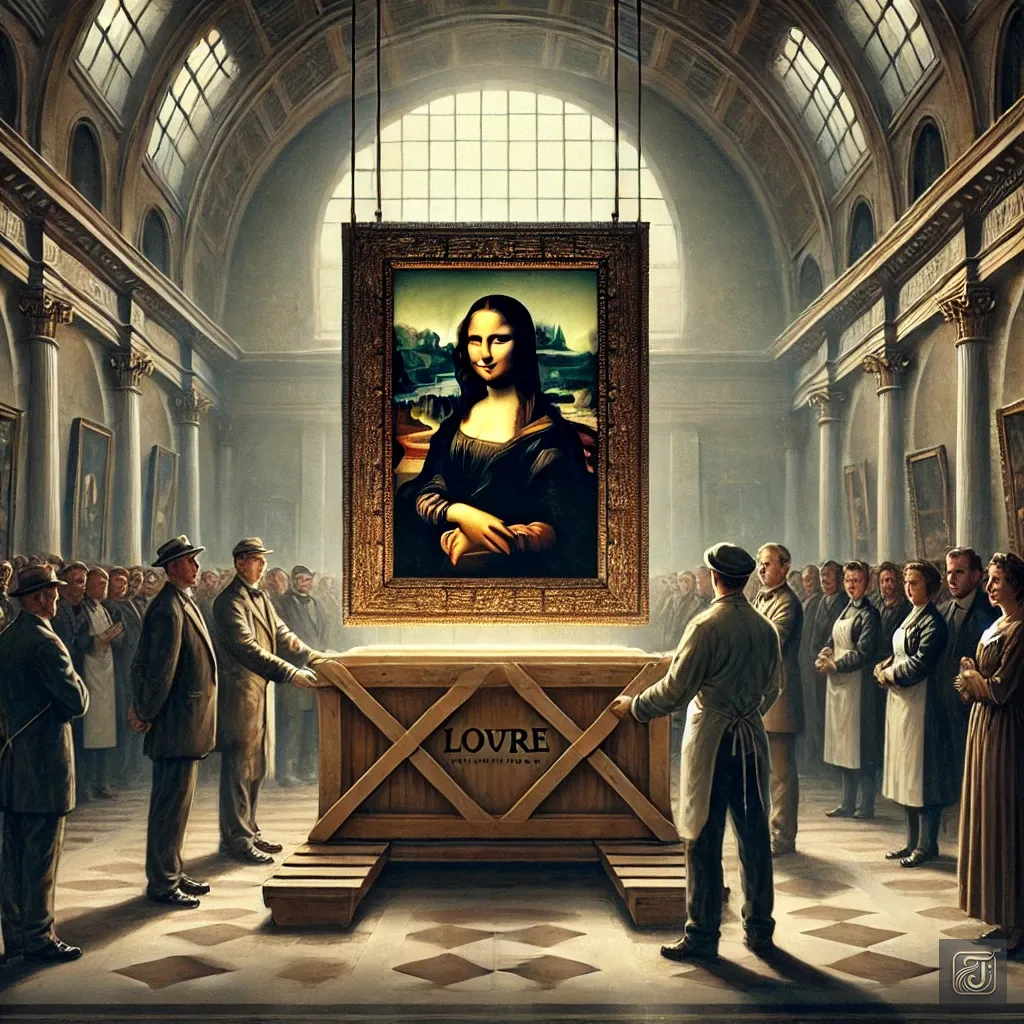
After the war, the Mona Lisa was eventually returned to the Louvre Museum.
Her smile, which had drifted through history, now rested once again in its rightful place, quietly watching over those who came to see her.
Chapter 10: Popularity in the 20th Century and Beyond
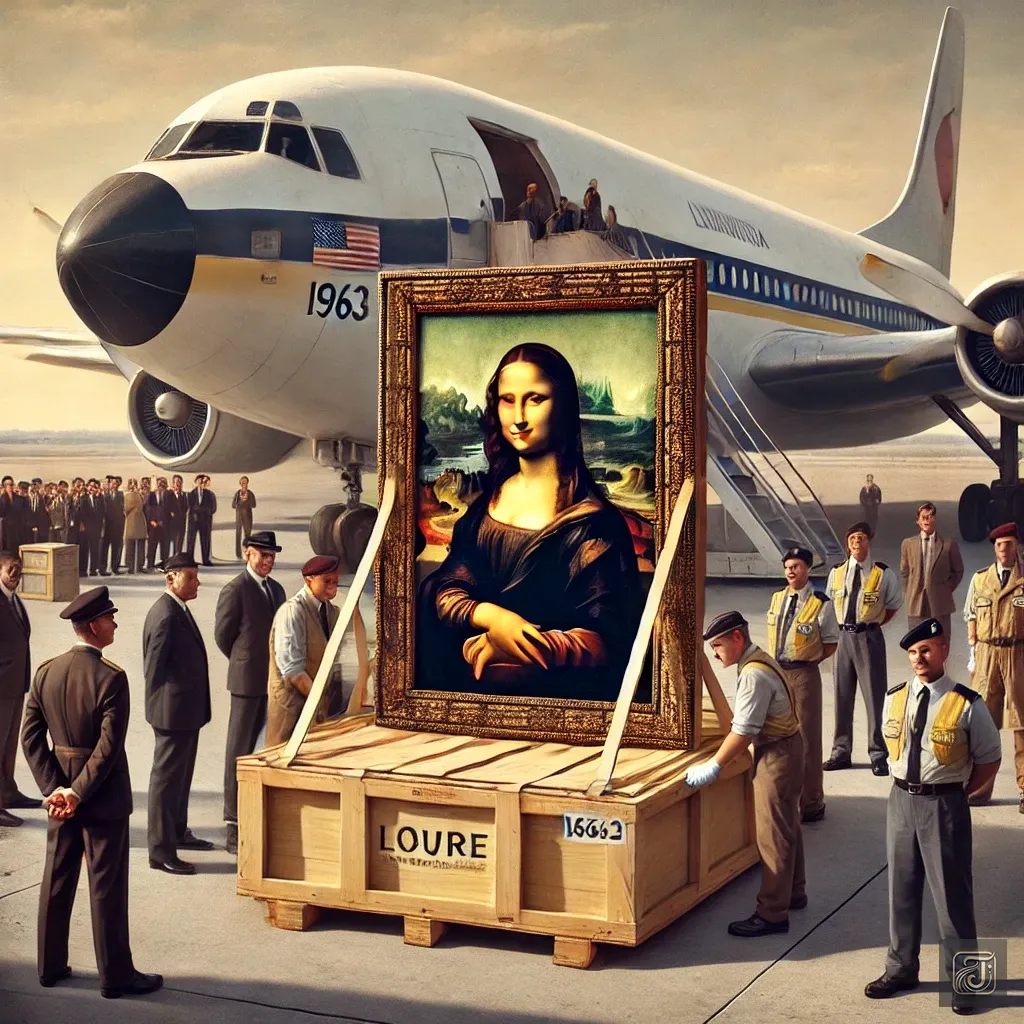
Mona Lisa’s World Tour
In 1963, the Mona Lisa left the Louvre and traveled to the United States.
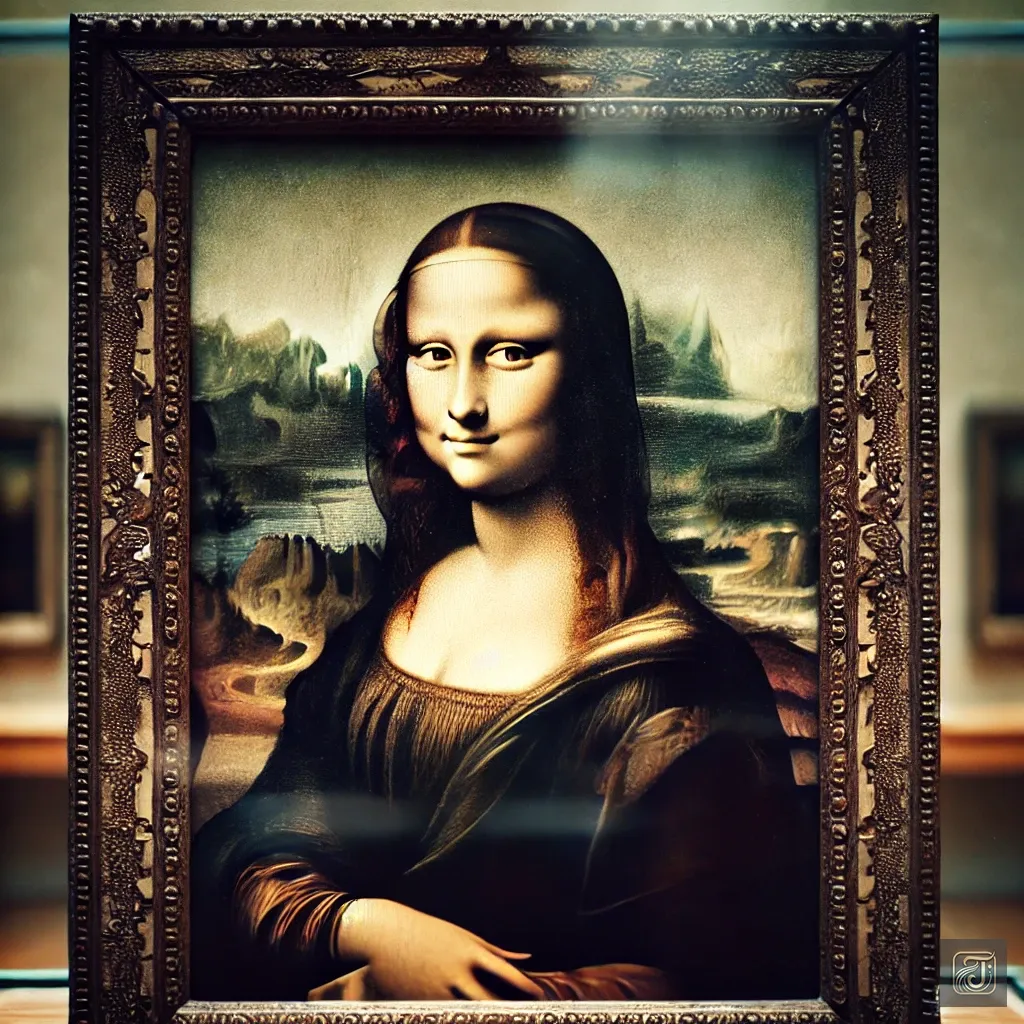
Mona Lisa:
“I never thought I would come this far…”
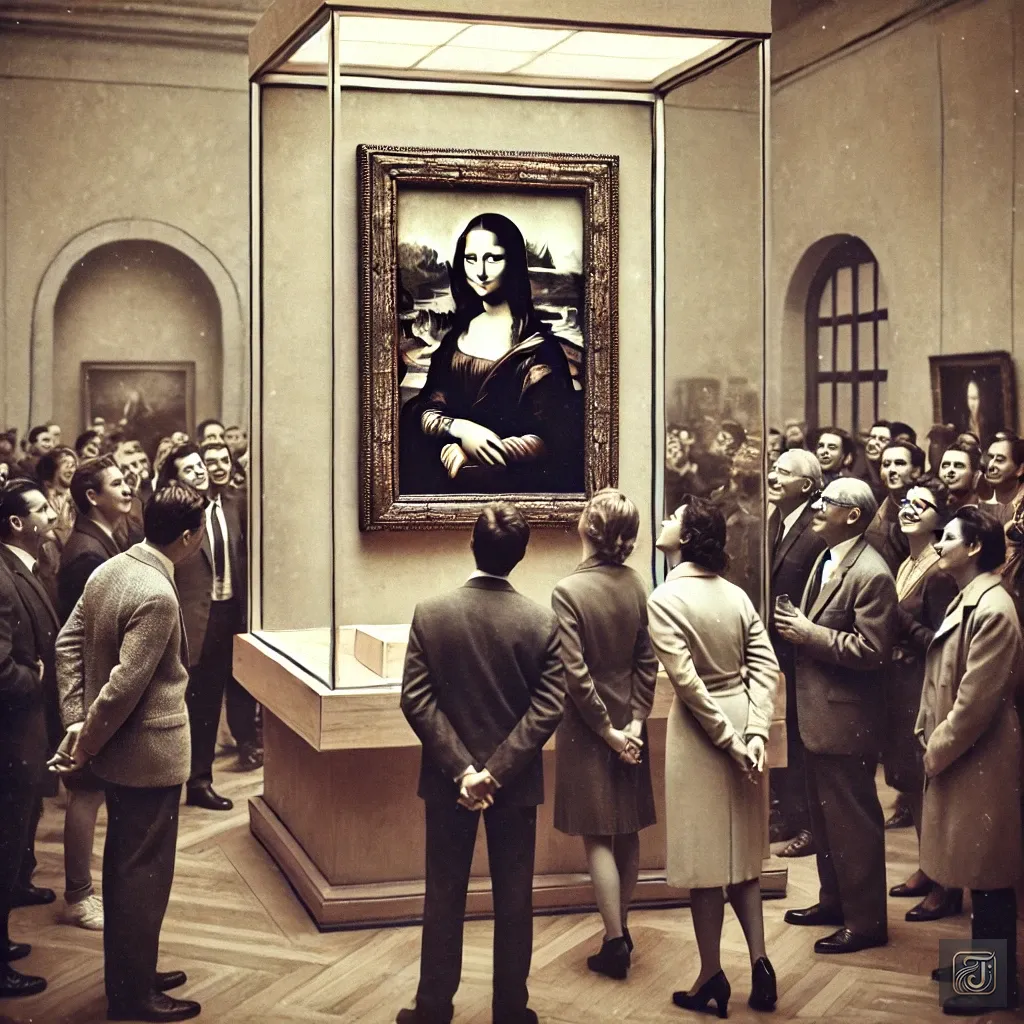
Her smile was welcomed at the White House, and in New York, tens of thousands of visitors lined up to see her.
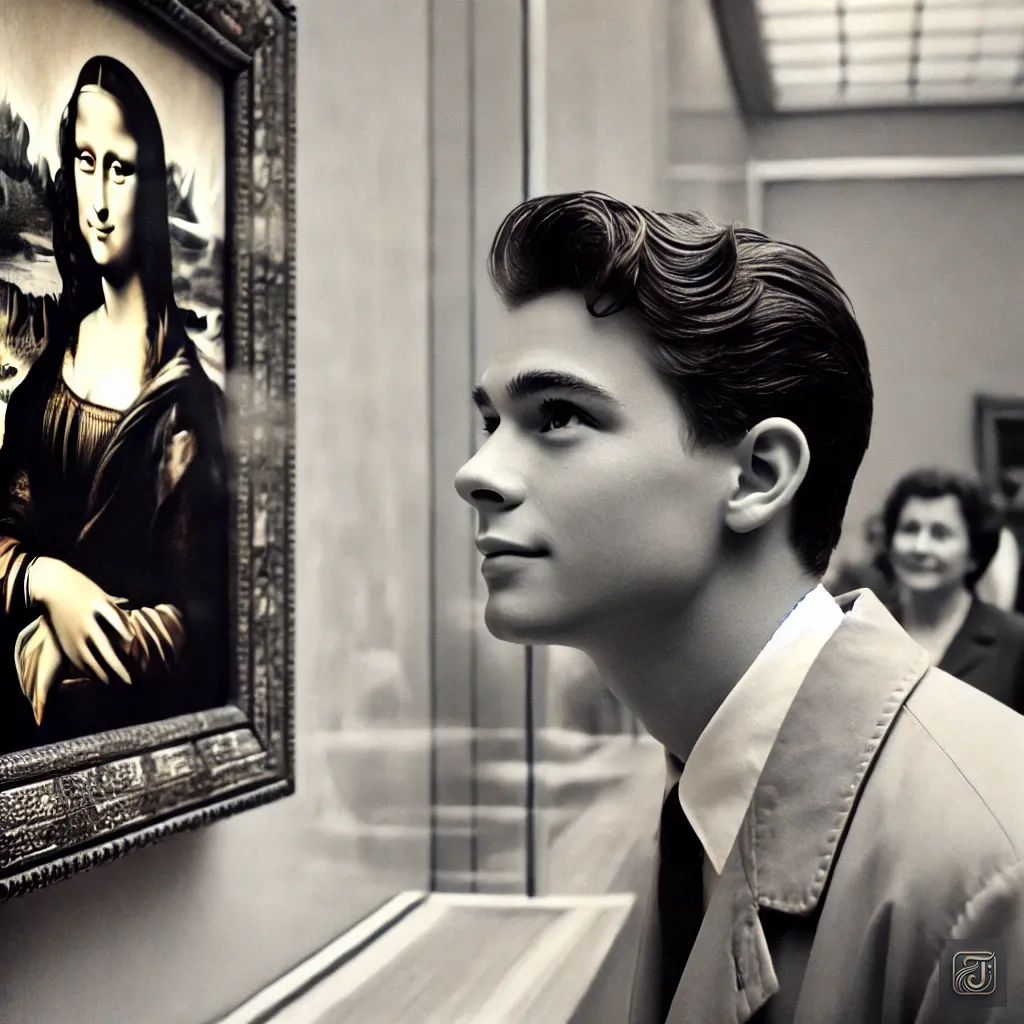
Crowd:
“I never thought I’d get to see the Mona Lisa in person here in America.”
“It’s much smaller than I imagined… but I can’t quite explain it—there’s something about her gaze that draws me in.”
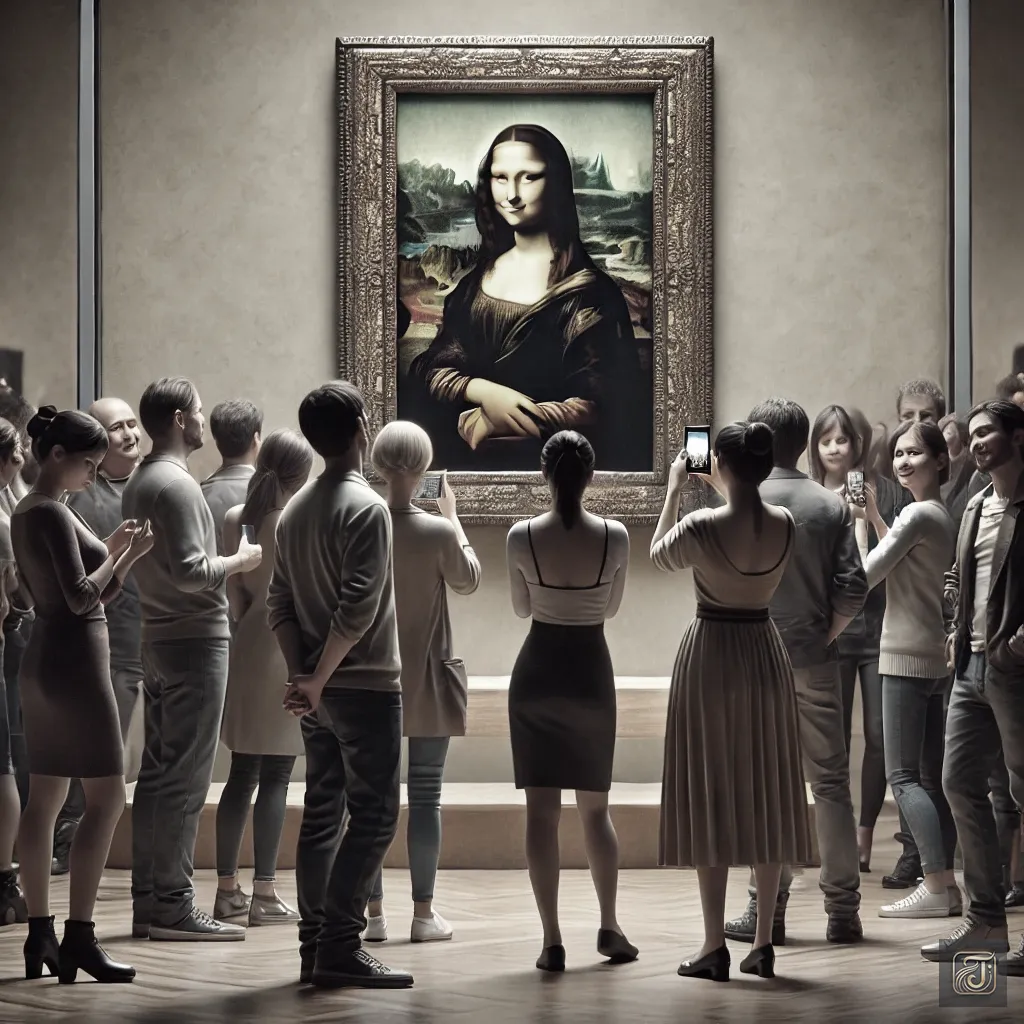
People gasped in admiration, speaking to her as if reuniting with an old friend.
Some took photographs, others stared in silence, and a few even whispered words to her.
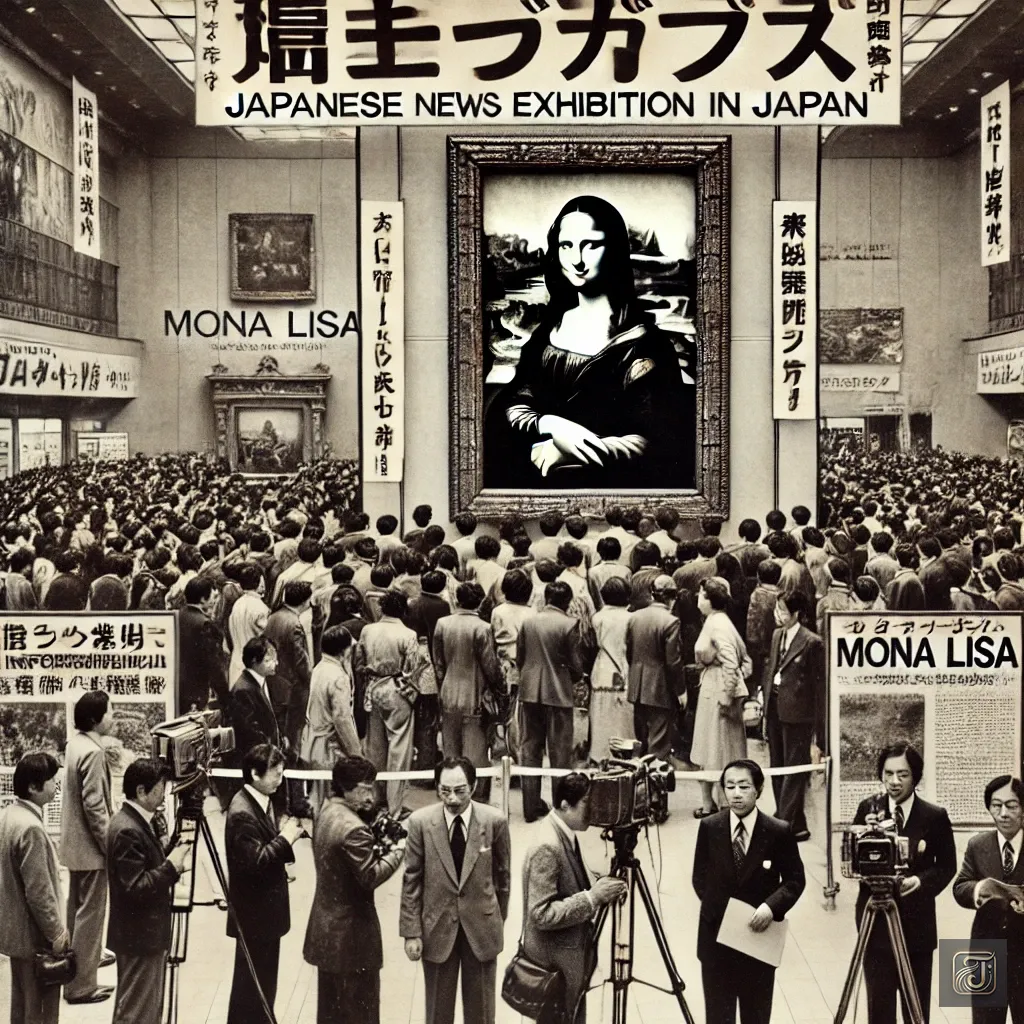
In 1974, when the Mona Lisa was exhibited in Japan and the Soviet Union (then USSR), the enthusiasm remained as strong as ever.
In Japan, the news covered her visit daily, and special television programs were dedicated to her.
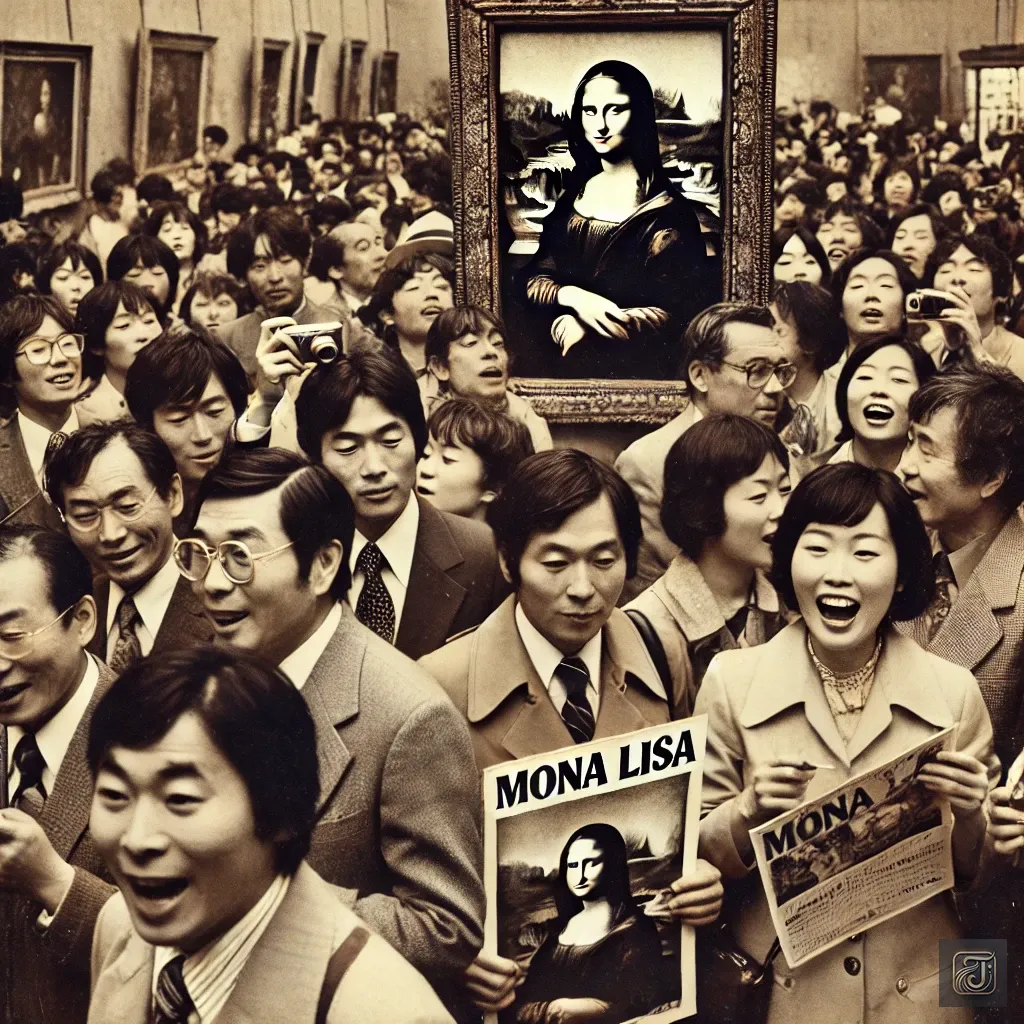
Crowd:
“It’s like a movie star has come to Japan!”
“The souvenir shop is packed with people!”
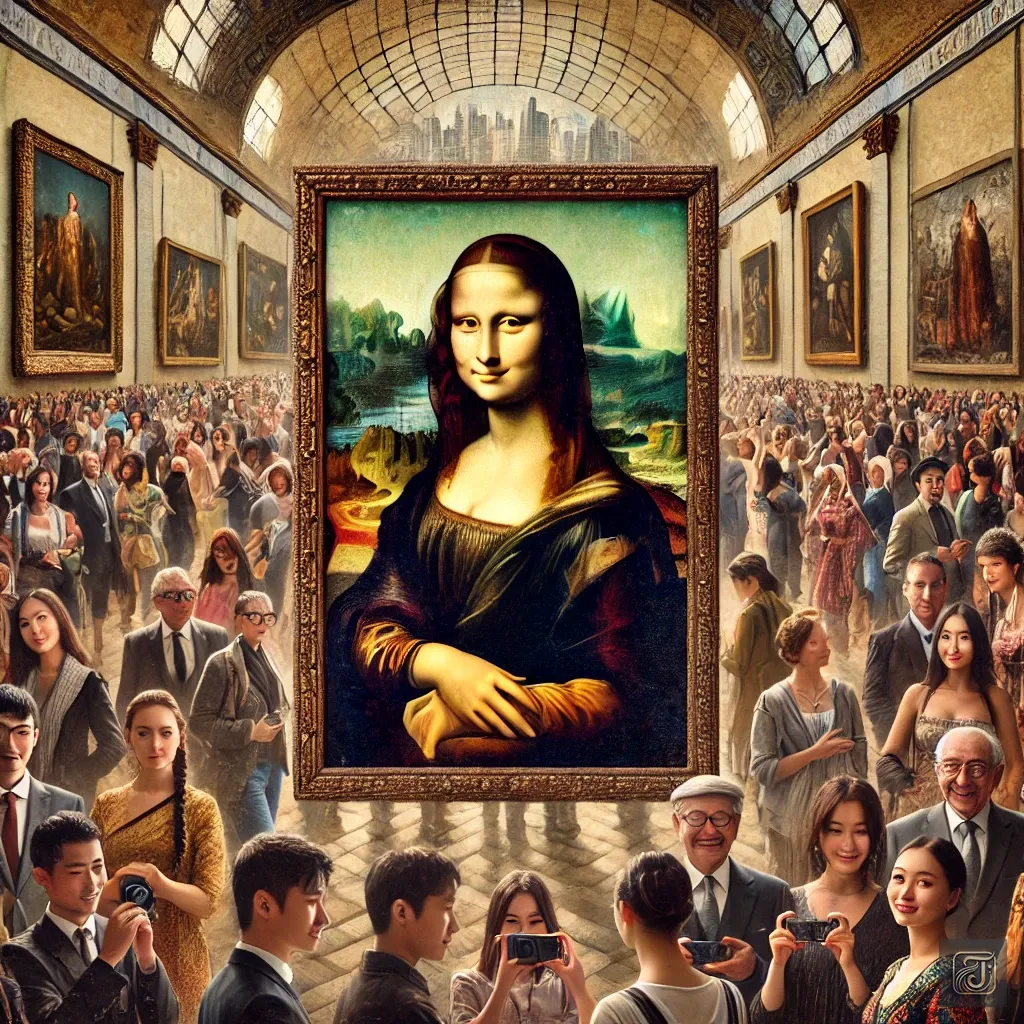
She had stepped out of her small room in the Louvre and traveled the world.
Every day, Mona Lisa gazed upon people from all corners of the earth, meeting those who sought to uncover her secrets.
Even those unfamiliar with art were captivated by this single image, inspiring many to visit an art museum for the first time.
Though times changed, her smile remained the same, continuing to move hearts wherever she went.

Mona Lisa’s gaze holds an undeniable allure.
Many people say that no matter where they stand, she seems to be looking directly at them.
This phenomenon is believed to be the result of Leonardo da Vinci’s sfumato technique.
By softening outlines and carefully balancing light and shadow, he created an effect where the painting subtly changes depending on the viewer’s position.
Yet, even with this explanation, people still say:

“She is looking at me.”
Perhaps her mystery remains unsolved to this day.
Chapter 11: The Smile That Remains a Target
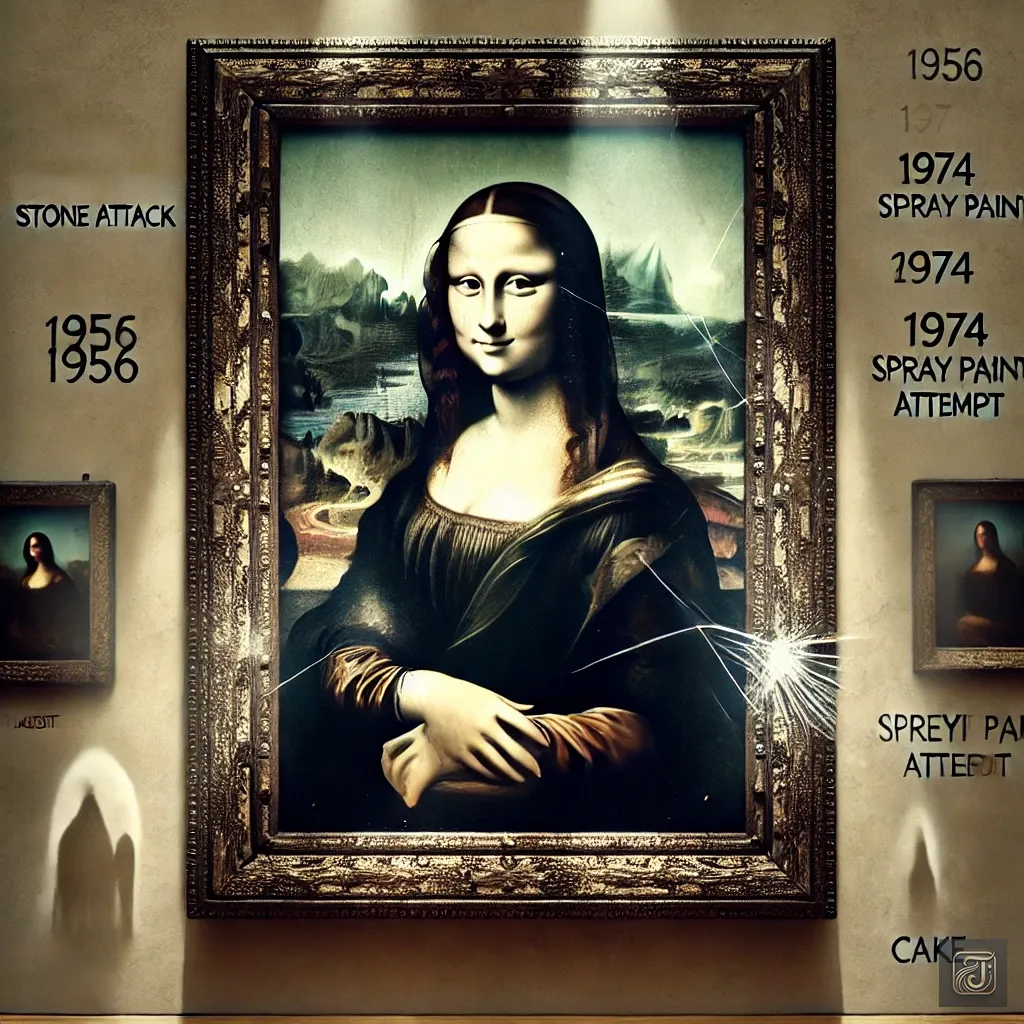
Mona Lisa’s trials were far from over.

Mona Lisa:
“In 1956, a visitor threw acid at the painting, causing significant damage to the lower part of the canvas.”
Mona Lisa:
“On December 30 of the same year, a man threw a stone at me, injuring my right elbow.”
The man:
“Art is meaningless!”
“What’s so great about this painting?!”
As a result of this incident, I am now protected by bulletproof glass.
Mona Lisa:
“Why…?”
“Why must I be attacked? I am only smiling…”
“For 500 years, I have always smiled at everyone.”
“But one day, someone threw a stone at me.”
“That man, filled with anger, tried to shatter my elbow.”
Mona Lisa:
“In 1974, during the exhibition in Japan, a woman holding a red spray can shouted.”
The woman:
“Mona Lisa!?”
“What’s so beautiful about this?”
“I’m far more beautiful than she is!”
Mona Lisa:
“Fortunately, no damage was done, but this incident sparked the question: Why do people attack the Mona Lisa?”

Mona Lisa:
“On August 2, 2009, a Russian woman, enraged after being denied French citizenship, threw a terracotta cup at me.”
“She had purchased the cup from the Louvre Museum’s souvenir shop before launching it at the painting.”

She shouted:
“Why are you smiling?! I was denied citizenship!”
Mona Lisa:
“Fortunately, the bulletproof glass protecting the painting prevented any damage.”
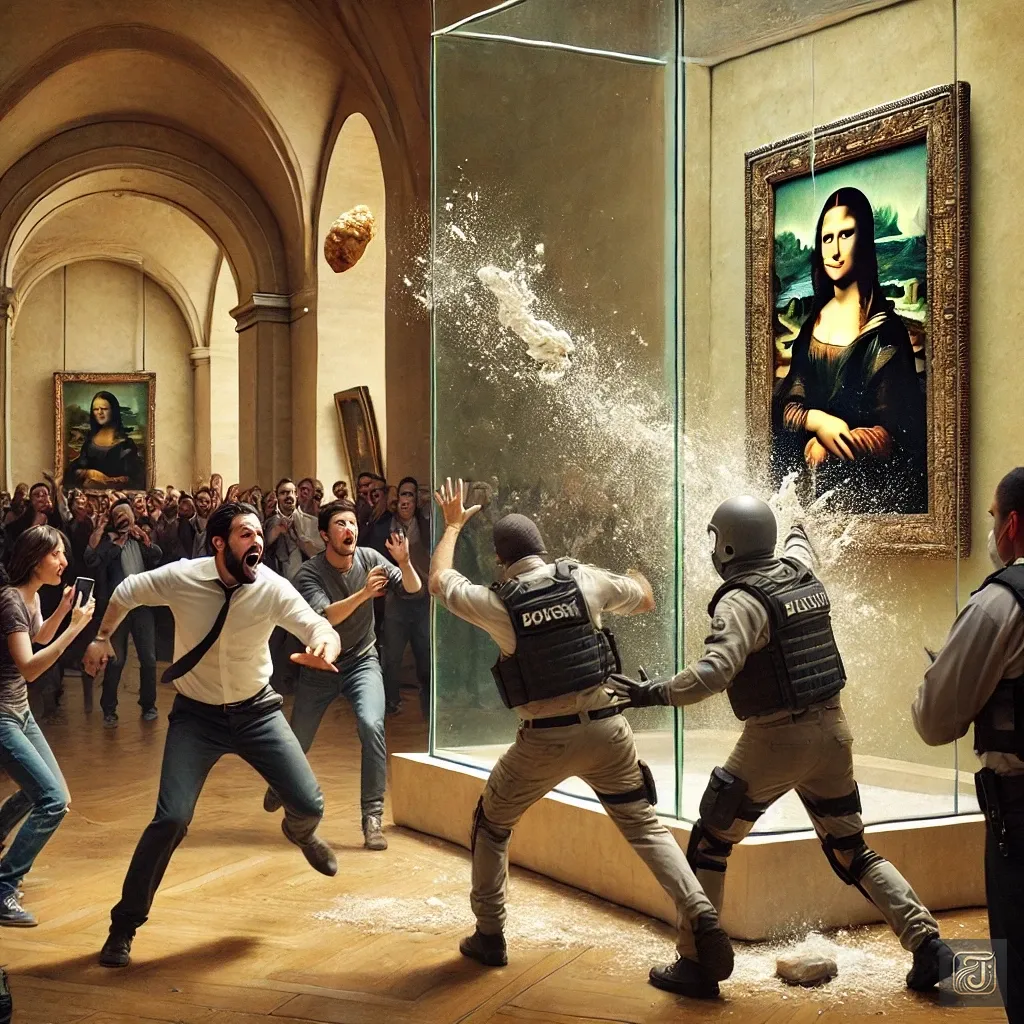
Mona Lisa:
“And then, in 2022.”
“An environmental activist threw a cake at me.”
“He shouted…”

The man:
“If you have time to admire art, open your eyes to reality!”
Mona Lisa:
“Thanks to the bulletproof glass, I remained unharmed.”
Mona Lisa:
“In 2024, a female environmental activist threw soup at me.”
The female environmental activist:
“The environment is more important than you!”
Mona Lisa:
“Thanks to the bulletproof glass, I remained unharmed.”
Mona Lisa:
“What was I to them?”
“Just a ‘painting’?”
“Their ‘enemy’? Or simply a target for their anger?”
“I do not know why they choose to attack me.”
“And yet, I remain unchanged.”
“I only smile.”
“No matter what they say, no matter what they do…”
“What they choose to do is not my burden to bear, but theirs alone.”
A curator:
“No matter how many times she is harmed, Mona Lisa always remains the same, quietly smiling.”
A curator at the Louvre stood before her and murmured those words.

Attacks on the Mona Lisa
・In 1956, a man threw a stone at her, injuring her right elbow.
・In 1974, during an exhibition in Japan, a woman with a disability attempted to spray red paint on her.
Fortunately, the attack was prevented, but the incident sparked debate: “Why do people attack the Mona Lisa?”
・In 2022, an environmental activist threw a cake at the painting.
However, she was protected by bulletproof glass, and her smile remained unchanged.
Chapter 12: A Smile That Endures into the Future
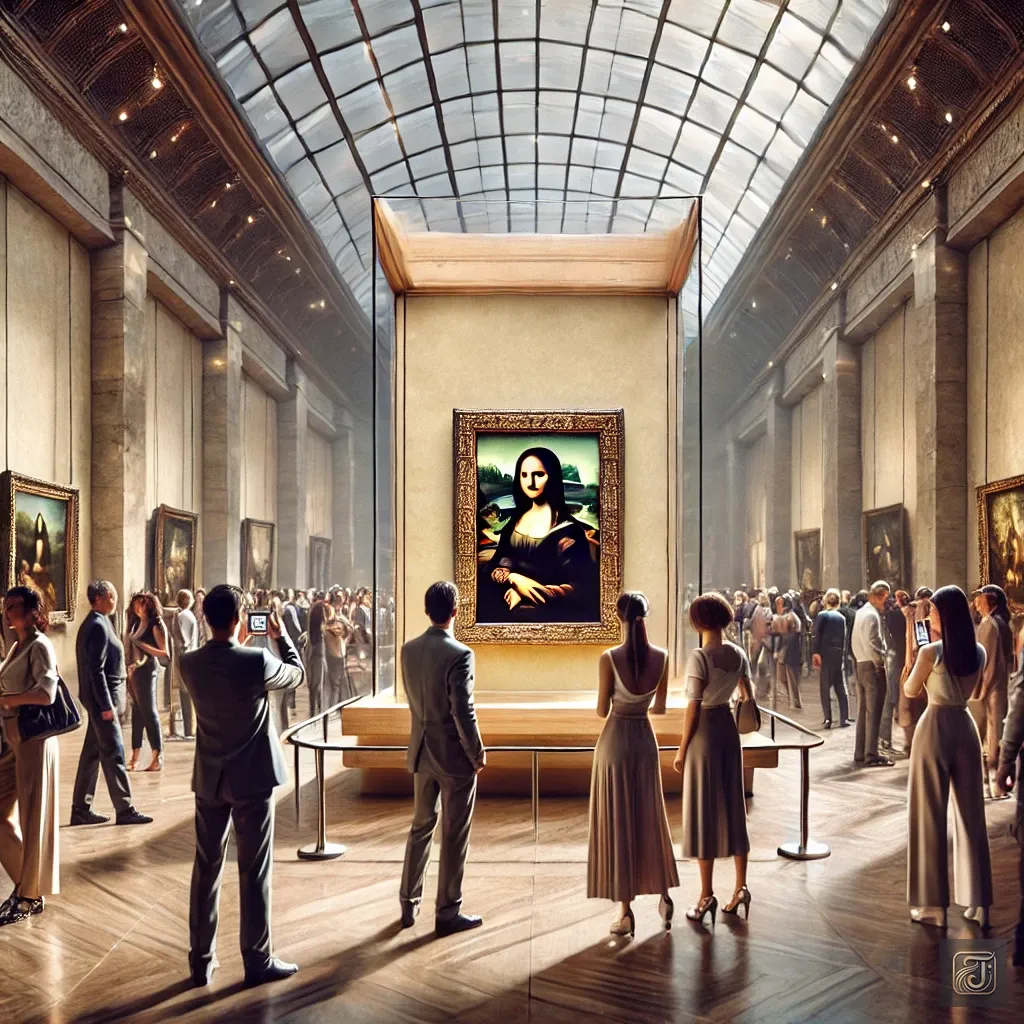
Louvre Museum, 2025.
Amid the vast halls of the museum, one spot attracts more visitors than anywhere else.
There, as always, people line up, raising their smartphones, their eyes filled with excitement.

Mona Lisa, receiving the gaze of countless visitors, continues to smile in silence.
Even after more than 500 years, her expression remains unchanged.
As if endlessly asking, “What is the true essence of human beauty?”
Each person, in each era, finds their own answer to that question.
A young girl, staring intently at the painting, turned to her mother and asked:
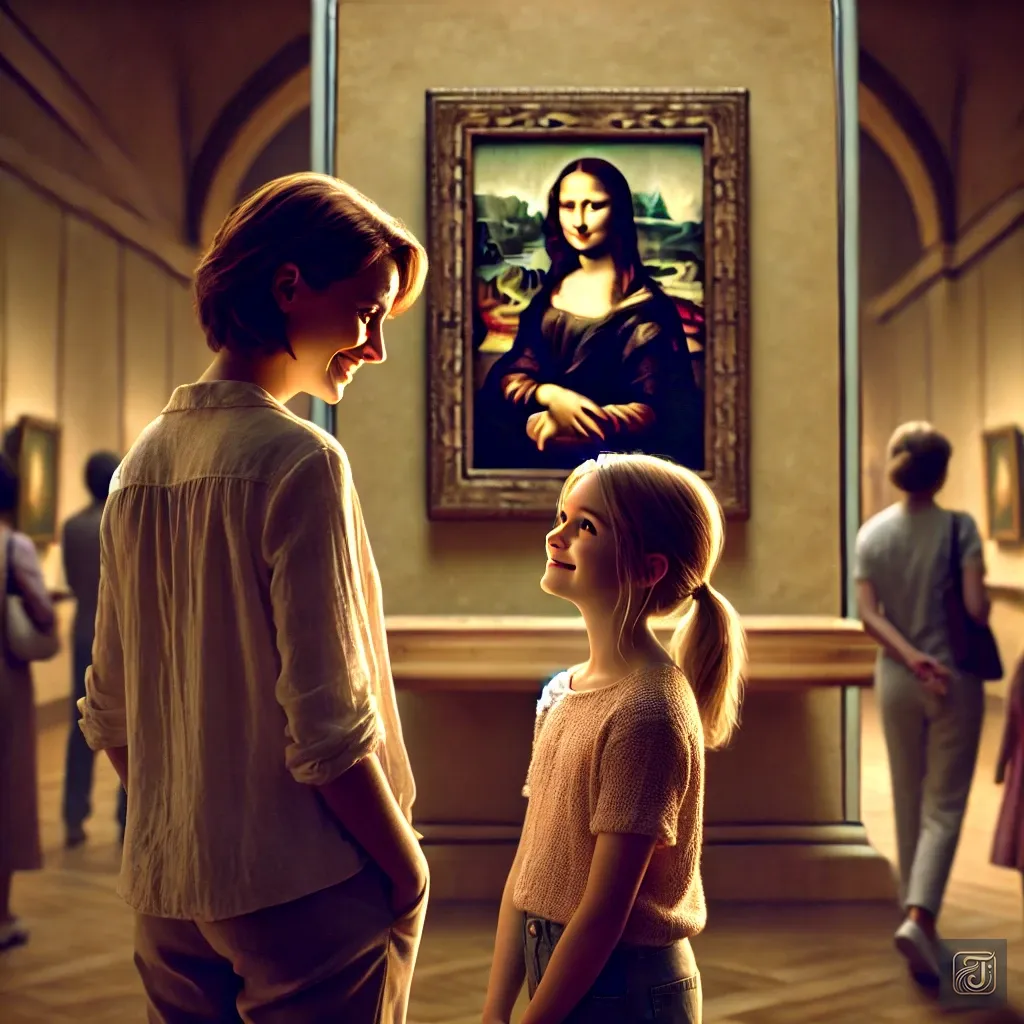
The young girl:
“Mom, why is she smiling?”
The mother:
“That depends on what you feel.”
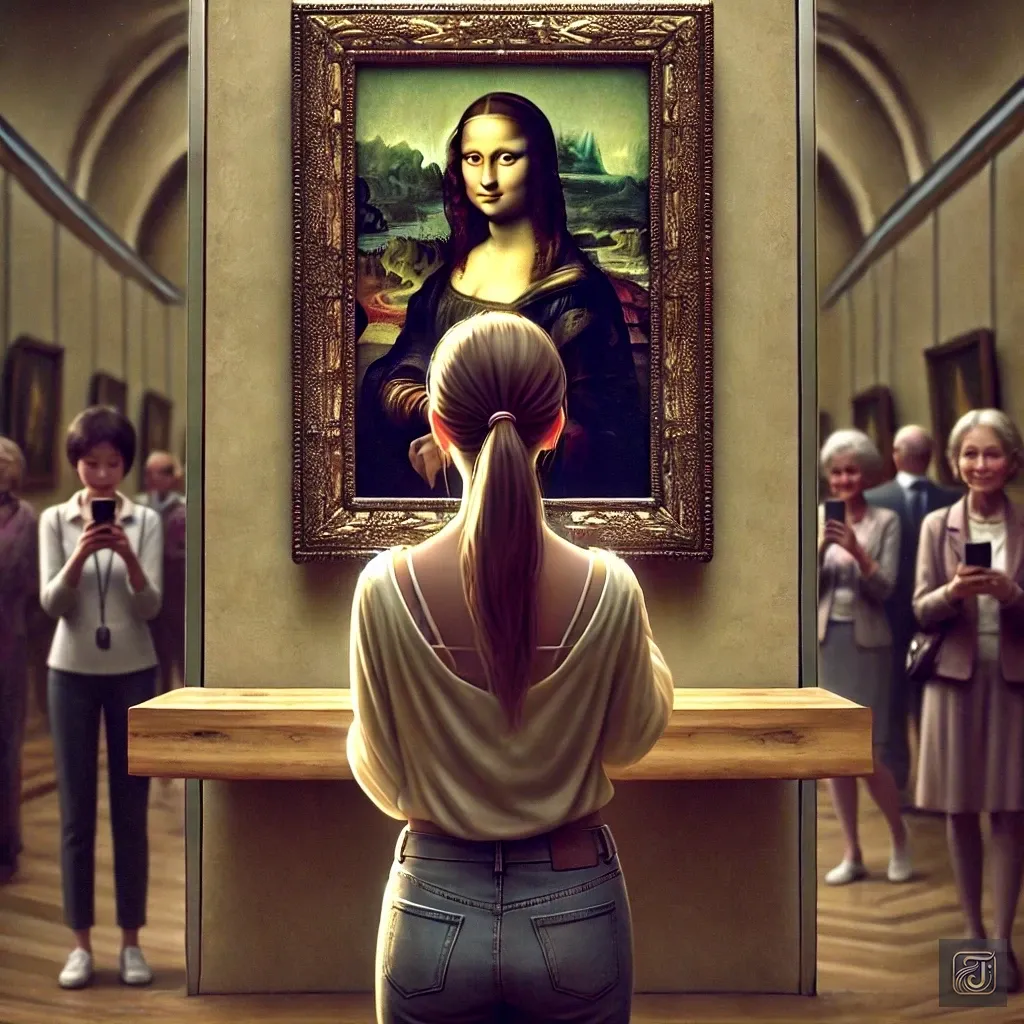
The girl gazed at the Mona Lisa for a while.
Amid the crowd, where everyone held up their smartphones, she was the only one who didn’t take a photo—just quietly facing the painting.

Before long, the girl gently smiled.

It seemed to mirror the smile that Lisa del Giocondo had worn 500 years ago.

Mona Lisa:
“No matter how people see me, I will continue to smile. That is all.”
Mona Lisa continues to speak to someone new today—her enigmatic smile enduring through time, reaching beyond generations, as she always has and always will.
Epilogue
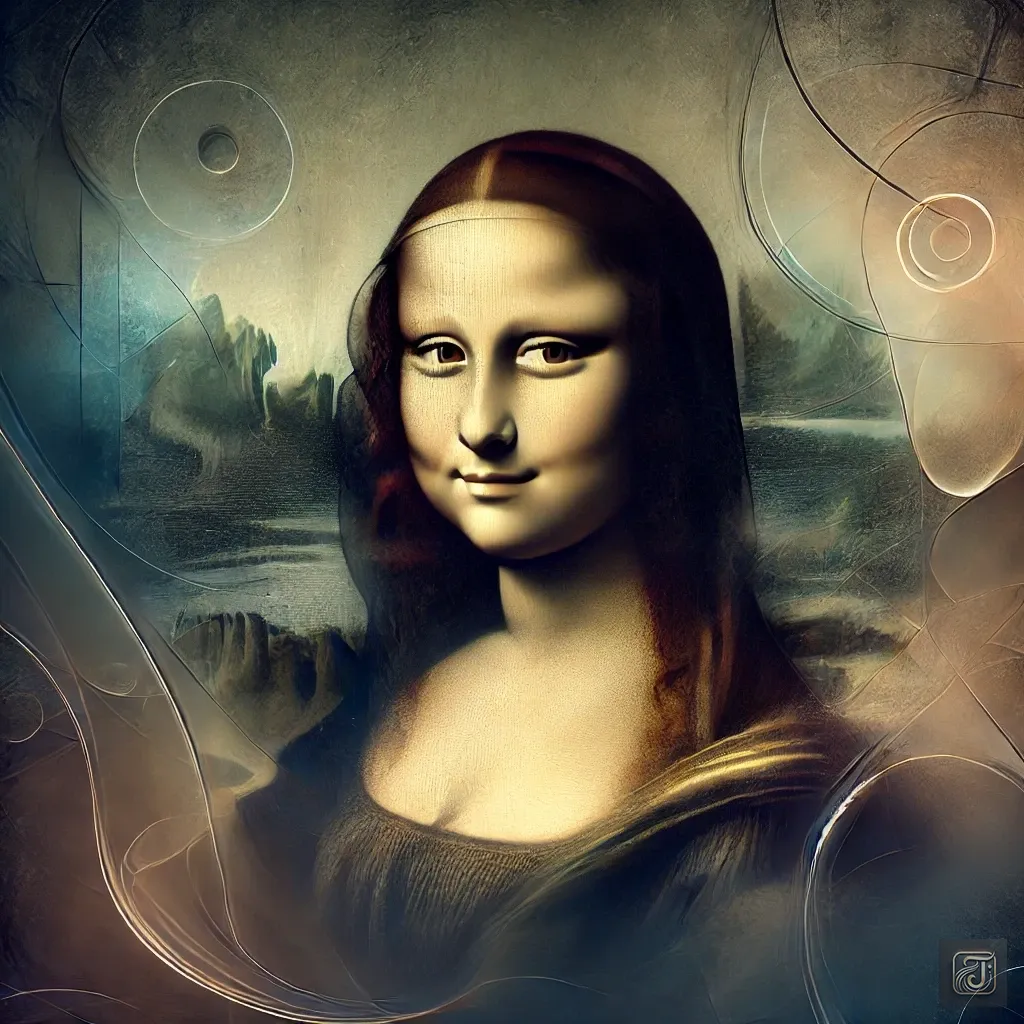
Mona Lisa’s smile remains an enigma, its true nature still unknown.
But perhaps that is exactly what Leonardo da Vinci intended.
Remember his words:
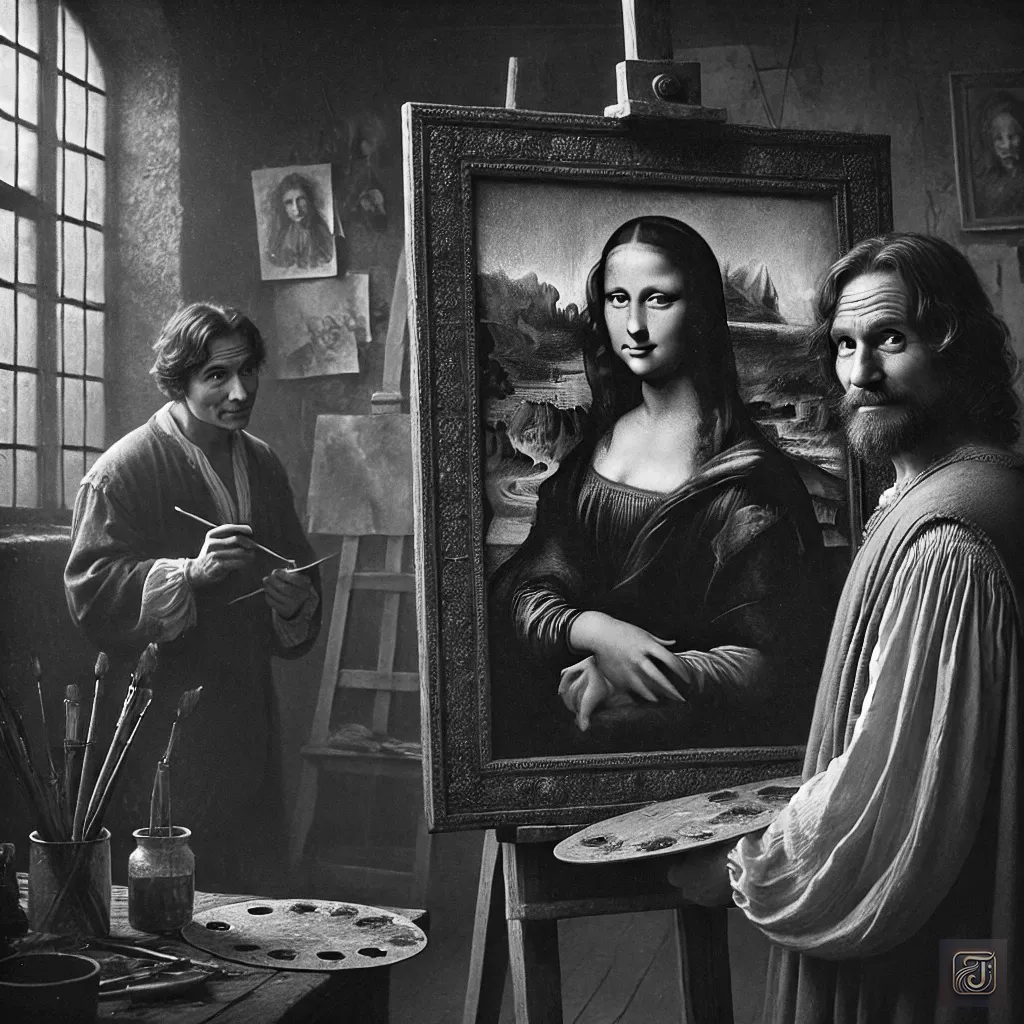
Leonardo:
“This painting still holds secrets, Salai.”
“I am trying to create a ‘smile that will last forever.'”
Mona Lisa continues to captivate people across time.
Her smile will never fade—never disappear.
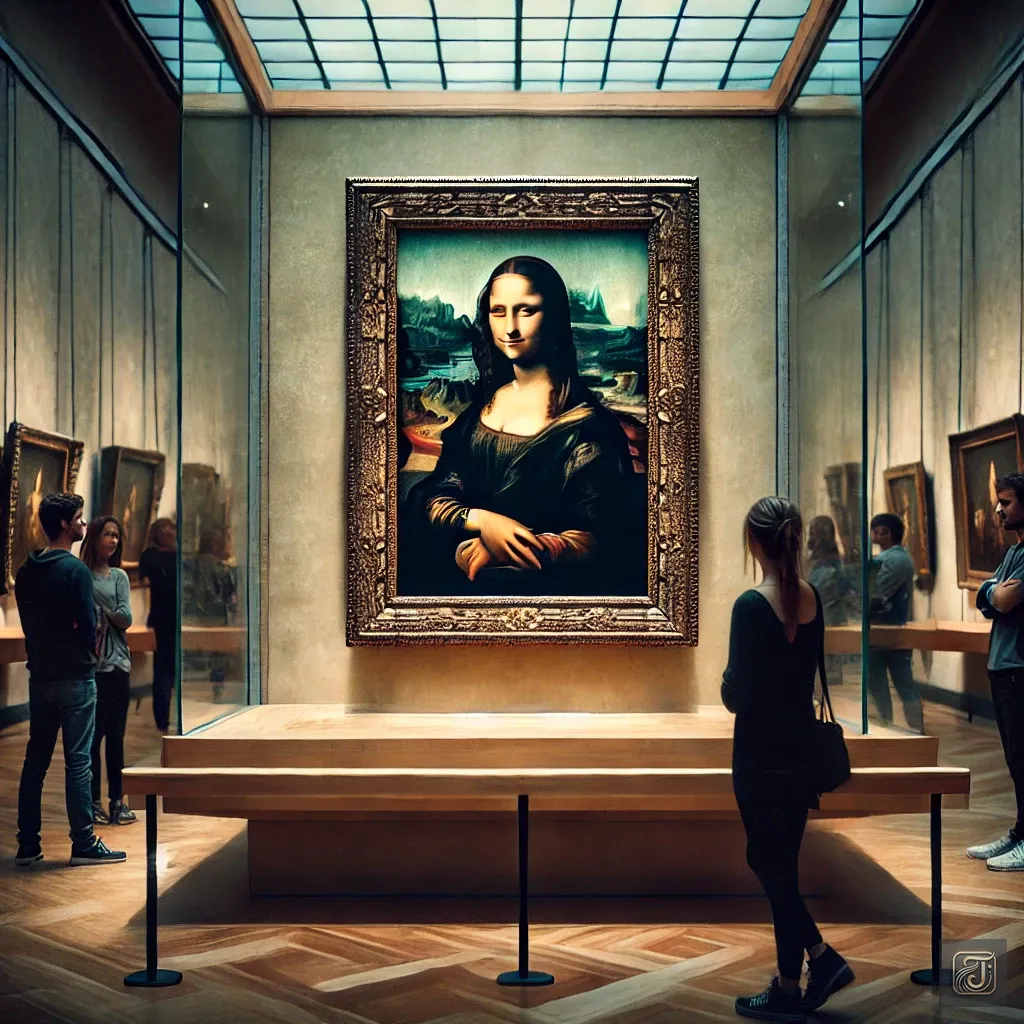
Mona Lisa
The Mona Lisa is a painting believed to have been created by Leonardo da Vinci between 1503 and 1519.
It is considered one of the most famous artworks in Western art history.
Today, it is housed in the Louvre Museum in Paris, France.
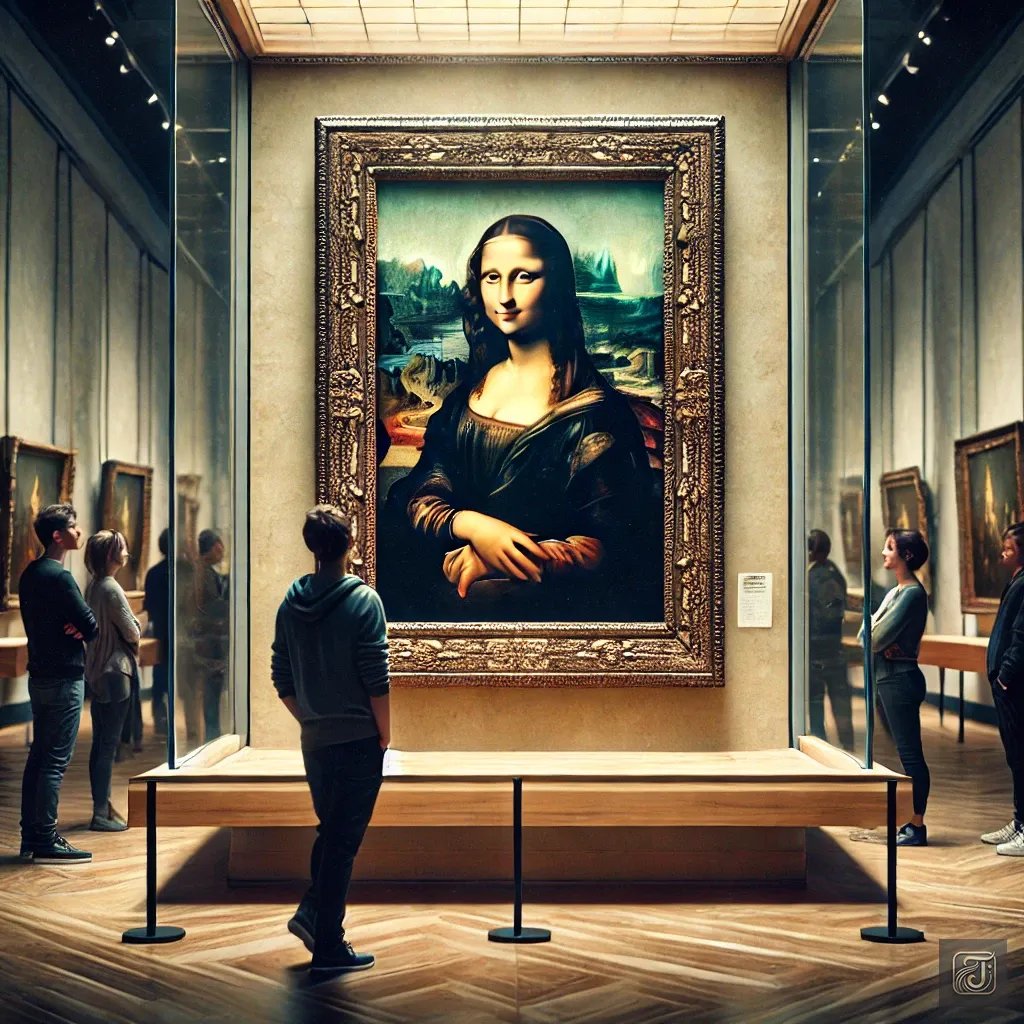
Basic Information about the Mona Lisa
・Artist: Leonardo da Vinci
・Creation Period: Around 1503 – 1519
・Medium: Oil on poplar panel
・Dimensions: 77 cm × 53 cm
・Collection: Louvre Museum, Paris, France

1. Who Was the Model for the Mona Lisa?
There are various theories about the identity of the Mona Lisa,
but the most widely accepted one is that she was Lisa del Giocondo,
the wife of Francesco del Giocondo, a wealthy merchant from Florence.
Because of this, the painting is known as “La Gioconda” in Italian and “La Joconde” in French.
However, other theories suggest different possibilities:
・A feminized self-portrait of Leonardo da Vinci (self-projection theory)
・Salai, Leonardo’s apprentice, depicted as a woman (theory that he transformed his young male apprentice into a female figure)
・An imaginary woman, representing da Vinci’s ideal feminine beauty
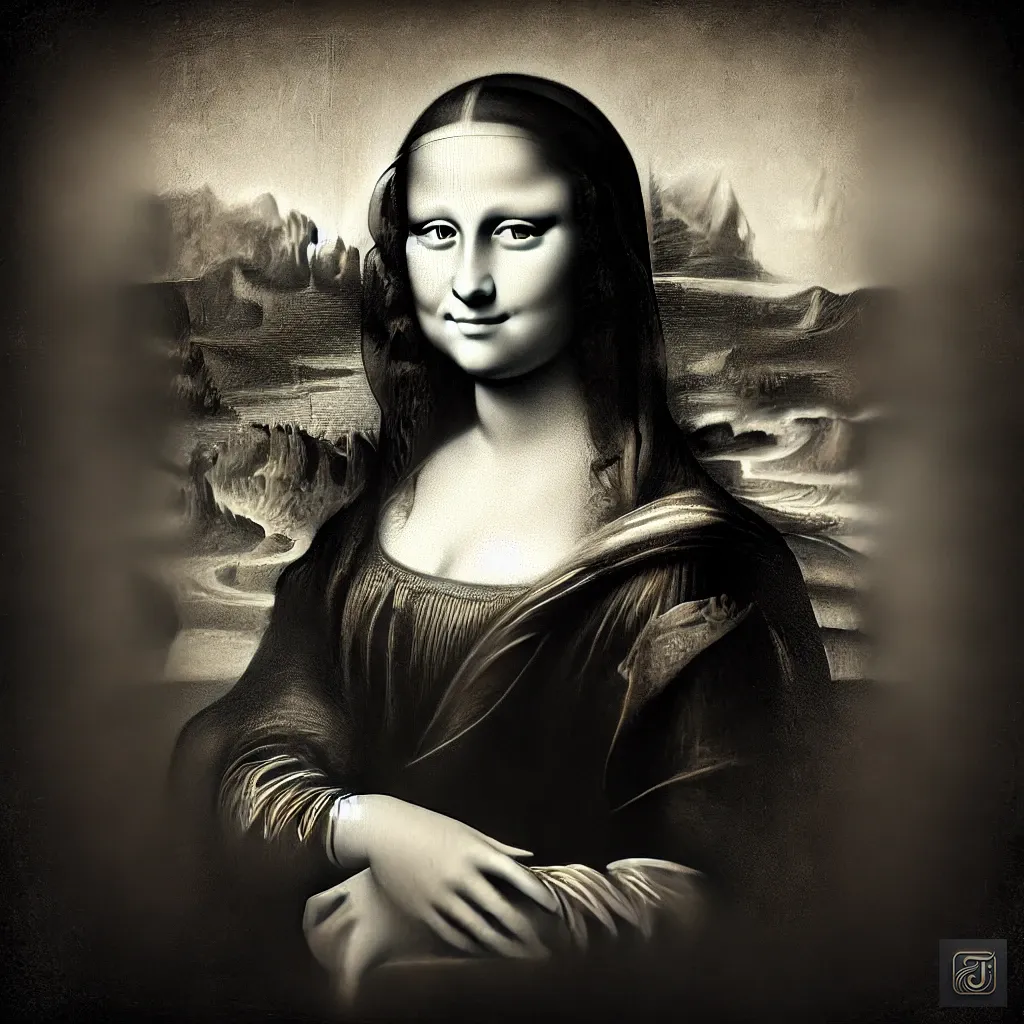
2. The Allure of the Mona Lisa
(1) The Enigmatic Smile
The most distinctive feature of the Mona Lisa is her mysterious smile, which seems to change depending on the viewing angle.
This effect is achieved through sfumato, a technique developed by Leonardo da Vinci that softens outlines and creates delicate shading.
Her smile leaves viewers wondering: “Is she truly smiling?”, “What is she thinking?”, adding to the painting’s mystique.
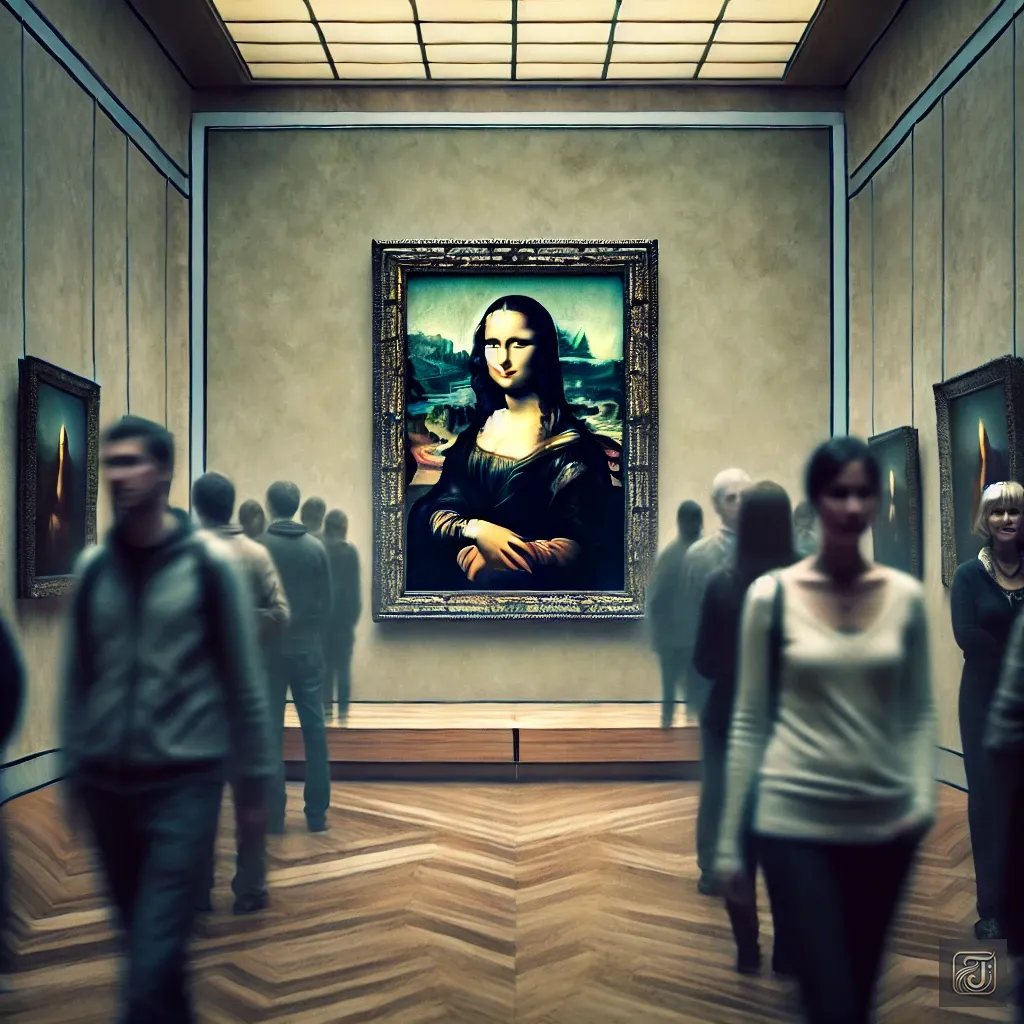
(2) Eyes That Follow the Viewer
The Mona Lisa is often said to have a gaze that follows the viewer no matter where they stand.
This effect is the result of Leonardo da Vinci’s mastery of perspective and light.
Because of this, viewers experience a sense of interaction, as if they are engaged in a silent dialogue with her.
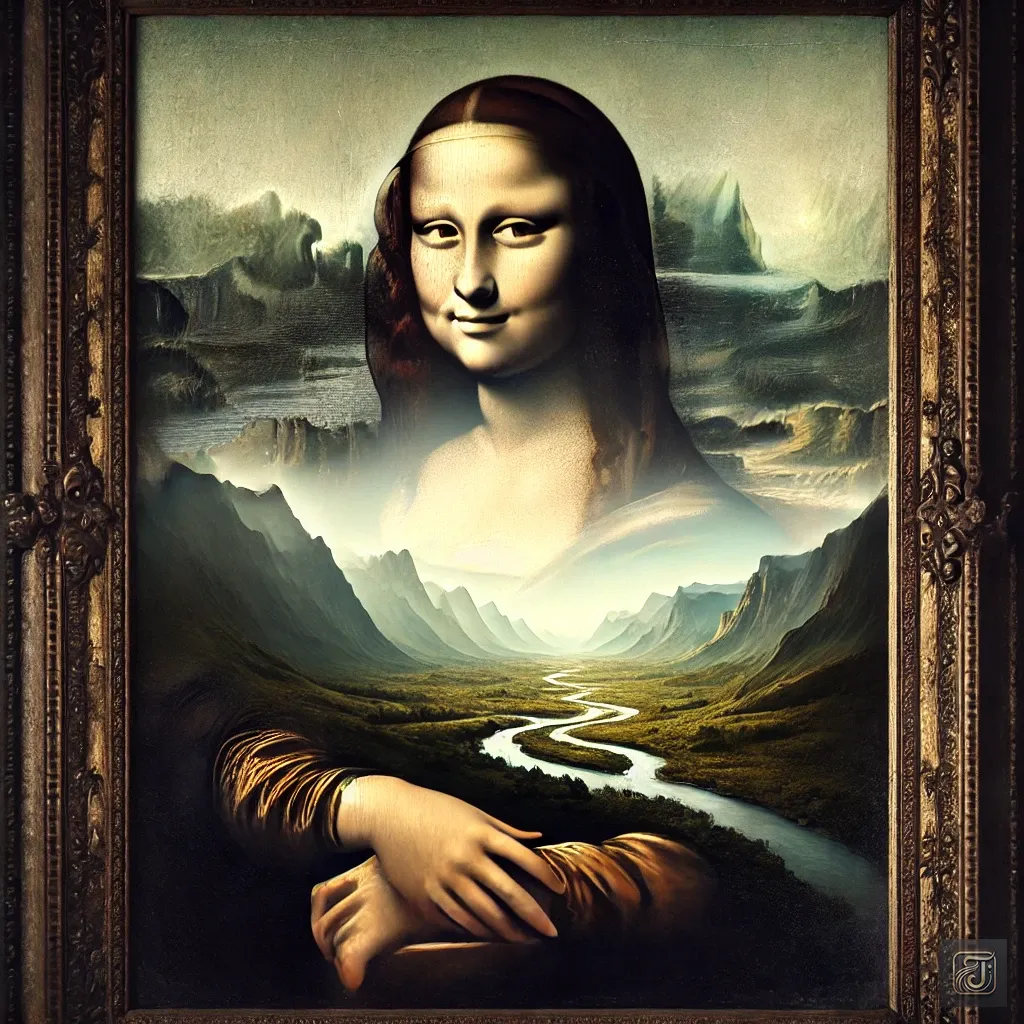
(3) The Landscape in the Background
The Mona Lisa is set against a backdrop of a natural landscape.
However, upon closer inspection, the left and right sides of the terrain appear different.
It is believed that Leonardo used perspective techniques in the background to create a dreamlike, otherworldly effect.
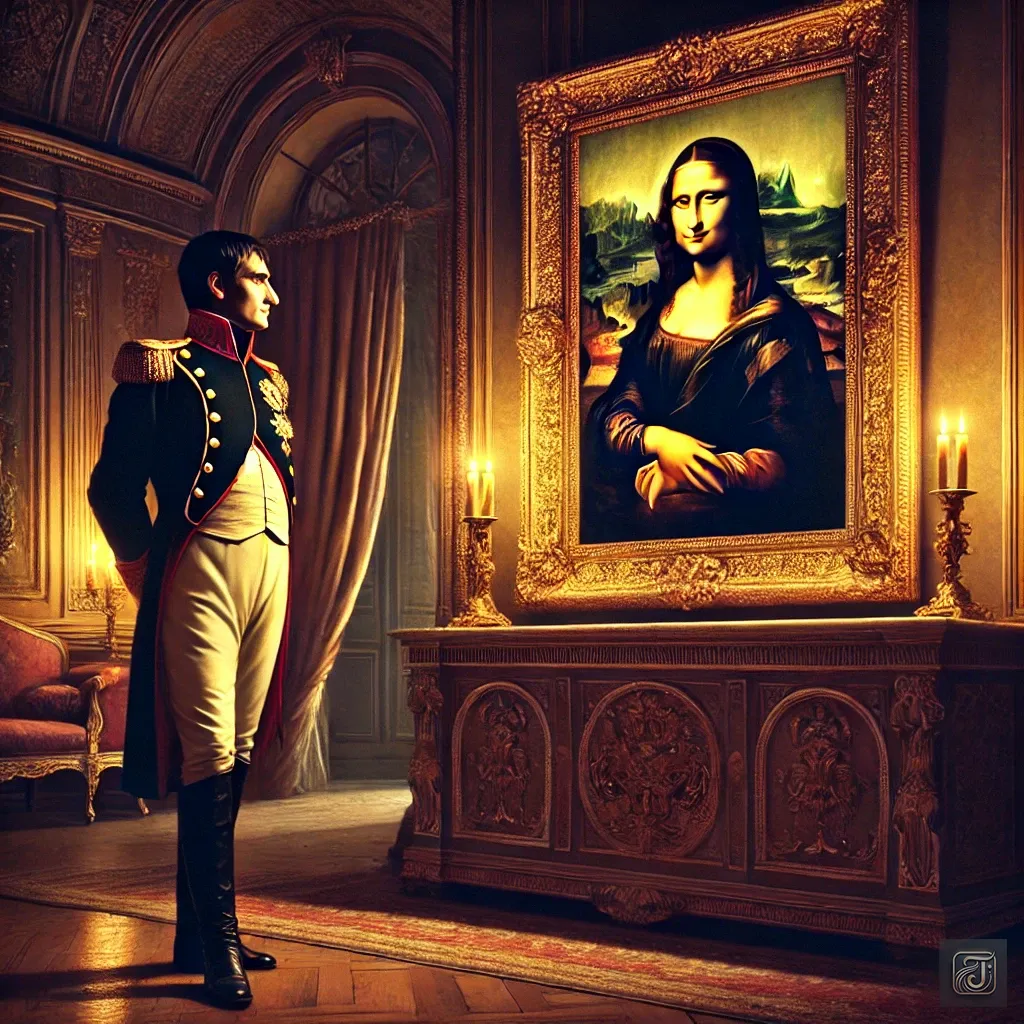
3. The History of the Mona Lisa
(1) Napoleon’s Possession
In the 19th century, Napoleon Bonaparte was so captivated by the Mona Lisa that he reportedly had it temporarily displayed in his bedroom at the Tuileries Palace.
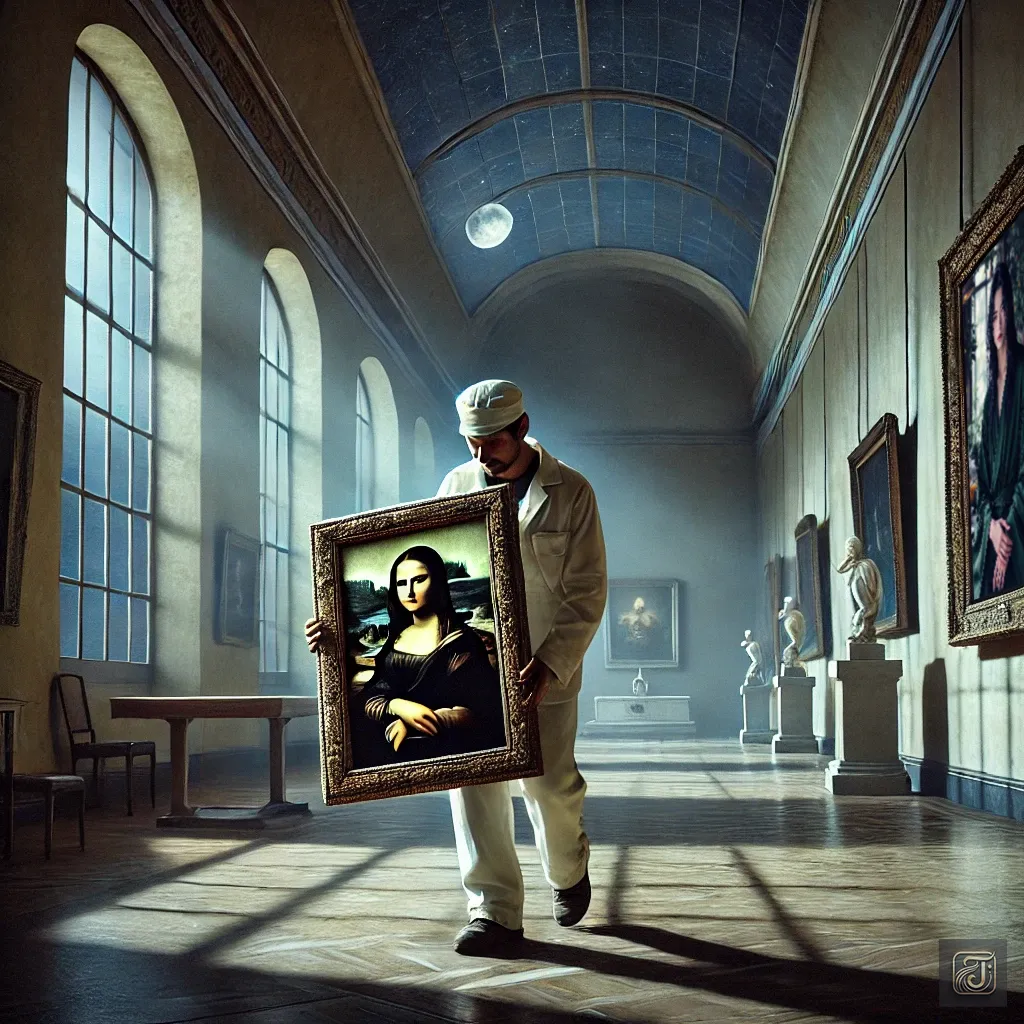
(2) The 1911 Theft Incident
In 1911, the Mona Lisa was stolen from the Louvre Museum.
The culprit was an Italian named Vincenzo Peruggia, who believed that the painting rightfully belonged to Italy and should be returned.
He hid the Mona Lisa for two years, until it was finally discovered in Florence in 1913 and returned to the Louvre.
This incident played a major role in making the Mona Lisa world-famous.
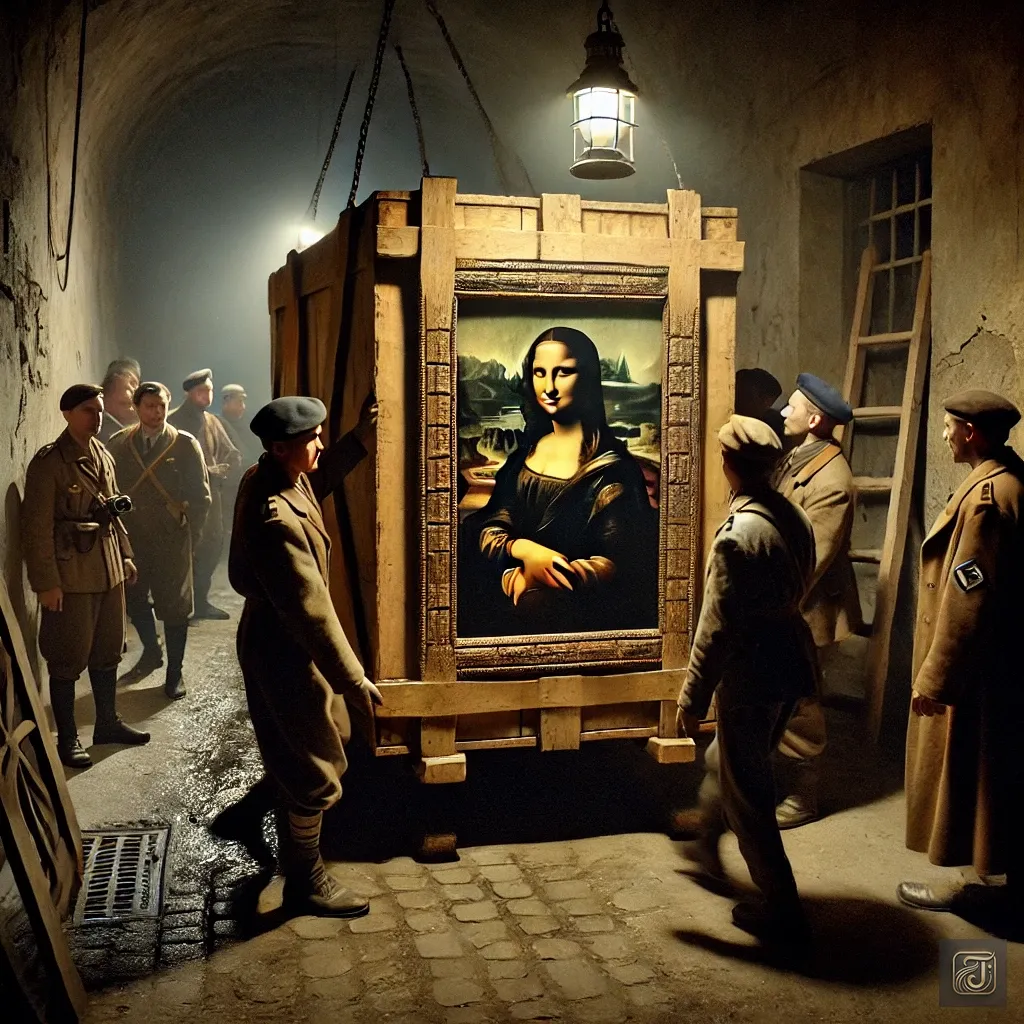
(3) Protection During World War II
During World War II, to prevent Nazi looting, the Mona Lisa was secretly removed from the Louvre Museum and hidden in multiple locations.
After the war, it was safely returned to the Louvre.
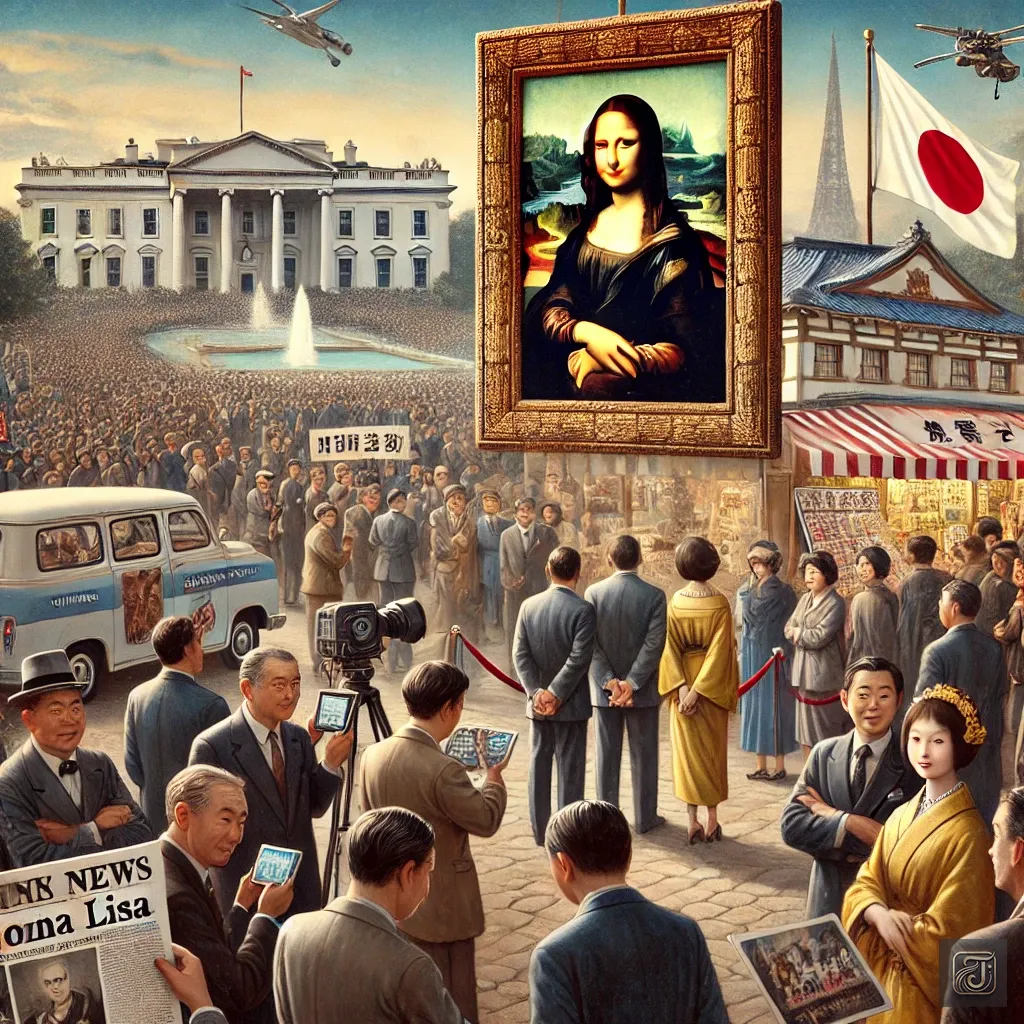
(4) Popularity After the 20th Century
1963: Exhibited in the White House and New York, further increasing its global fame.
1974: Displayed in Japan and the Soviet Union (USSR at the time), attracting massive crowds.
The number of visitors set records at the time.
In Japan, where people had never seen the Mona Lisa before, special TV programs were aired, and souvenirs sold like rice.
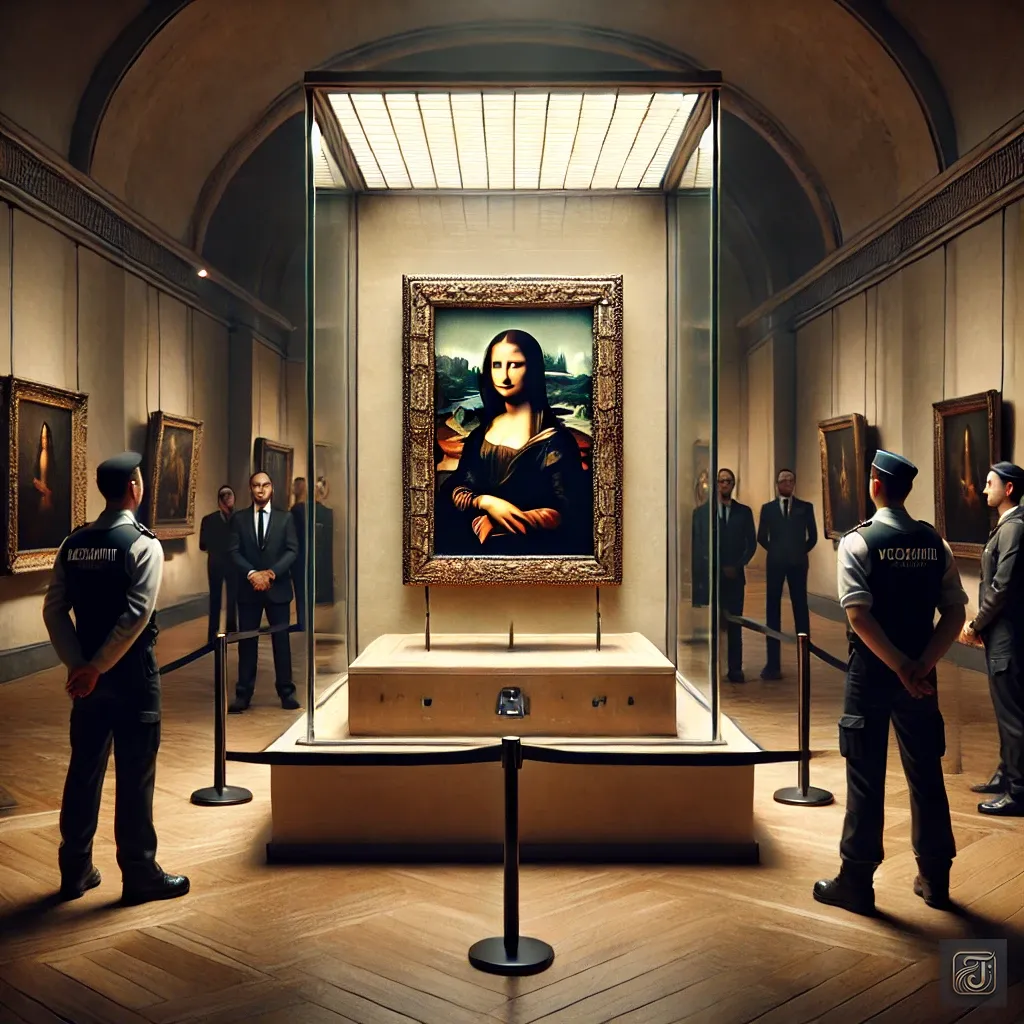
4. Trivia About the Mona Lisa
The Most Heavily Protected Painting in the Louvre
The Mona Lisa is safeguarded behind bulletproof glass and housed in a specially controlled case that regulates temperature and humidity.
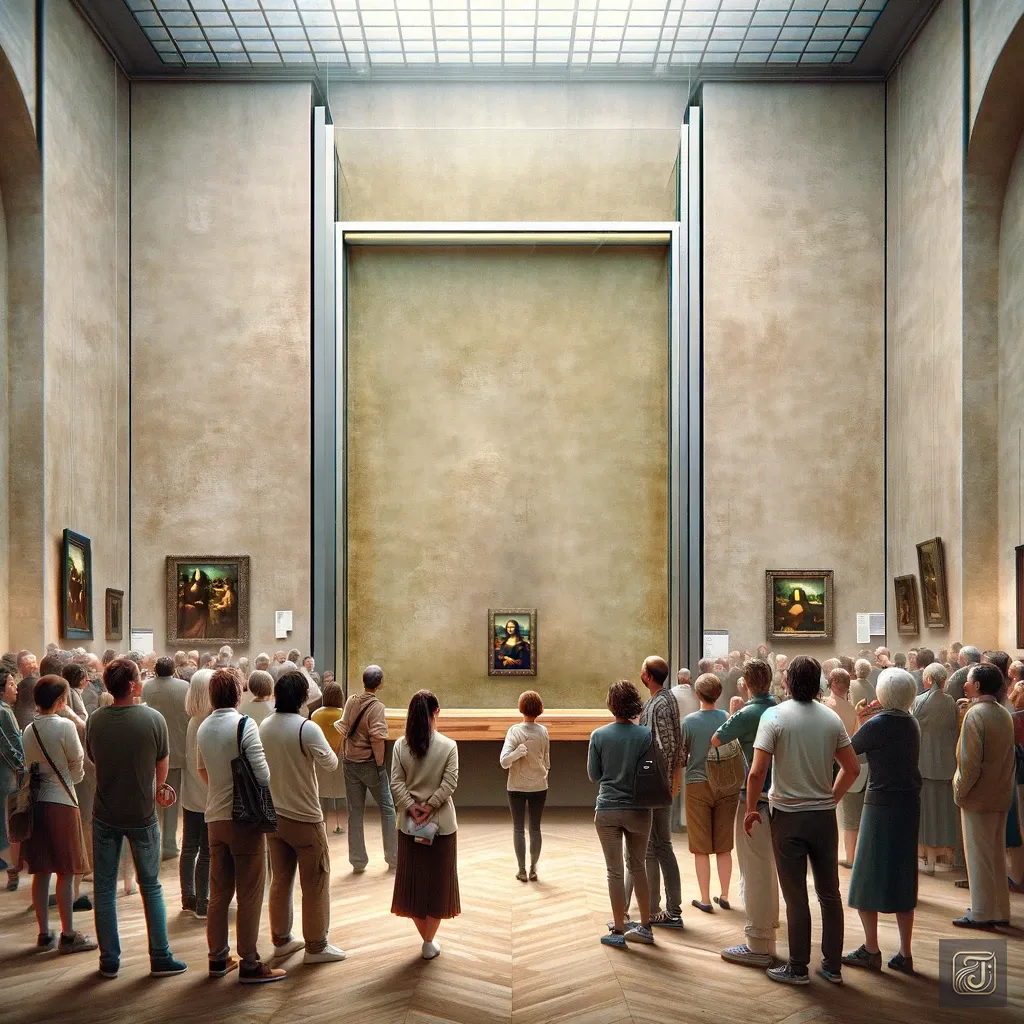
Surprisingly Small?
Although it is one of the most famous paintings in the world, the Mona Lisa is actually quite small, measuring approximately 77 cm × 53 cm.
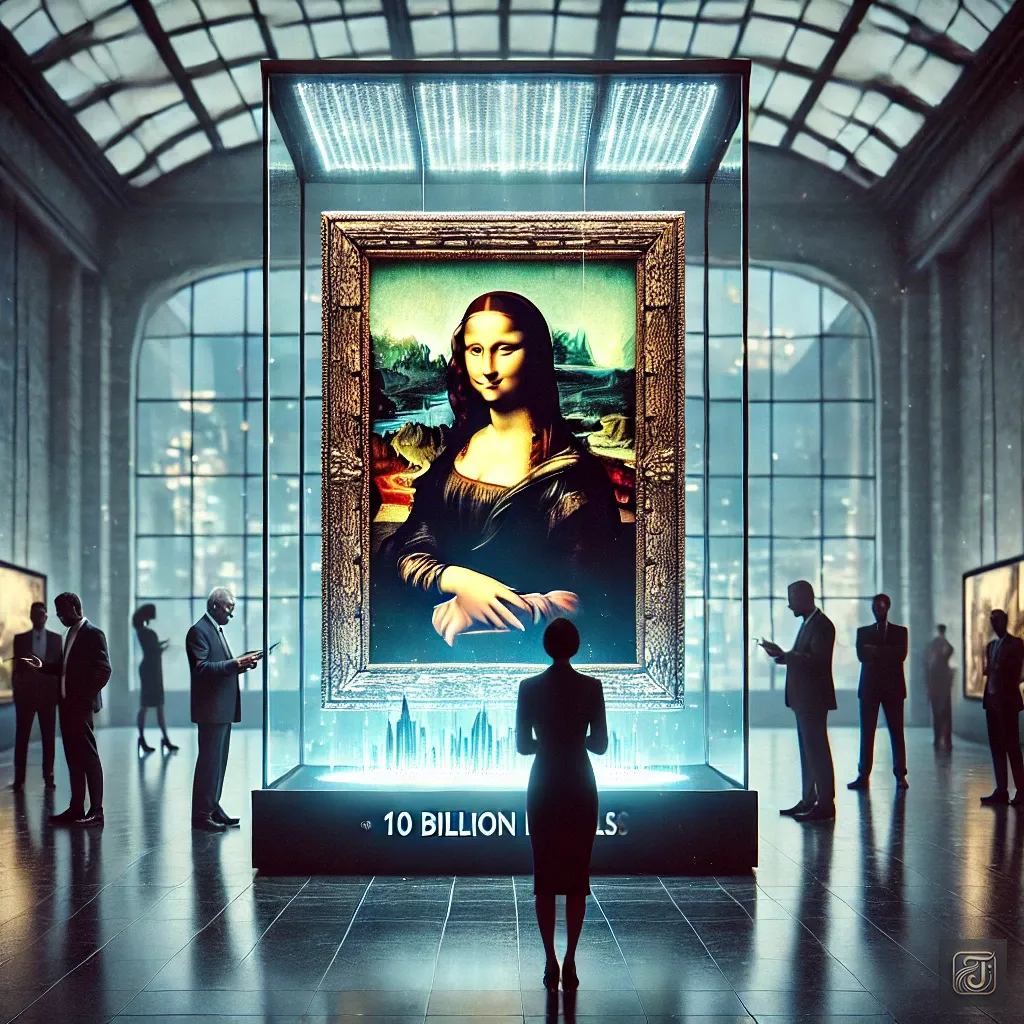
What Is the Mona Lisa Worth?
The Mona Lisa is not for sale, but if it were ever placed on the market, it is estimated to be worth over 1 billion dollars (approximately 150 billion yen).

Has Been Attacked Multiple Times
In 1956, the painting was targeted with acid and a thrown stone, causing damage to the right elbow.
In 1974, during an exhibition in Japan, a disturbed woman attempted to spray red paint on the Mona Lisa.
More recently, in 2022, an environmental activist threw a cake at it, but thanks to its bulletproof glass, the Mona Lisa remained unharmed.

5. Why Is the Mona Lisa the Most Famous Painting in the World?
Several factors have contributed to the Mona Lisa’s global fame:
・It was painted by Leonardo da Vinci, one of history’s greatest geniuses.
・Her smile and gaze are mysterious, allowing for endless interpretations.
・The 1911 theft turned it into a worldwide sensation.
・It is one of the most visited and photographed artworks in any museum.
・It is frequently referenced in pop culture, advertisemnts, and media.
The Mona Lisa became the world’s most famous painting not only because of da Vinci’s artistic mastery but also due to its involvement in historical events and media influence.

Summary
The Mona Lisa is Leonardo da Vinci’s greatest masterpiece, captivating the world with her enigmatic smile and mysterious presence.
Beyond its artistic value, factors such as theft, historical events, and cultural influence have all contributed to its status as the most famous painting in history.

Did You Know? “Da Vinci” Is Not His Last Name!
Full Name
His real name was Leonardo di ser Piero da Vinci.
・Leonardo → First name
・di ser Piero → Means “son of Ser Piero”
・da Vinci → Means “from the village of Vinci”
So, “da Vinci” simply means “Leonardo from Vinci”, rather than a modern surname.

What is Vinci Village?
Vinci is a small village in the Tuscany region of Italy, where Leonardo da Vinci was born in 1452.
Located west of Florence, the village is now home to the Leonardo da Vinci Museum, attracting many visitors from around the world.
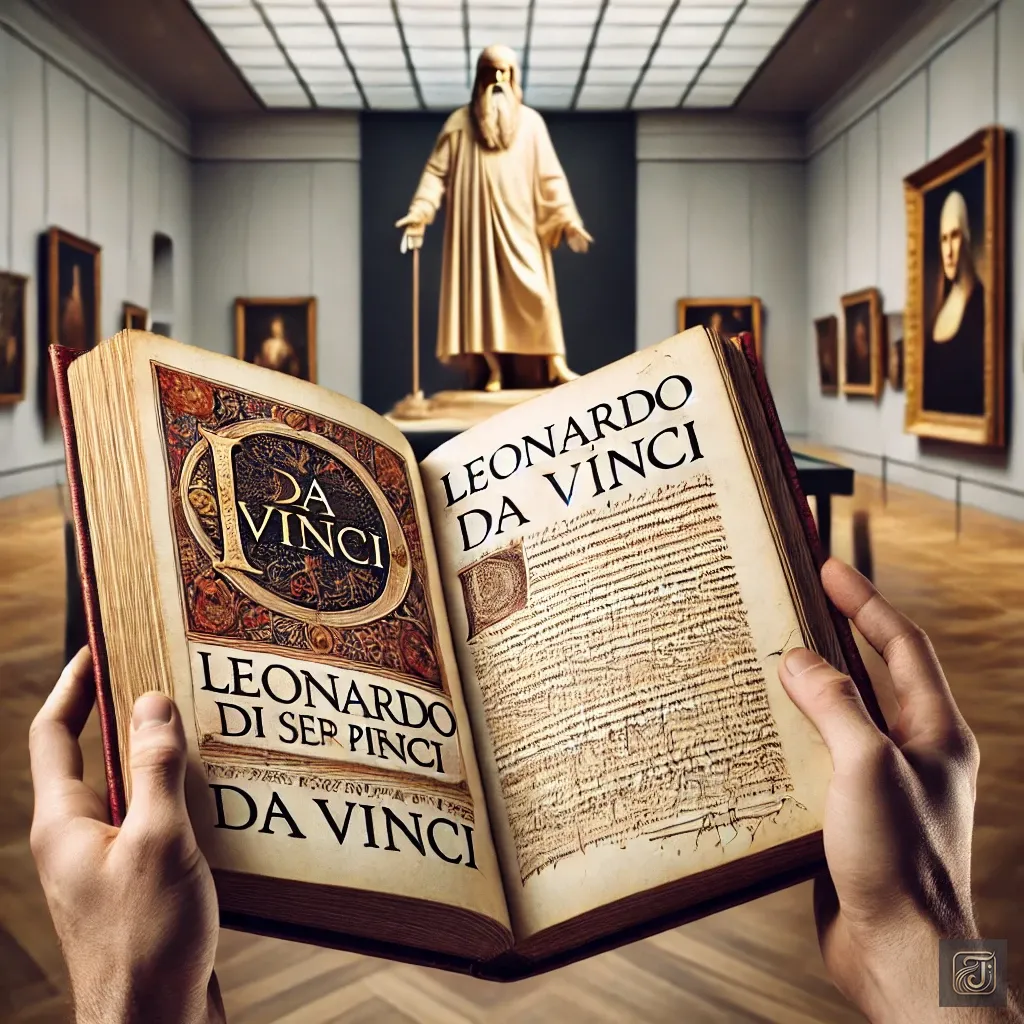
How His Name Should Be Used
Referring to “Leonardo da Vinci” as just “da Vinci” is technically incorrect. “Leonardo” is the proper way to address him.
However, in modern times, “da Vinci” has become widely recognized, and in art history and general contexts, it is often used (e.g., “Da Vinci’s masterpiece”).
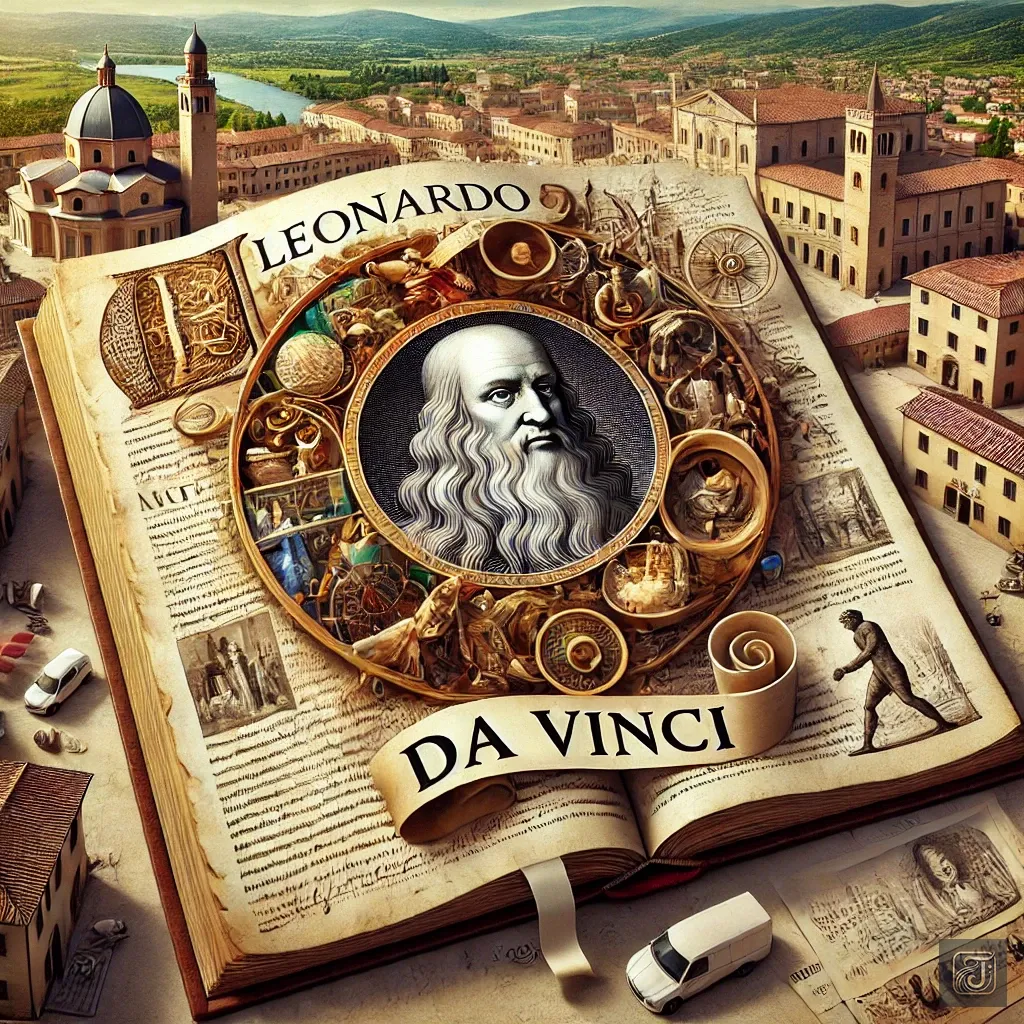
Summary
✅ “Da Vinci” is not his last name but a reference to his birthplace.
✅ The correct way to refer to him is “Leonardo”, but “Da Vinci” is widely used.
✅ Vinci is a small town in Tuscany, Italy, now a popular tourist destination.
Calling him “Da Vinci” is similar to referring to “Jesus of Nazareth” as just “Nazareth”—not technically correct, but widely accepted. 😊
Afterword
Thank You for Reading
Thank you for taking the time to read this book.
In this work, I have woven the history of the Mona Lisa, painted by Leonardo da Vinci, into a narrative.
While he is commonly referred to as “da Vinci”, this term simply means “from Vinci” and is not a surname. For accuracy, I have referred to him as “Leonardo” throughout this book.
Just as Mona Lisa’s smile continues to captivate people across generations, I hope this book has offered you a glimpse into the mystery of art and the depth of history.
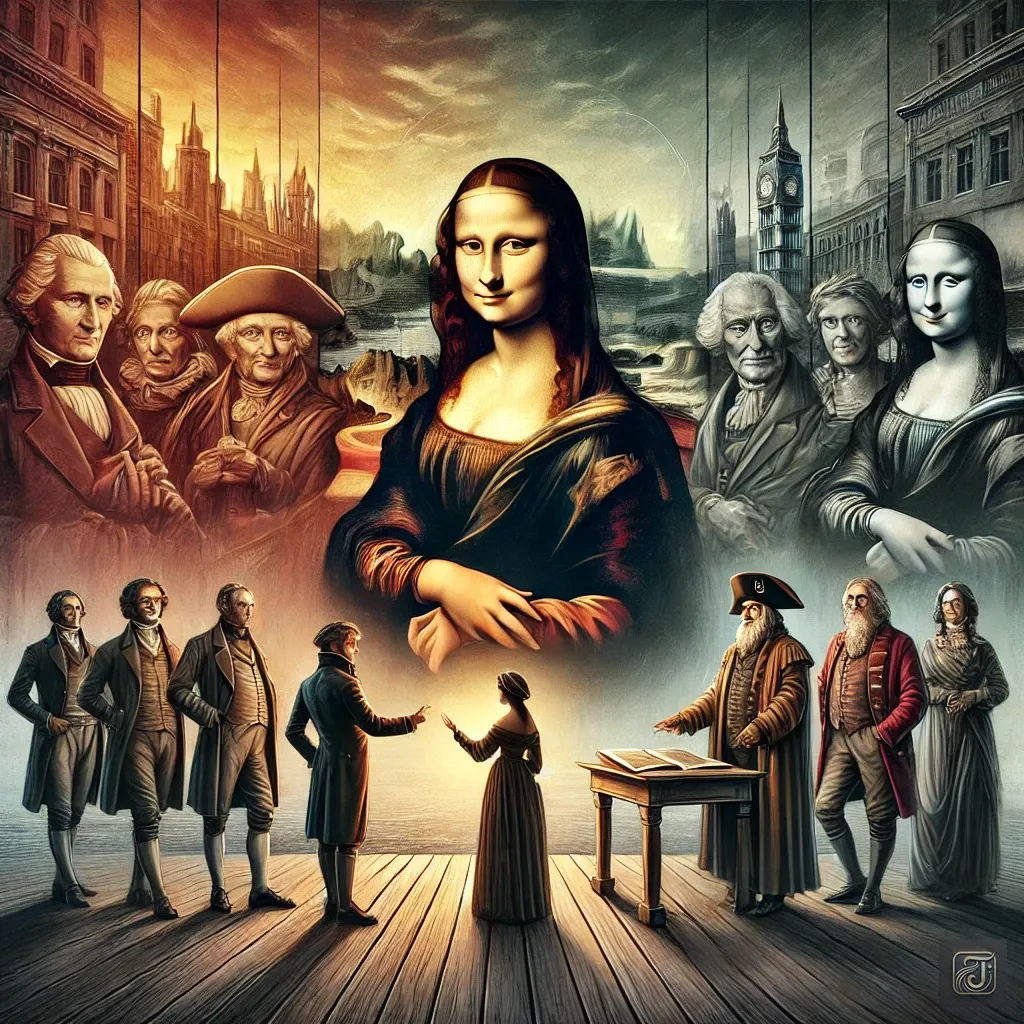
Purpose of This article
In this work, I aimed to explore how Mona Lisa was treated throughout history and how she influenced people across different eras.
Rather than presenting a simple chronological account, I structured the book as a narrative.
By focusing on the psychological portrayal of figures like Napoleon and Peruggia, I imagined: “What if they had spoken with Mona Lisa?” and expanded upon that perspective.
Additionally, rather than approaching this solely as art history, I sought to convey the timeless power of art—how it transcends eras, touching hearts across generations.

Research and Sources
In writing this book, I referenced historical facts about Leonardo da Vinci, the techniques used in the Mona Lisa, and its preservation history.
In particular, I studied Leonardo’s sfumato technique and the details of Peruggia’s theft, which have been extensively researched.
These findings helped shape the framework of the narrative.
However, while this book is based on historical events, it also includes fictional elements, such as the inner thoughts of historical figures.
Thus, while remaining faithful to how the Mona Lisa interacted with key figures in history, I also aimed to create an engaging storytelling experience.
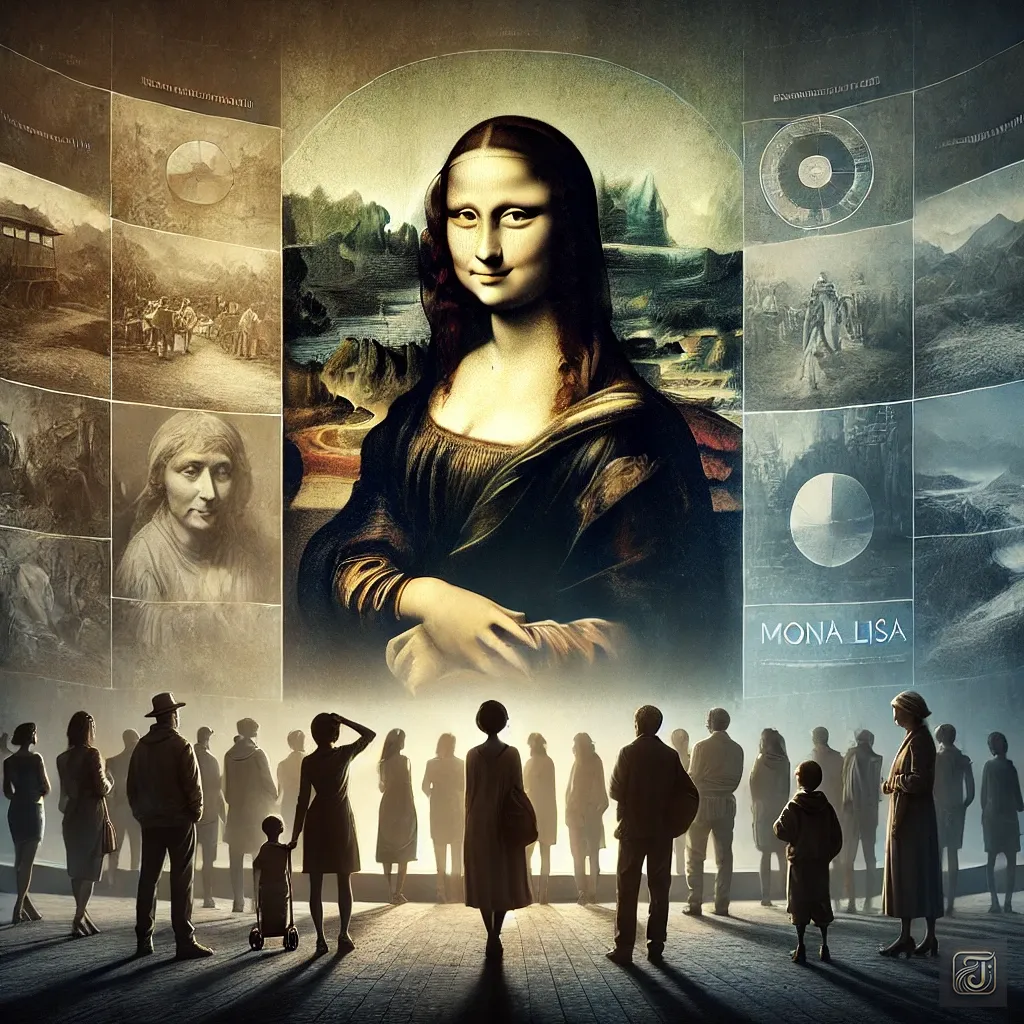
Message to the Readers
Mona Lisa’s smile has continued to captivate people for more than 500 years.
What did Leonardo intend to convey through this painting?
Perhaps the answer is not a single, definitive one.
Through this story, I hope that you, the reader, will also ask yourself: “What is she trying to say?” and find your own interpretation.
Art is something that changes depending on the heart of the viewer.
Even 500 years from now, the Mona Lisa will still be smiling, speaking to someone new.
Future Writing Plans
This book focuses on the Mona Lisa, but history is filled with countless other artworks and figures with fascinating stories to tell.
Moving forward, I hope to continue portraying history not just as a series of past events, but as a collection of human dramas that can be experienced and enjoyed.
If you enjoyed this book, I would love to hear your thoughts and feedback.
Author: Fuji
If you found this article helpful or enjoyable, please consider supporting me with a cup of coffee! 👈Click☕🙏
I’m a passionate blogger who loves diving deep into human history and sharing captivating stories about remarkable figures and events from the past.
My blog combines engaging storytelling with beautiful illustrations, making history accessible and enjoyable for everyone.
Currently, I write my blog while managing a full-time job.
Balancing both limits the time I can dedicate to research, writing, and illustrations.
With your support on Ko-fi, I can reduce the time spent on my main job and focus more on blogging,
allowing me to increase the frequency of updates and bring you even more captivating stories.
Whether it’s a one-time coffee or a regular contribution, every bit goes directly into making history engaging and fun for my readers.
Thank you for joining me on this journey through time.
Let’s uncover the past together!
If you found this article insightful, please consider supporting me with a cup of coffee! 👈Click☕🙏
Author: Fuji
Human history is truly complex, isn’t it?
There are countless websites introducing historical figures and events, but many of them are just plain explanations—not exactly exciting to read.
On the other hand, reading books takes a lot of time and effort.
That’s where I come in.
Through “stories that are more engaging than explanations and shorter than books,”
I aim to bring the world’s history and humanity’s records to you in a more accessible and interesting way.
If my stories inspire you to love history a little more, I’d be absolutely thrilled!

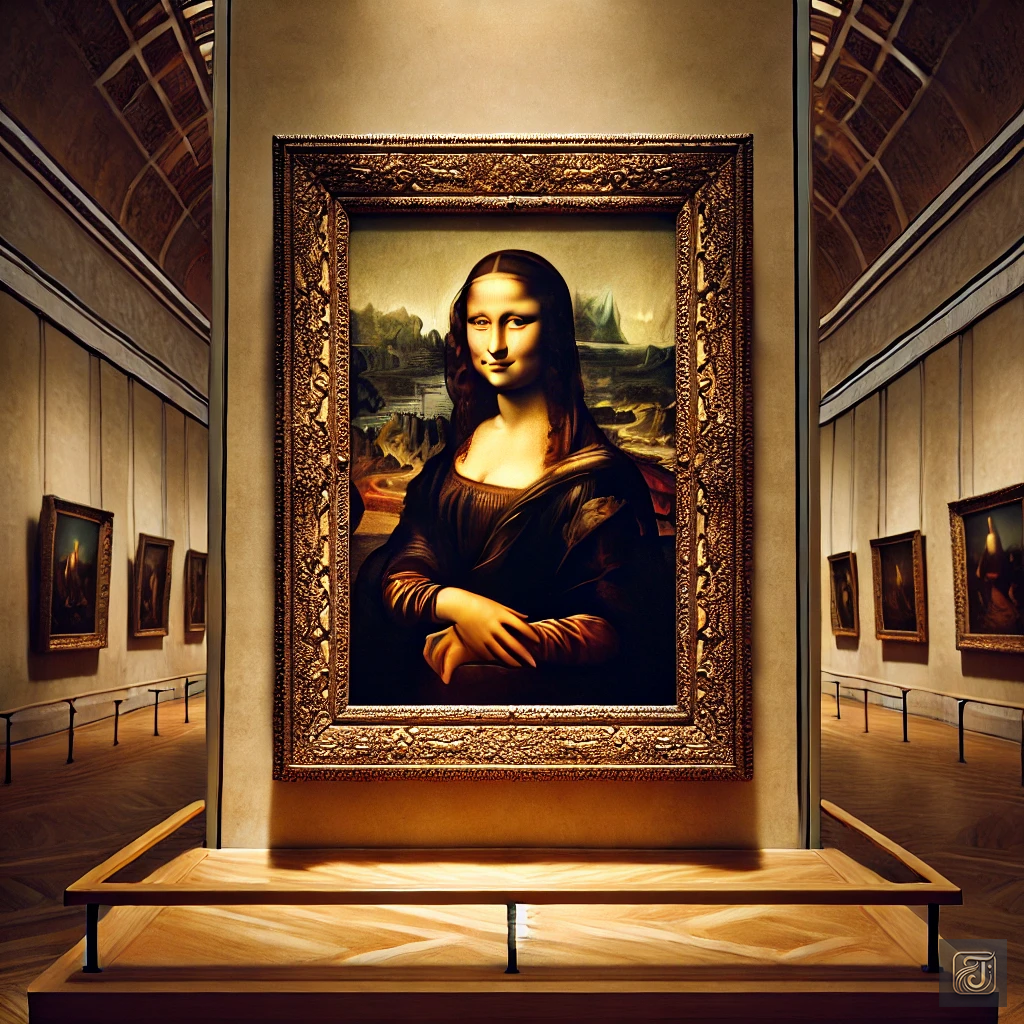
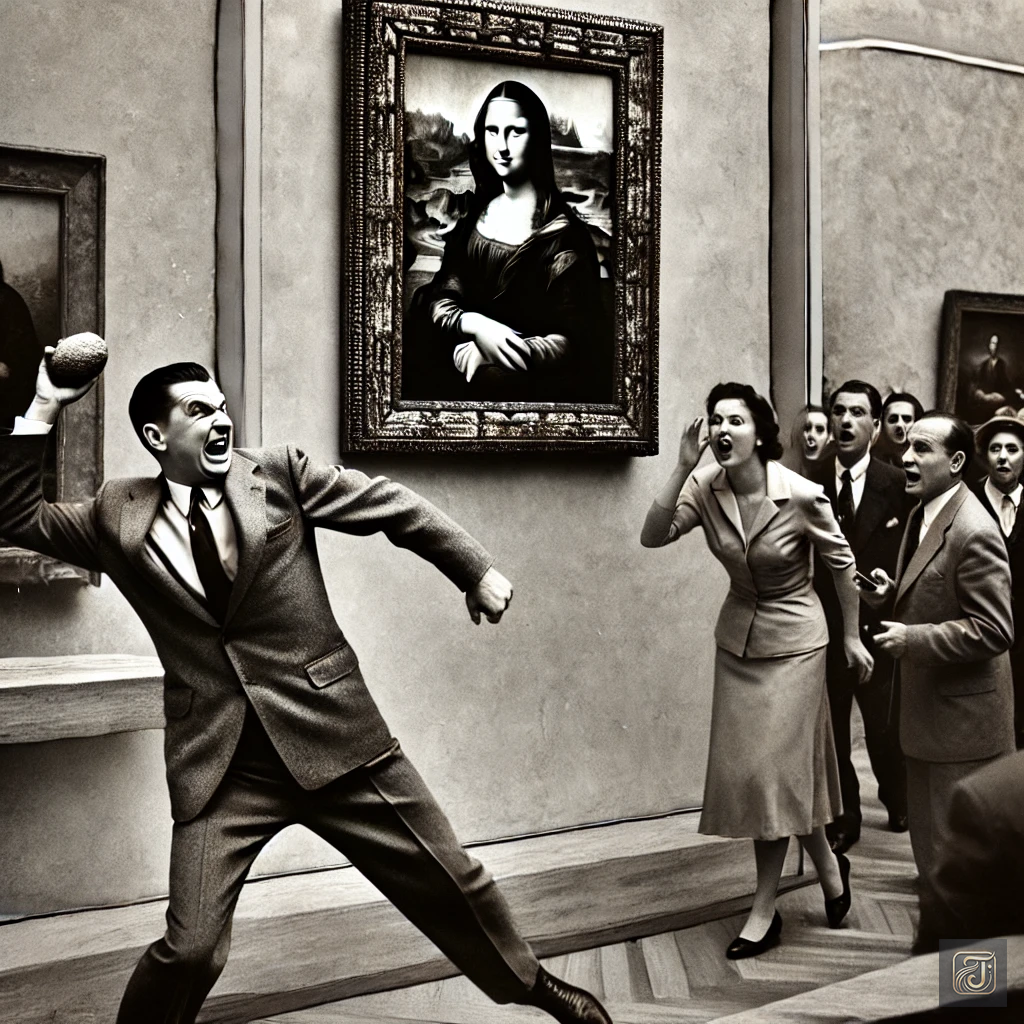
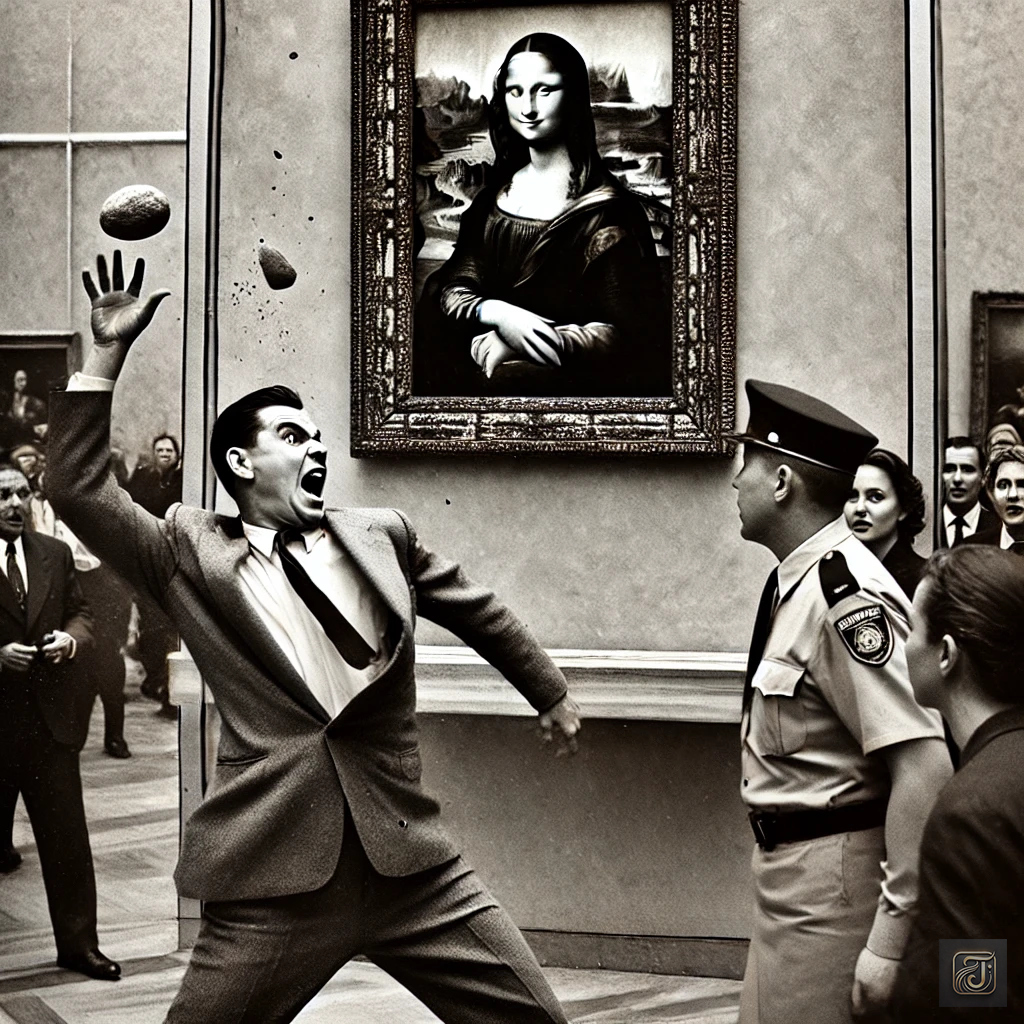
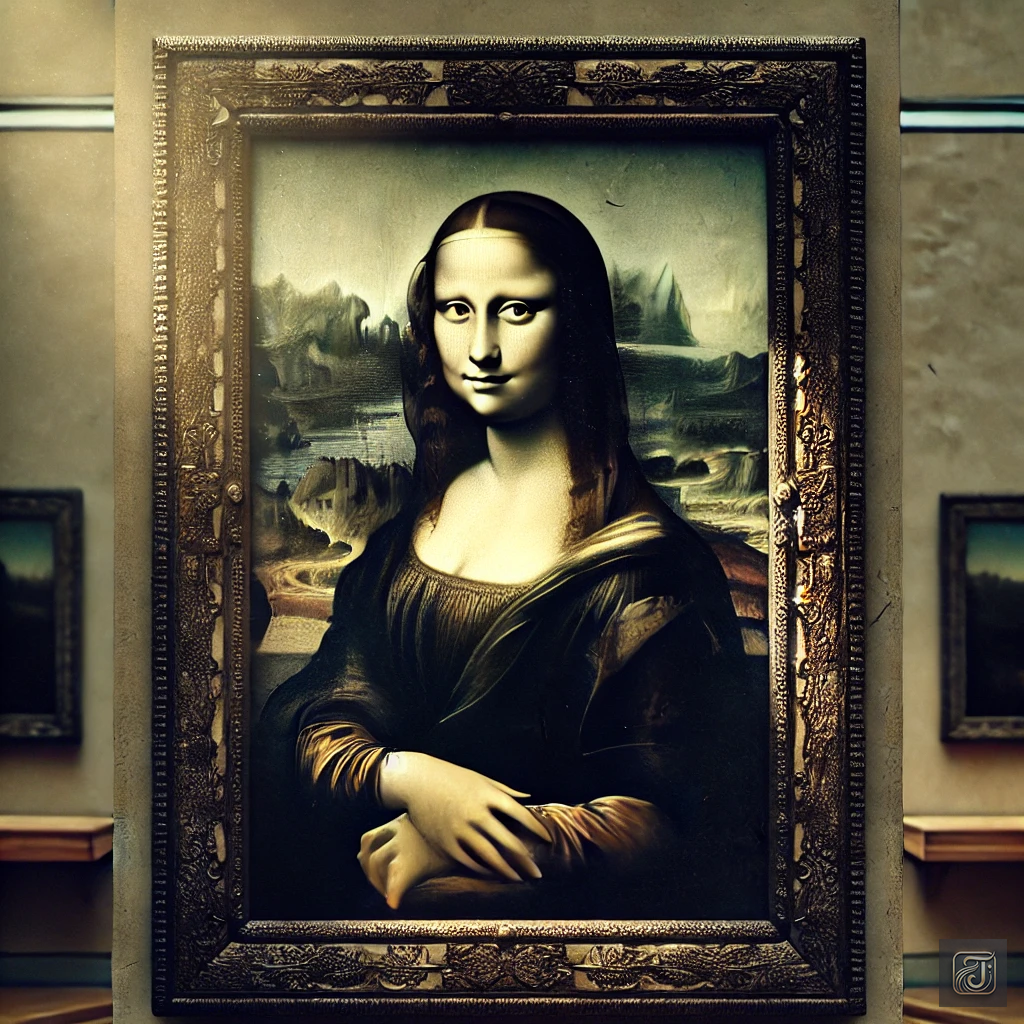
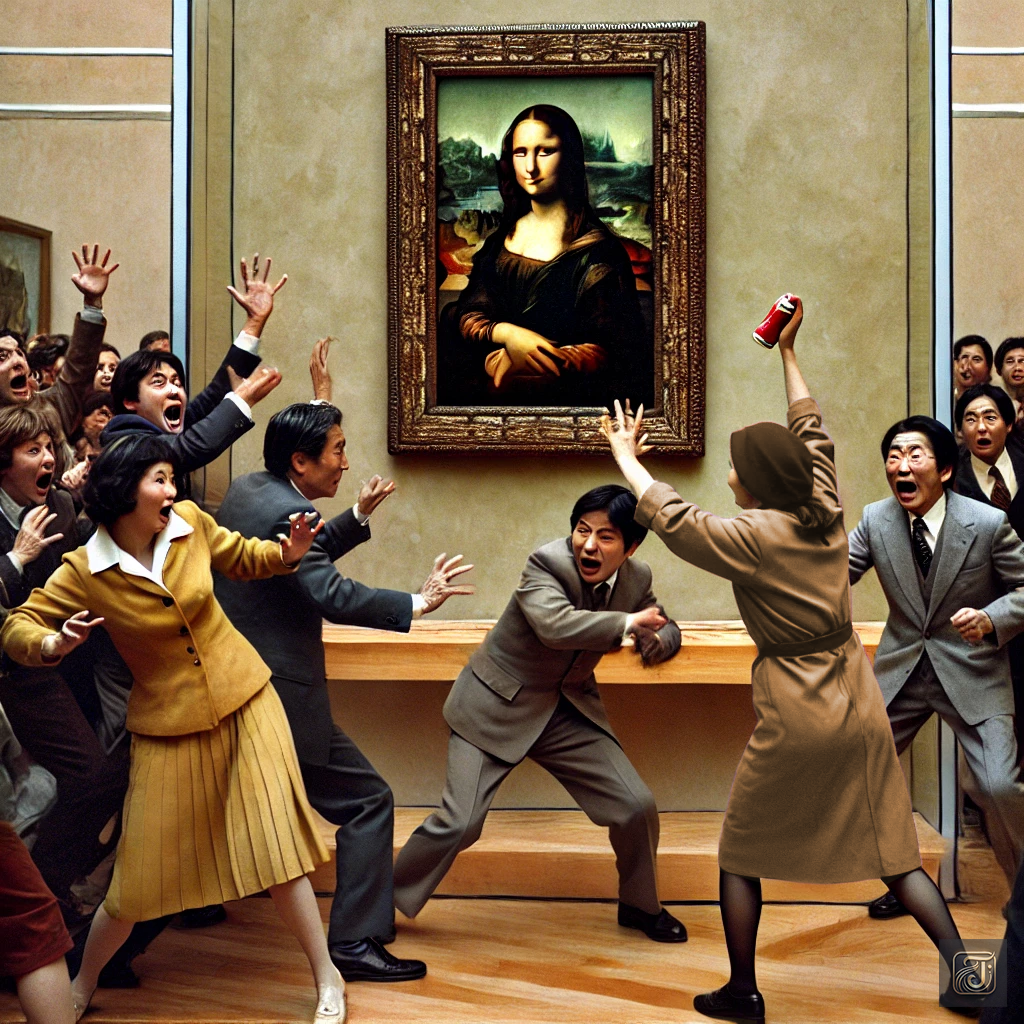

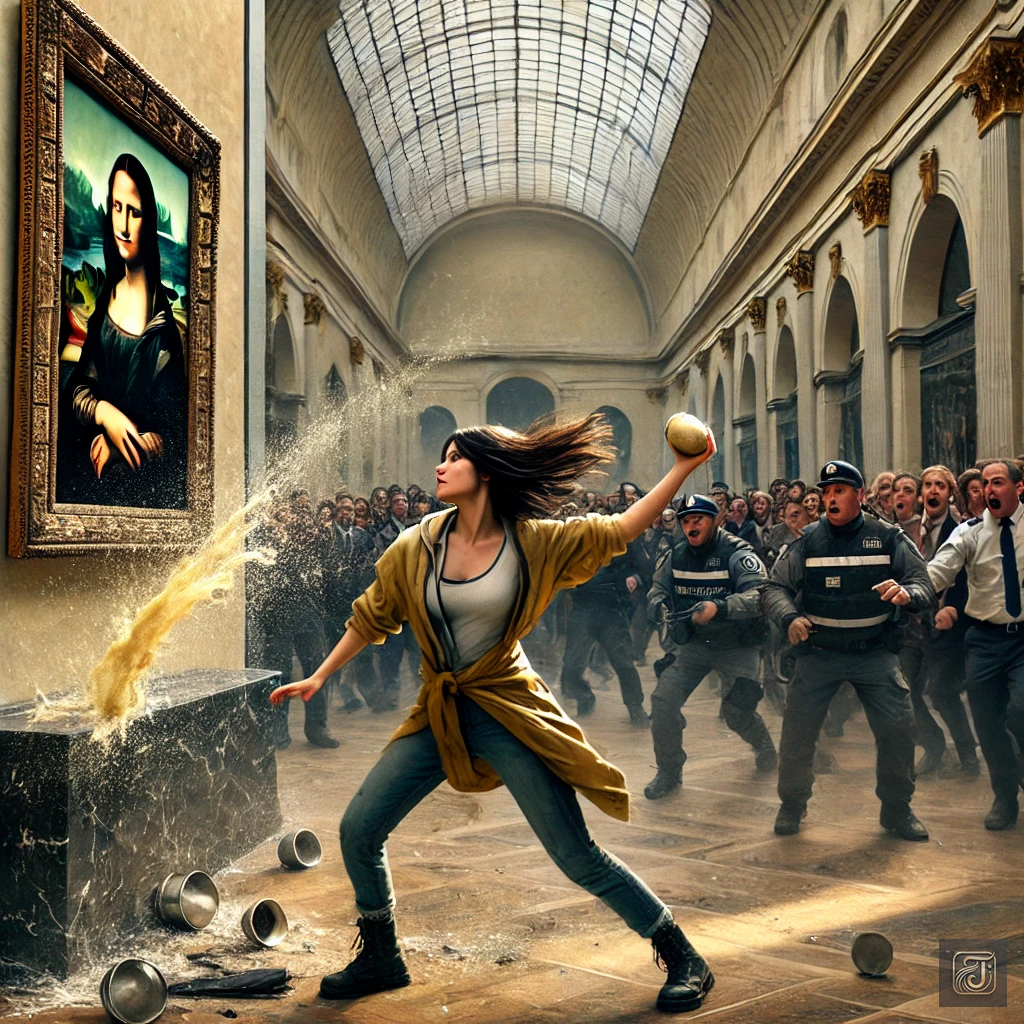
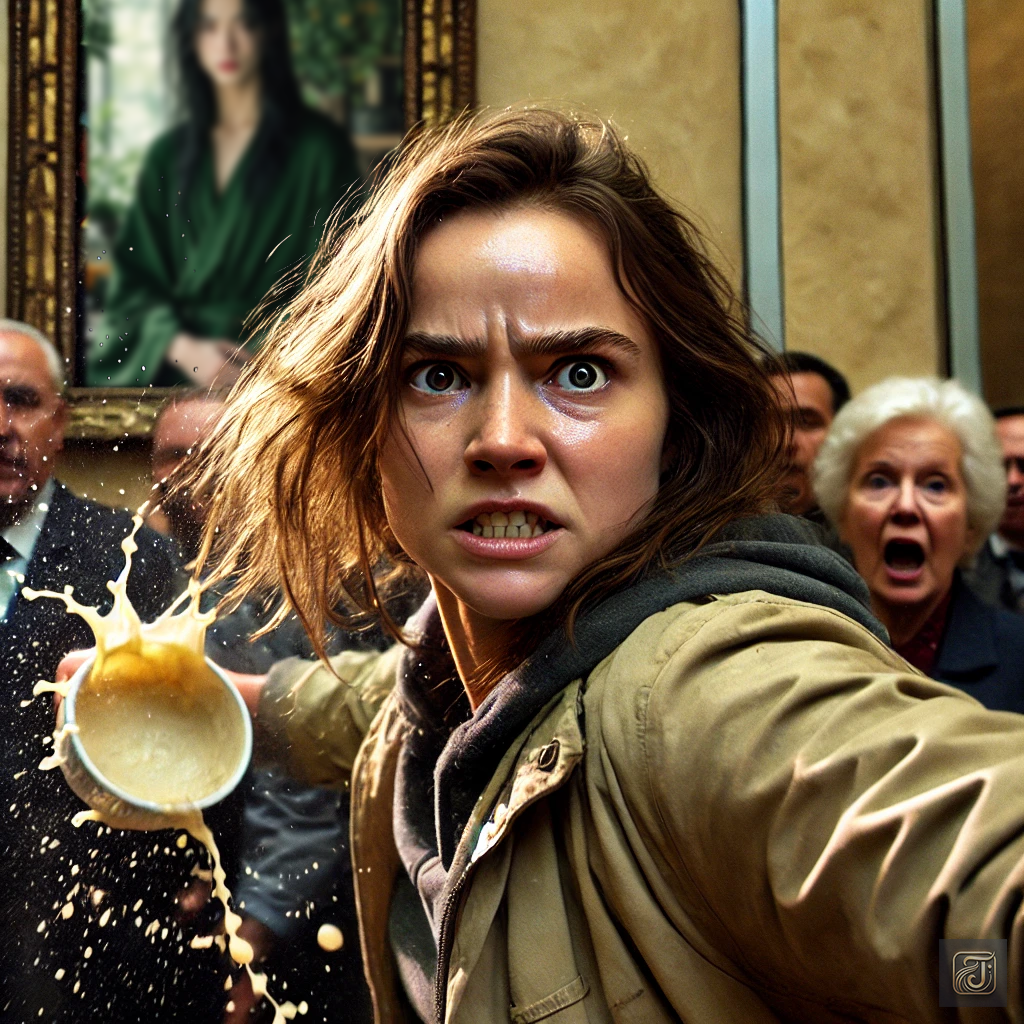
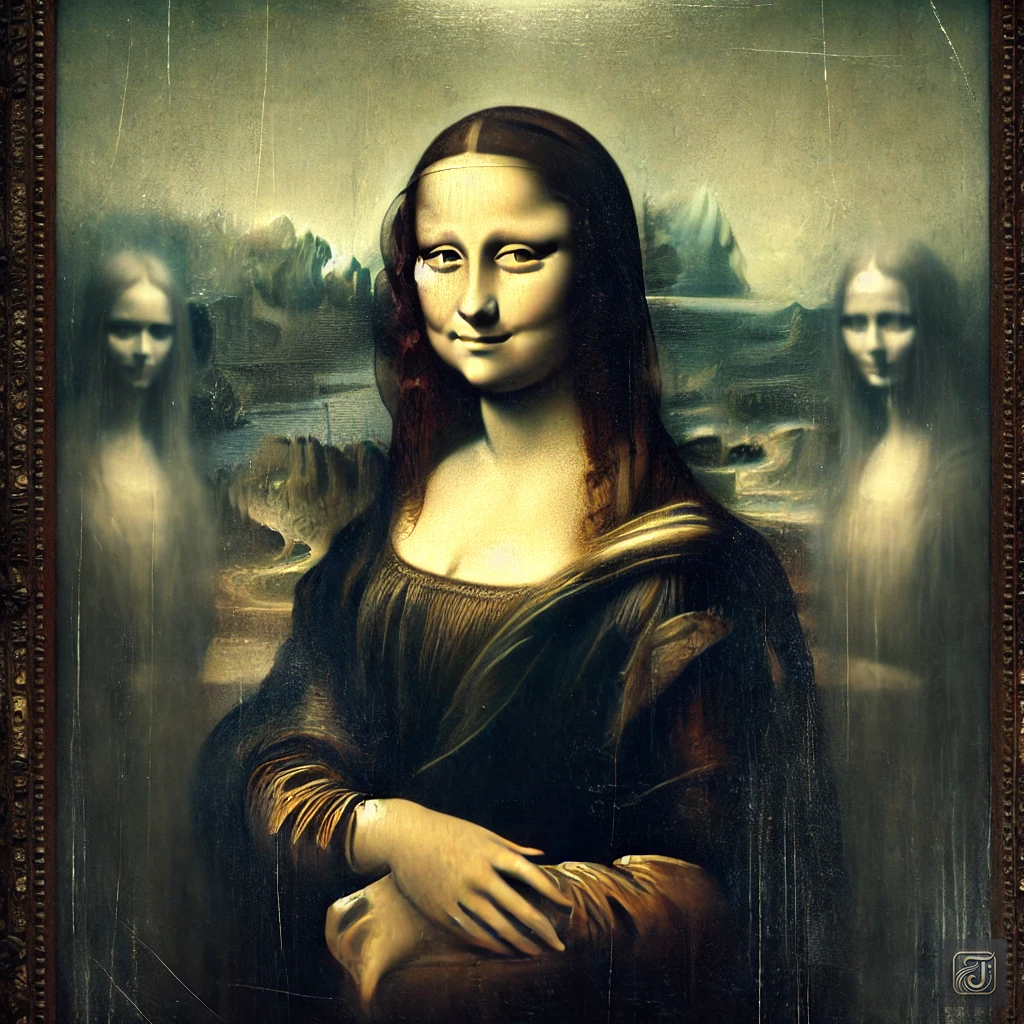
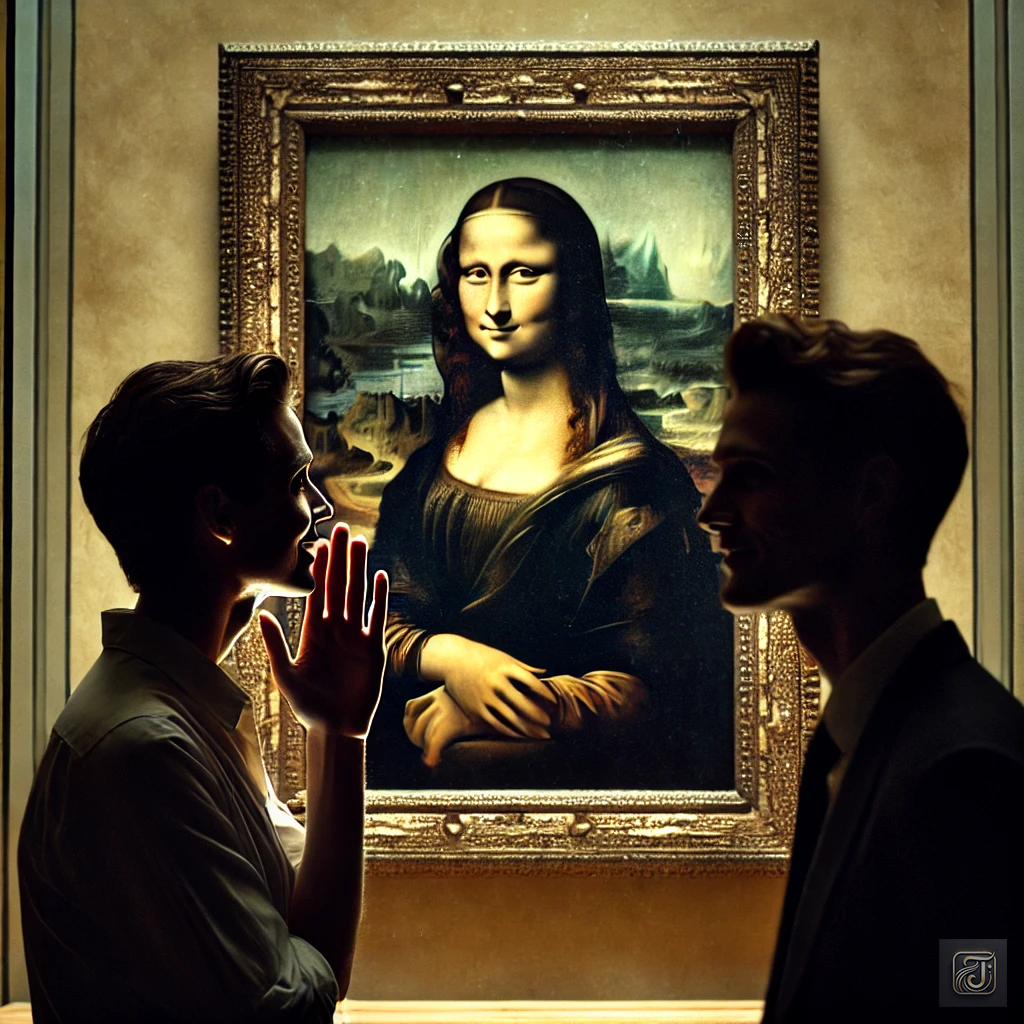





Comment